
It’s that time of year when all the water loving flowers bloom and with 22 out of 30 days in June rainy, they’re loving life and blooming well, as this pickerel weed shows. I usually like to show a closeop of the fuzzy flowers with their yellow spots but water levels in all the ponds are high enough to keep me from getting close enough. This group grew just off shore but was still in two feet of water.
Pickerel weed as the story goes, gets its name from the way pickerel fish hide among the stems. Like so many stories I always thought that though there might be some truth to it, it had probably been “enhanced” over the years, so I always took it with a grain of salt. Then one day I happened to be walking by a fisherman whose rod suddenly bent almost double. I stopped and watched as he reeled in a good sized pickerel that had put up quite a fight. He thanked me for bringing him luck even though I had done nothing, and I asked him where the fish had taken his bait. “Right out there in those pickerel weeds,” he said.

American bur reed has just come into bloom. The spherical bur like parts are its flowers. This plant grows in shallow water near shore and can form huge colonies that can take over small ponds. There are two types of flowers on this plant. The smaller and fuzzier staminate male flowers grow at the top of the stem and the larger pistillate female flowers lower down. Even the larger flowers are less than a half inch across. After pollination the male flowers fall off and the female flowers become a bur-like cluster of beaked fruits that ducks and other waterfowl eat.

If you spend time near ponds in summer in New Hampshire you’re going to see plenty of dragonflies, like this twelve spotted skimmer. To get to 12 on this one you count only the dark wing spots, not the white ones. Skimmers usually fly just above the water looking for flies, mosquitoes, beetles, and other flying insects, but the name “skimmer” comes from the way they can scoop up water to help with egg laying by using two flanges on the underside of the abdomen. This one was perched on shore and would fly out, circle, and return to its perch. All I had to do was be still, watch, and wait.
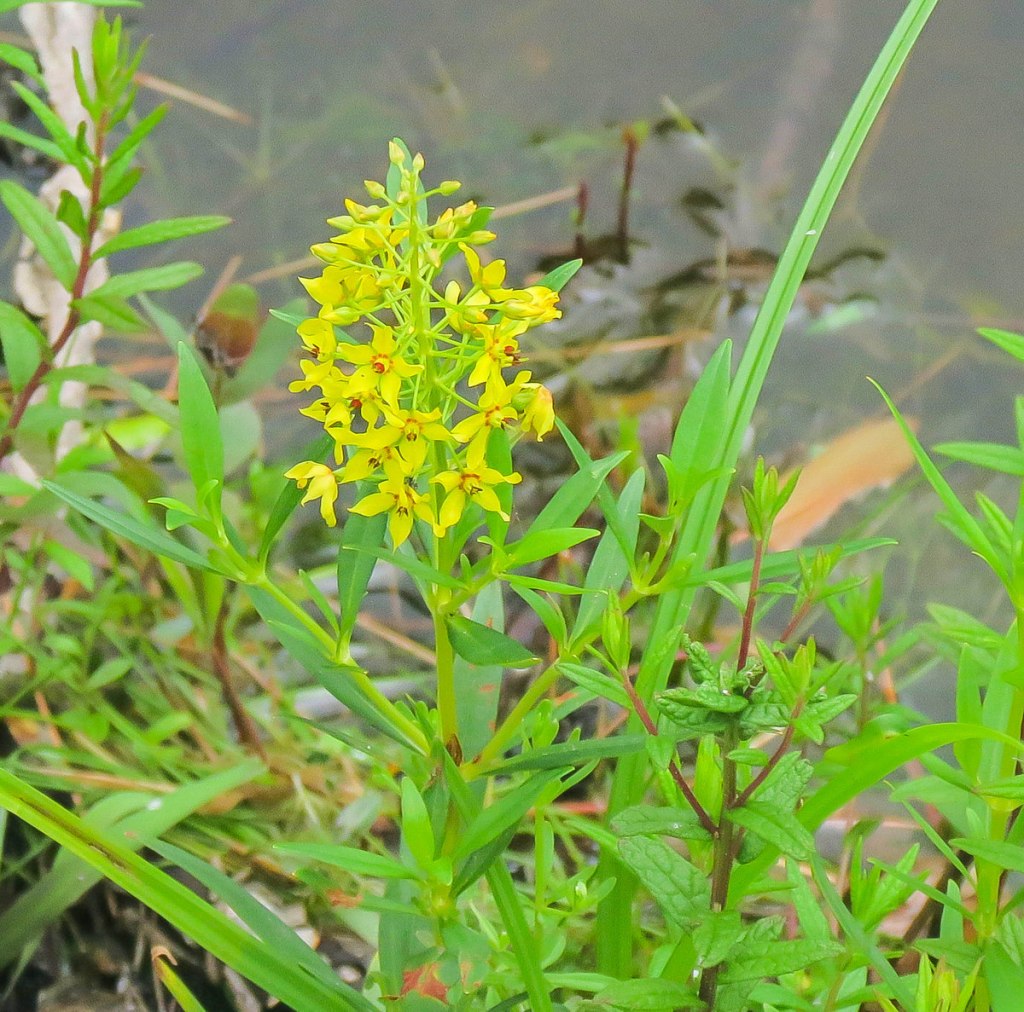
Swamp candles is the name given to one of our yellow loosestrife species. Though most grow on dry land this one prefers to have its feet wet and it is often found growing just off shore where the ground is more mud than soil. It grows to about knee high and can form quite large colonies. I also see it in ditches and at the edge of forests where the soil stays very moist. The plants pictured here were growing in water at the very edge of where the land met the water.

If you look closely you usually find at least a bit of red somwhere on a swamp candle flower, and on other yellow loosestrife flowers as well. They’re very pretty, even from a distance, and they do indeed light up a swamp or anywhere else they grow.

Joe Pye weed isn’t blooming quite yet but it’s still beautiful with its purple leaves. It is said that the color is there to protect the new growth from sunburn but it will quickly fade to green once the leaves become accustomed to the bright sunlight. The plant almost always grows near water and is known for its large, dusty rose flower heads that butterflies and bees love. There are two legends about the origin of its name. The best known says Joe Pye was the name of a Native American healer who used the plant to heal, and the second says that the true name is Jopi, which is the native name of the plant, not the healer. I’m more inclined to believe the latter version but in the end I don’t know and it really doesn’t matter. The moment now when I become lost in its beauty is all that matters.

I was walking through some knee high growths of grasses, sedges, and rushes at the edge of a pond and up flew a widow skimmer. I wasn’t thinking of dragonflies at the time but I shouldn’t have been surprised because I’ve read that off in the knee high growth near water is just where this dragonfly likes to be. I’ve noticed by watching them that they like to hang or perch vertically as this one did. I’ve read that females don’t have the white patches on their wings like this one displays. They are called “widows,” it is said, because the males don’t guard the females while they’re laying eggs like other dragonflies do. This one might be an immature male.

I thought I might see a frog to include in this post and I saw many just as they jumped into the water, so instead I settled for a slower moving turtle. Something about this one seems odd to me but I can’t put my finger on what it is. It’s as if there is too much yellow on it, or maybe that the yellow seems brighter than usual, I’m not sure. Maybe its just me and this turtle looks just the way it should. It’s always funny how you can see something like this thousands of times and then one day you pick something out that makes it seem like you’re seeing it for the first time.

One of my favorite wet feet, swampy flowers has just come into bloom and I’m happy to see it. I’m told that blue vervain is actually purple but I didn’t name it. Native Americans had many medicinal uses for the roots, seeds, and leaves of this plant. Its leaves were dried and then used in a tea that was used as a spring tonic. Seeds were roasted and ground into flour, and the roots were used to ease headaches and calm the nerves. I’ve read that even the flowers can be eaten in salad, but I’ve also read that ingesting the plant can interfere with some blood pressure medications, so as is always the case when using wild or unknown plants, care should be taken.

Cattails are flowering and since a single stalk can produce an estimated 220,000 seeds, it looks like a good year. Female green flowers appear near the top of the tall stalk and the fluffy yellowish green male pollen bearing flowers above them. Once fertilized the female parts turn from green to dark brown and the male flowers will fall off, leaving a stiff pointed spike above the familiar cigar shaped seed head.
Cattails were an important food for Native Americans. Their roots contain more starch than potatoes and more protein than rice, and native peoples made flour from them. They also ate the new shoots in spring, which must have been especially welcome after a long winter of eating dried foods. They had uses for every part of this plant; even the pollen was harvested and used in bread.

One of the most unusual and rare aquatic plants in this area is the water lobelia. I’ve seen it in just one spot and that might be because it is said to be a more northern species. It is said to be an indicator of infertile and relatively pristine shoreline wetlands. The small, pale blue or sometimes white flowers are less than a half inch long and not very showy. As is true with larger lobelias like cardinal flowers, the bases of the 5 petals are fused into a tube and the 2 shorter upper petals fold up. I’ve read that the flowers can bloom and set seed even under water. The seed pods are said to contain numerous seeds and that might be why I saw that there were many more plants this year than there have been in the past.

Chalk fronted corporal is kind of a tedious name for a dragonfly but as I’ve said; I don’t name them. I keep taking photos of this one so I can show you the “corporal stripes” that give it its name and you can just see them there behind the head. It’s not a great shot of the stripes but since I can’t get one to face me it’ll have to do. I’ve noticed that many dragonflies prefer having me behind them or off to the side, not face to face. The white on its body does look chalky so that fact along with the stripes makes its name sensible, even if it is a little tedious. This dragonfly is another skimmer; one of the “king skimmers,” so called because of the way they dominate dragonfly activity at a pond. I’ve seen them chase off many other dragonflies that I was trying to get shots of so again, the name fits. I like to see the patterns in a dragonfly’s wings and these are quite beautiful.

This shot is for those who’ve never seen a fragrant white water lily bud.

Those buds will open into what I think of as the queen of the aquatics, which is the beautiful waterlily seen here. I saw something strange happen this year, speaking of water liles. A small fire pond next to a shopping center is full of fragrant white waterlilies and that’s my usual “go to” spot when I feel like taking photos of them. I went one day and decided it was just too cloudy to do anything worthwhile. Then a couple of days later after some heavy rain I went back to find that the water level of the pond had risen so much not a single flower could be seen. Were they all under water? I don’t know; I’ve never seen it happen before. Hopefully they’ll bloom again when the water level drops.

I call it frog jelly but a more correct name would be frog spawn. How it got on top of this lily pad I don’t know. If you click on the photo and look closely you can see tadpoles, but I wouldn’t think they’d be doing very well under the hot sunshine we had this day. By the way, you can buy jars of frog jelly online. I didn’t read the ingredients, and I’m not really sure I want to.

I believe this dragonfly is another skimmer called the slaty skimmer but I’m not sure because of its blotchy body color. Mature males have dark blue bodies and black heads but since the blue coloration is a bit splotchy on this one I think it must be an immature male growing into its adult body color. In any event it’s a beautiful dragonfly and is supposed to be another “king skimmer,” even though I’ve seen the chalk fronted corporals chase them off many times.

From a distance I thought I was shooting another slaty skimmer but then I saw the white “spangle” on its wing in the foreground and I realized it was a spangled skimmer. It’s hard to see but there is a black spangle on the outside leading edge of the wing and a white one on the inside, toward the body. The spangles are called pterostigmata, which is why I call them spangles. This dragonfly, if I understand what I’ve read correctly, is a mature male. Its blue color shows that; immature males and females are brown with yellow stripes. It was amazingly hot and humid when I was taking some of these photos but it didn’t seem to bother the dragonflies.

I always feel fortunate when I find floating heart plants growing close enough to shore to get photos of them, but even then I have to use a zoom lens. This is our smallest water lily, with small, heart-shaped, greenish, or reddish to purple leaves that are about an inch and a half wide. They are what give the plant its name. The tiny flowers of floating heart are about the size of a common aspirin, but never seem to open fully. I look for them in shallow, still water but they aren’t common. I saw a lot of insects visiting the flowers on this day and I was thinking that the flowers might not open fully so water doesn’t get in. The cup shape might prevent some splash over.

Floating hearts grow a foot or two (sometimes more) off shore and in this spot forget me nots grew in the water right at the shore line. The forget me nots were so lush and tall they actually kept blocking my shot of the floating hearts. I never thought much about forget me nots and water until I saw them at this spot a year or two ago. Since then I’ve remembered the time I found a huge colony of thousands of plants growing on a river bank that floods regularly, so there is no doubt that these plants like a lot of water.

Pale St. Johnswort flowers are sometimes quite pale and at other times bright, lemon yellow, but they always seem to grow new branches just under the terminal flower cluster, as can be seen here. The plants are usually in colonies where they grow, with some right at the water’s edge and others a foot or two away. The plants grow to about shin height with flowers that are about half the size of a standard St. Johnswort, or about a half inch across. I’ve never seen this plant grow anywhere but in or near water on pond shores or in wetlands.

I’m far from being an authority on insects but most of the dragonflies in this post are fairly common so I didn’t think any of them would trip me up. Until I met this one, that is. At first I thought it was an eastern pondhawk because of the powdery blue color, but they don’t have amber on their wings, so it couldn’t be that. You can see how the leading wing edges are colored amber and they’re the same color where they meet the body. I have a bad shot that shows yellow on the side of the body, so I’ve settled on the yellow sided skimmer, and I think it’s an immature male. If I’m wrong with this or any other dragonfly identification I hope someone will let me know.
NOTE: Thanks to some help from a friend I went and looked up blue dashers, and I think this dragonfly is one of those. They have the same amber on the wings and other features match the male blue dasher as well. Thanks Georgette!

This looks like a side view of the yellow sided skimmer in the previous shot but there is no amber on the wings, so that can’t be it. It has white appendages (ceri) at the very tip of its “tail,” its wings are clear and it has a greenish thorax, which is the part where the wings meet the body. It has a green face and blue green eyes, and likes to perch on the ground, so all of that points to an immature male eastern pondhawk. Males are at first green, slowly changing to powdery blue over several weeks, and this one had apparently almost completed the process. Pondhawks are said to be “ferocious hunters” which will eat just about any other insect, including other dragonflies and damselflies. Though they’re found near water they can also be found in meadows, away from water. I sat and watched this one fly off and return to this spot a few times but I never saw it eating. It was tough to get a clear shot of it with such a busy background so I was hoping it would land on a twig or leaf, but it never did.

One of my favorite “pond flowers” is swamp milkweed. It normally grows a few feet from the water up on shore but this year for the first time I found it growing in the water of a slow moving stream. It’s a beautiful thing that always reminds me of millefiori paperweights. Millefiori means “thousand flowers.” I have a small paperweight collection from years ago and I often think of how nice it would be to have something like this encased in glass on a desk, but as far as I know it has never been reproduced. The “flowers” seen in paperweights are sections of colored glass rods, so maybe this color is hard to get. Too bad; it would be a wonderful thing for a nature lover to see on those below zero winter days.

There are certain rare flowers that I always hope to see and one of those is the rose pogonia orchid, so imagine my surprise last year when I came upon this small bog mat / island full of them just a few yards offshore in a local pond. I was stunned, and what stunned me more than anything was how I had visited this place so many times before and never seen them. That was because I had never been here at just this time of year. Last year when I first saw them I tried a monopod and didn’t get a very good shot of them so this year I used a tripod, but still didn’t get a very good shot of them. Next year waders?

I’m showing this close up from a few years ago, taken when I went to Distant Hill Gardens in Walpole, so you can see how beautiful they are. This encounter illustrates once again why it’s important for anyone interested in nature study to get out there every day, and to revisit the same places time and again. All of life is in a state of constant change and the best way to become aware of those changes is to simply pay attention.
Next year when I see native dogwoods and tall meadow rue blooming I’ll know that the orchids should also be blooming. Great spangled fritillary butterflies will appear, blueberries will start to ripen, and elderberries will start setting fruit at the same time the orchids bloom. Life is a circle, and when it’s time to see the orchids again I’ll know by watching for these and other signs. This isn’t anything new; it’s how nomadic peoples got to a place at just the right time to find food. Nature set the table but they had to provide the transportation. Get there at the right time and sleep with a full belly. Miss it and go hungry. Learn what signs to watch for and you’ll never miss out.
Anyhow, now I know that if I want to see rose pogonia orchids in bloom all I have to do is visit this spot when I see the swamp milkweeds and the other plants in this blog post starting to blossom. I’ll be there, because they’re such a rare and beautiful thing to see. If they aren’t disturbed they should be there for many years to come.
The dome of coolness above the pond throbs with croaking. Dragonflies and damselflies pierce the slanting light that burnishes the surface of the water with fire. At the edges frogs wait to spring.
~Grace Dane Mazur
Thanks for coming by.

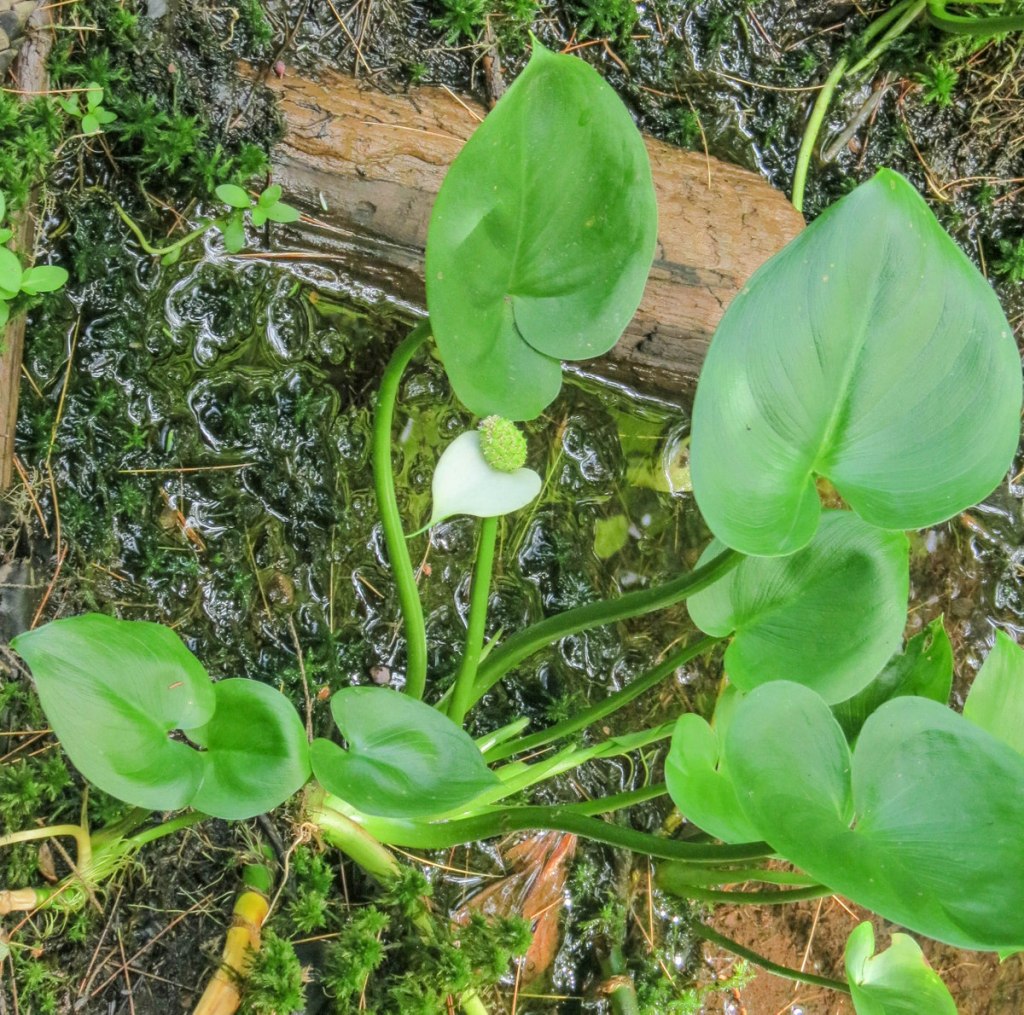


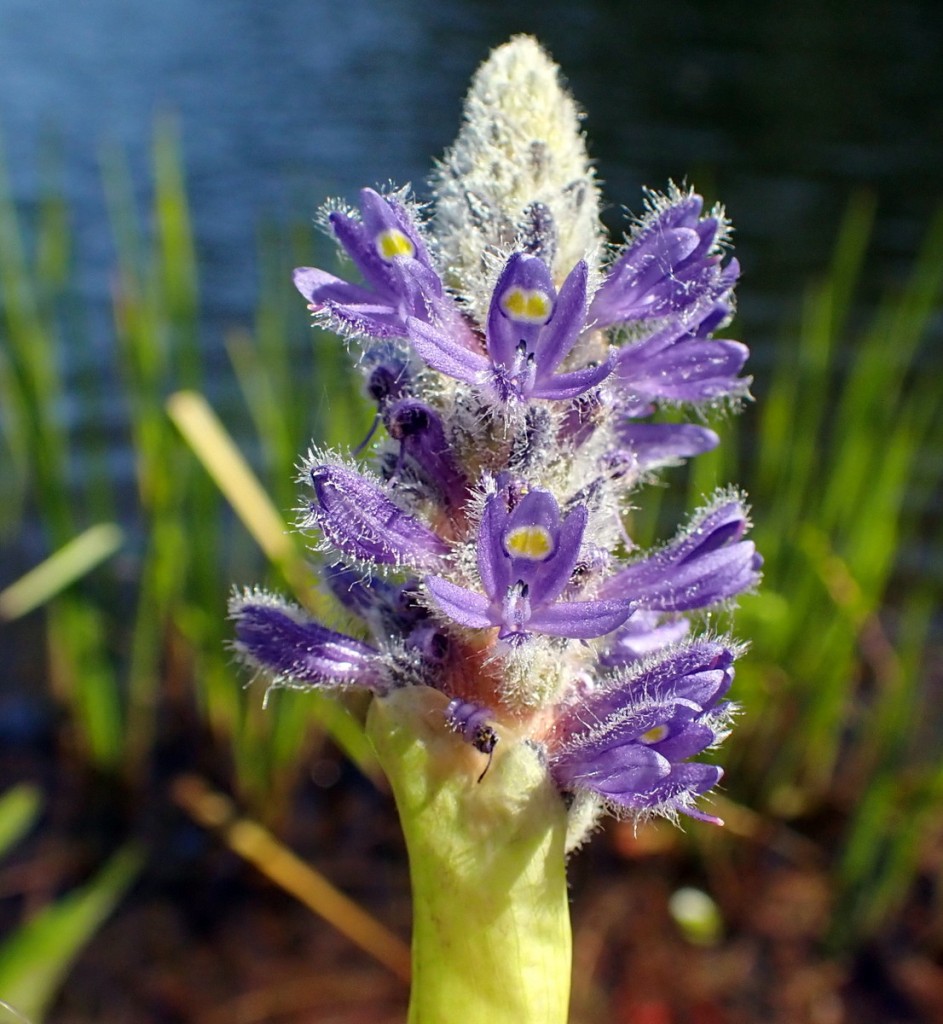







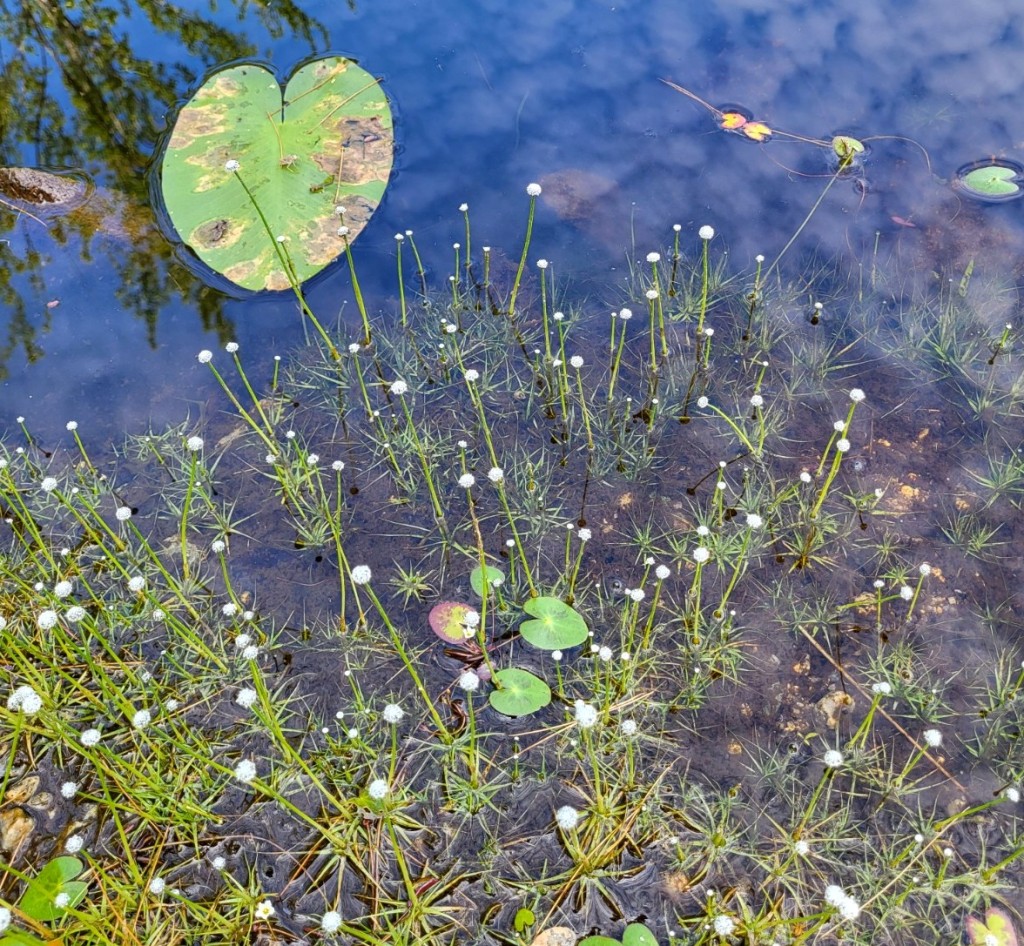



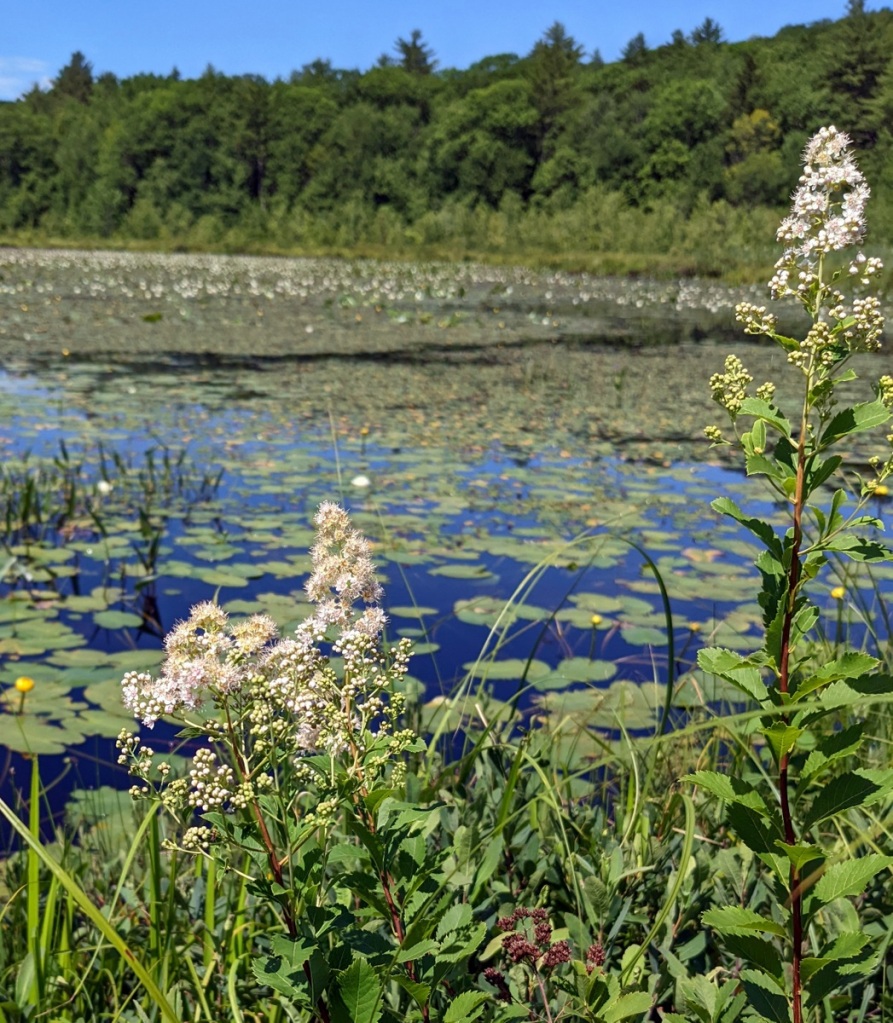





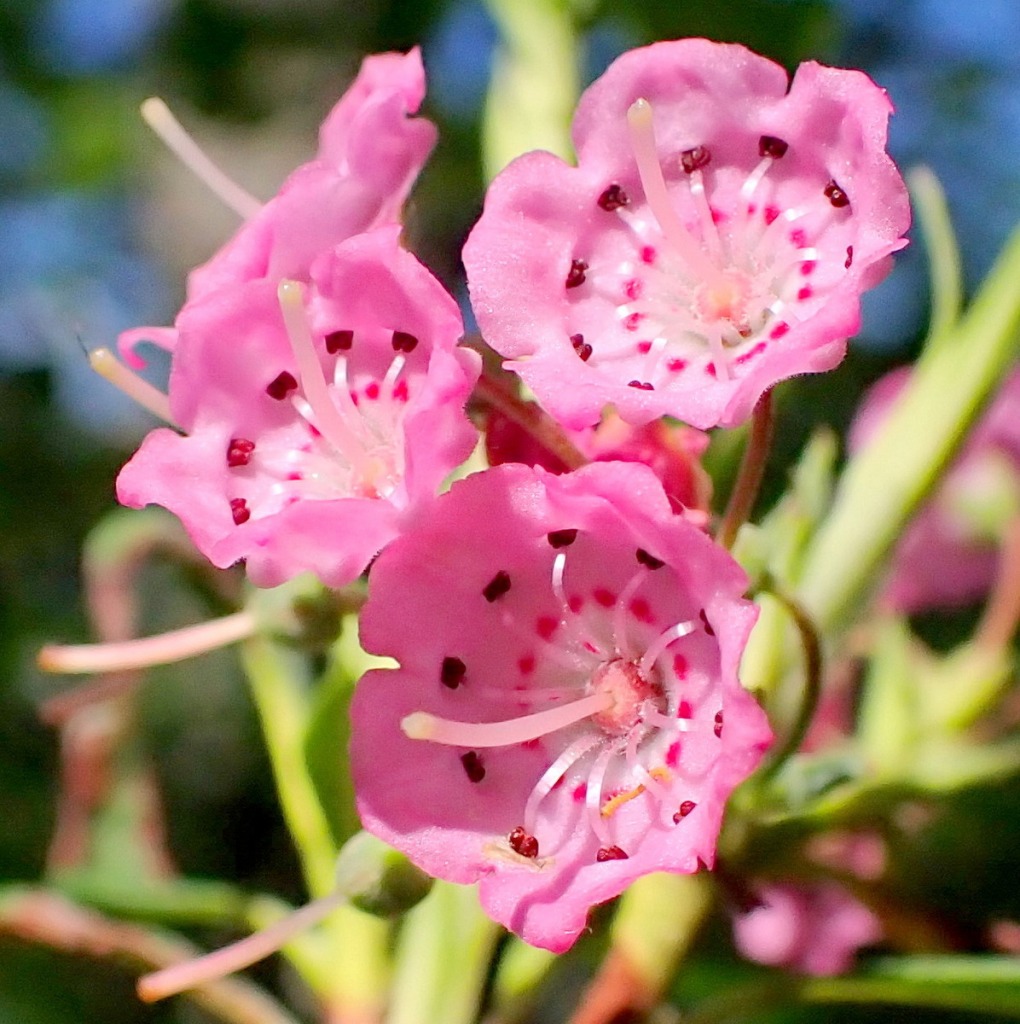

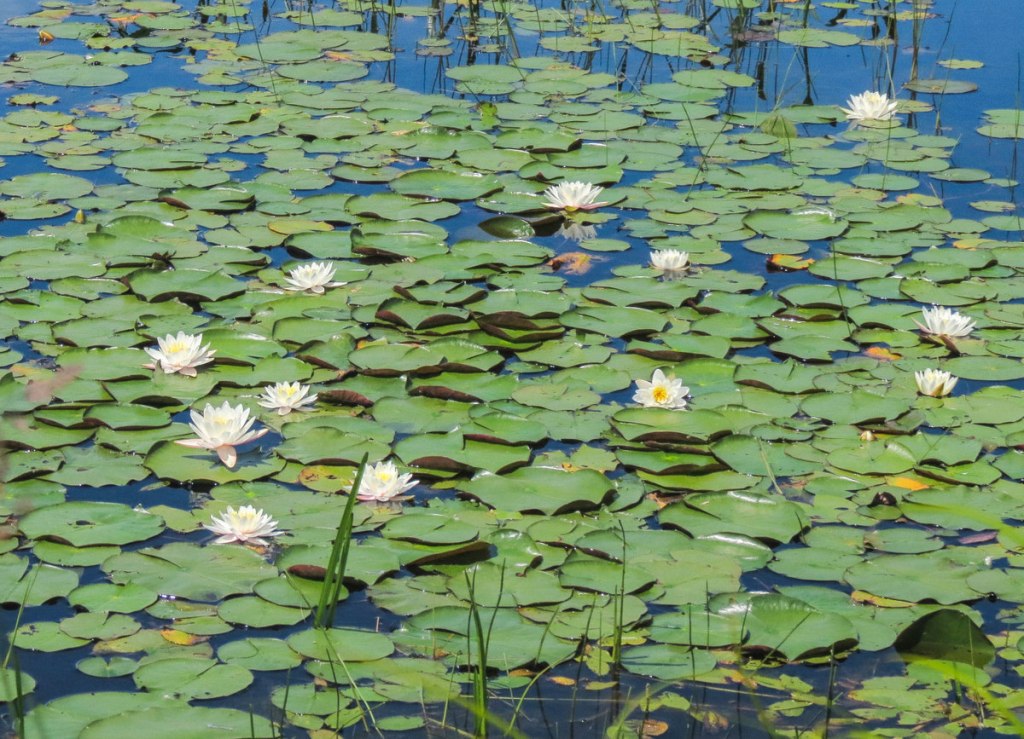
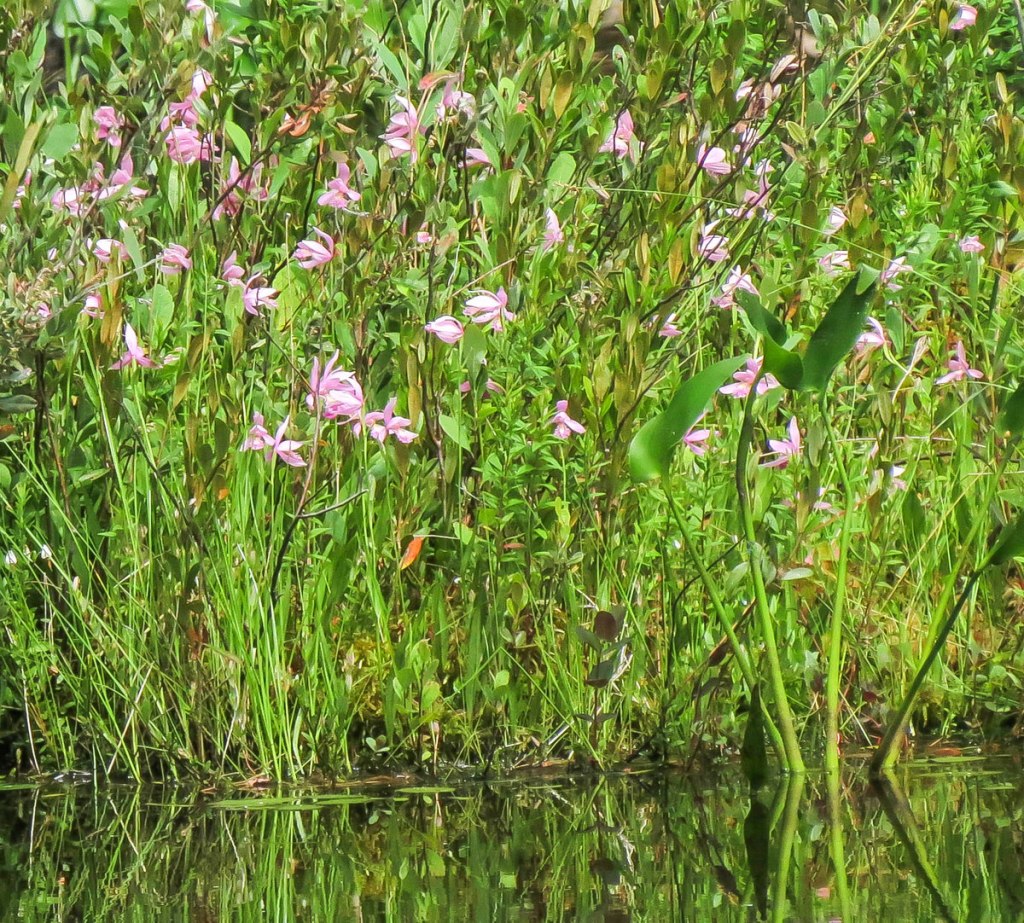





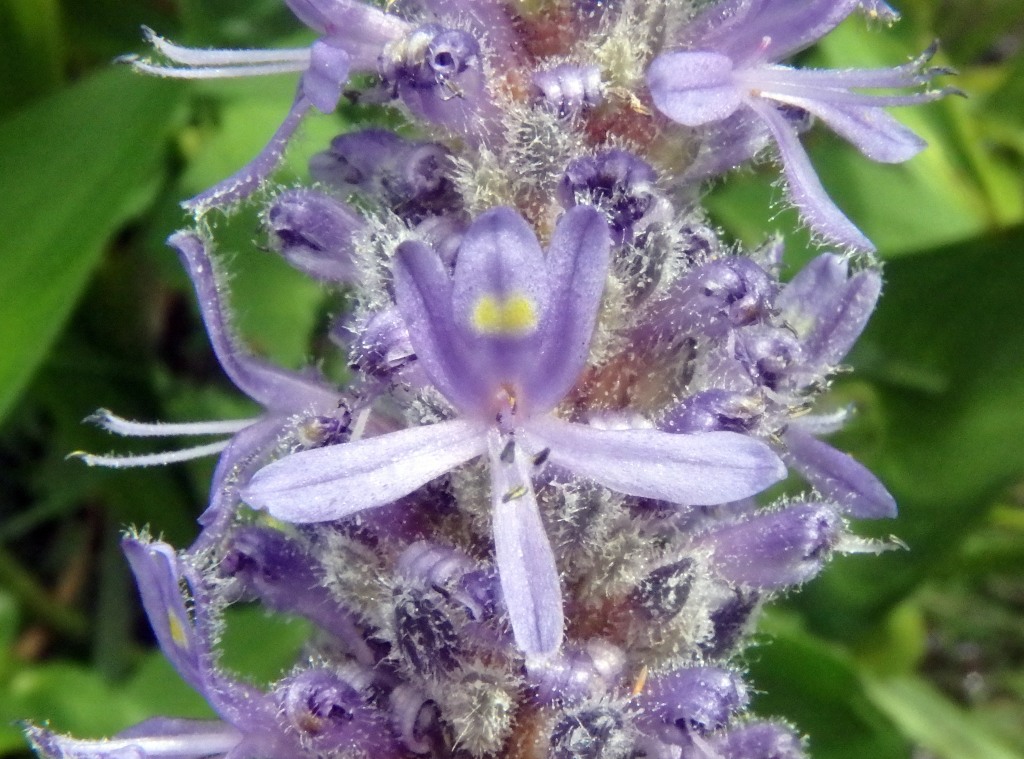

















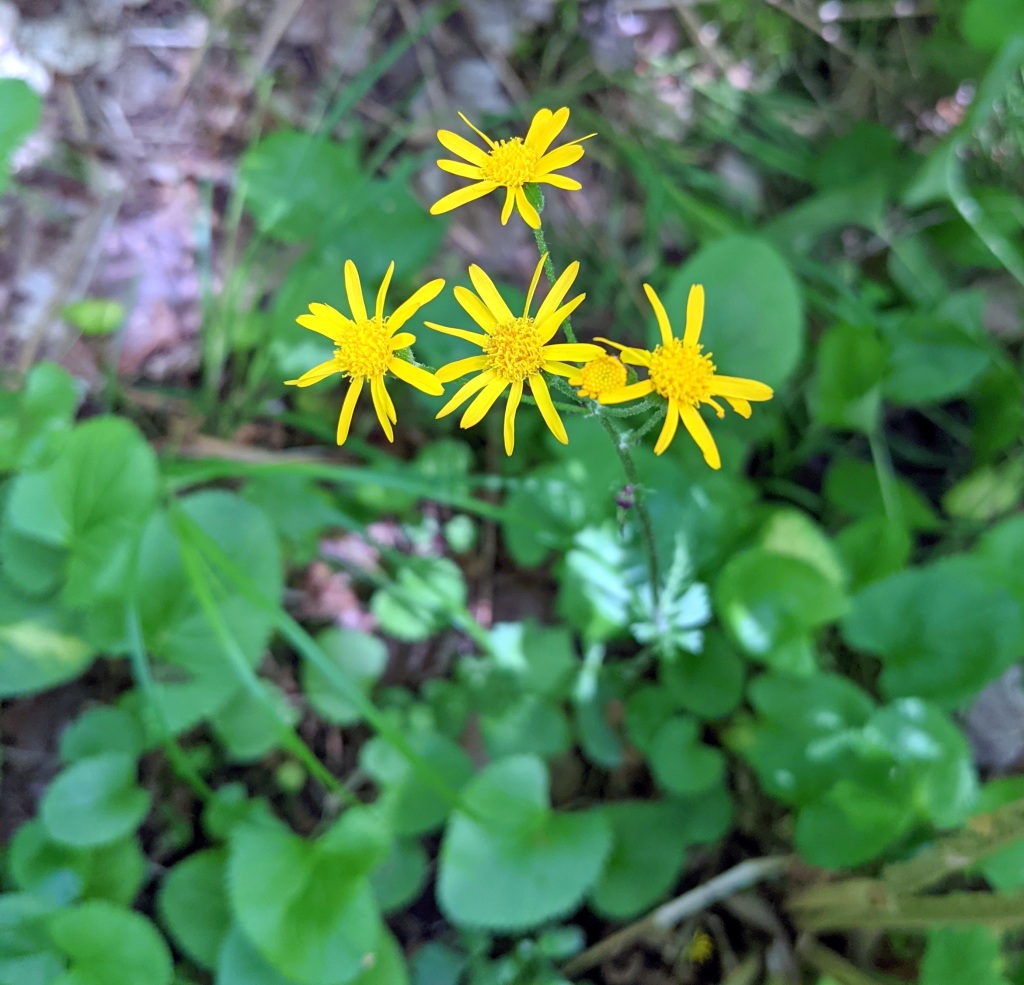






















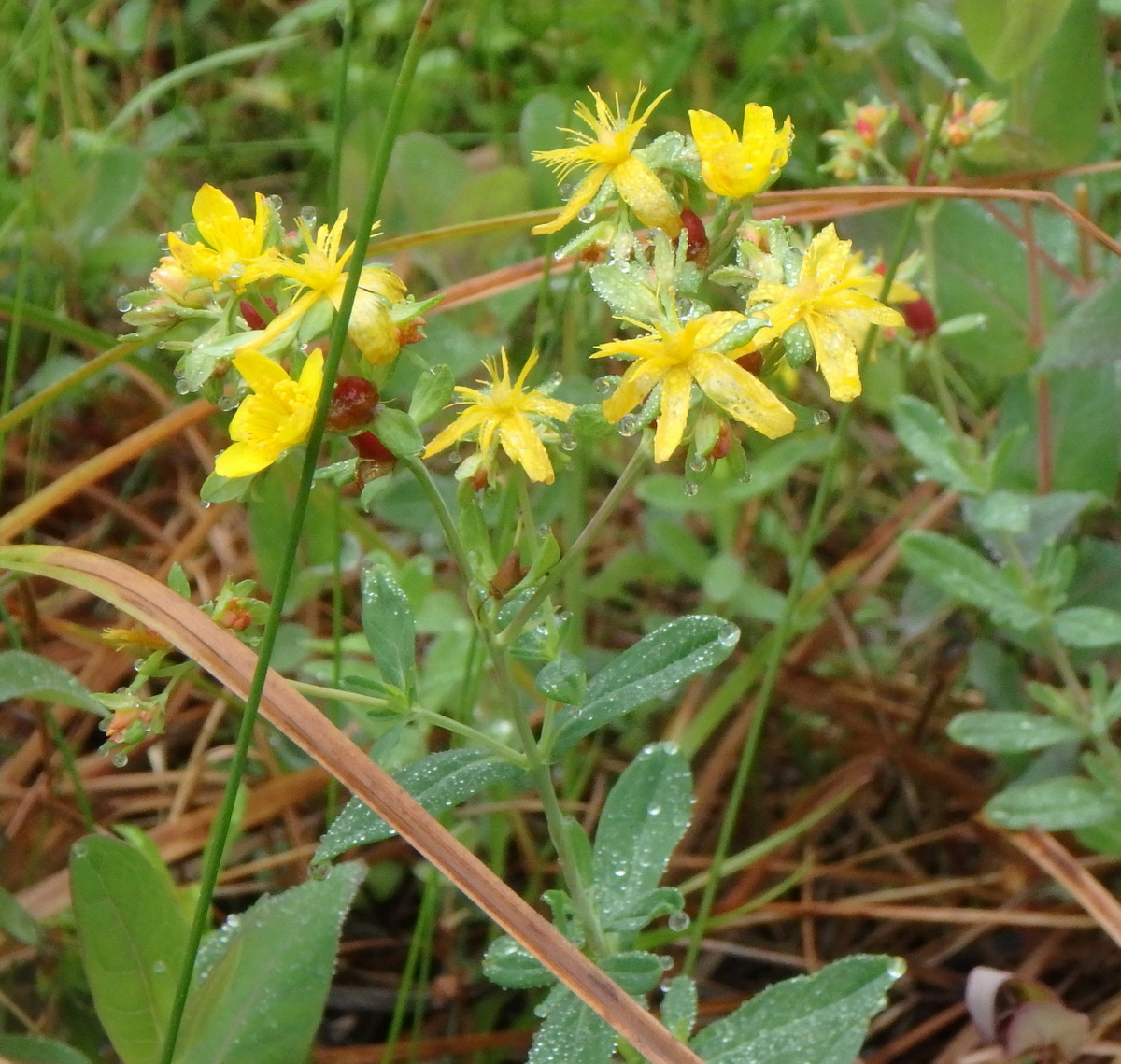


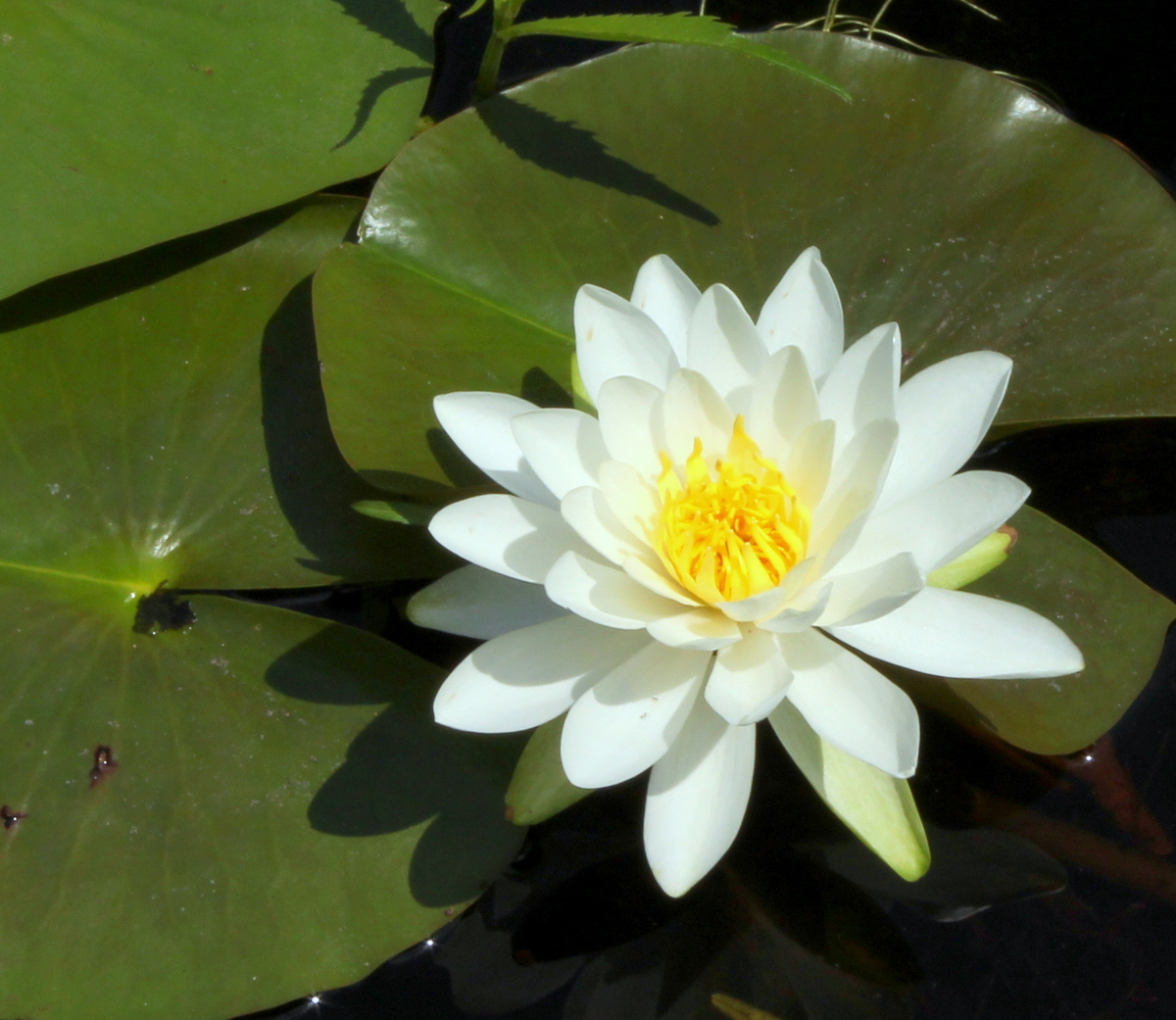



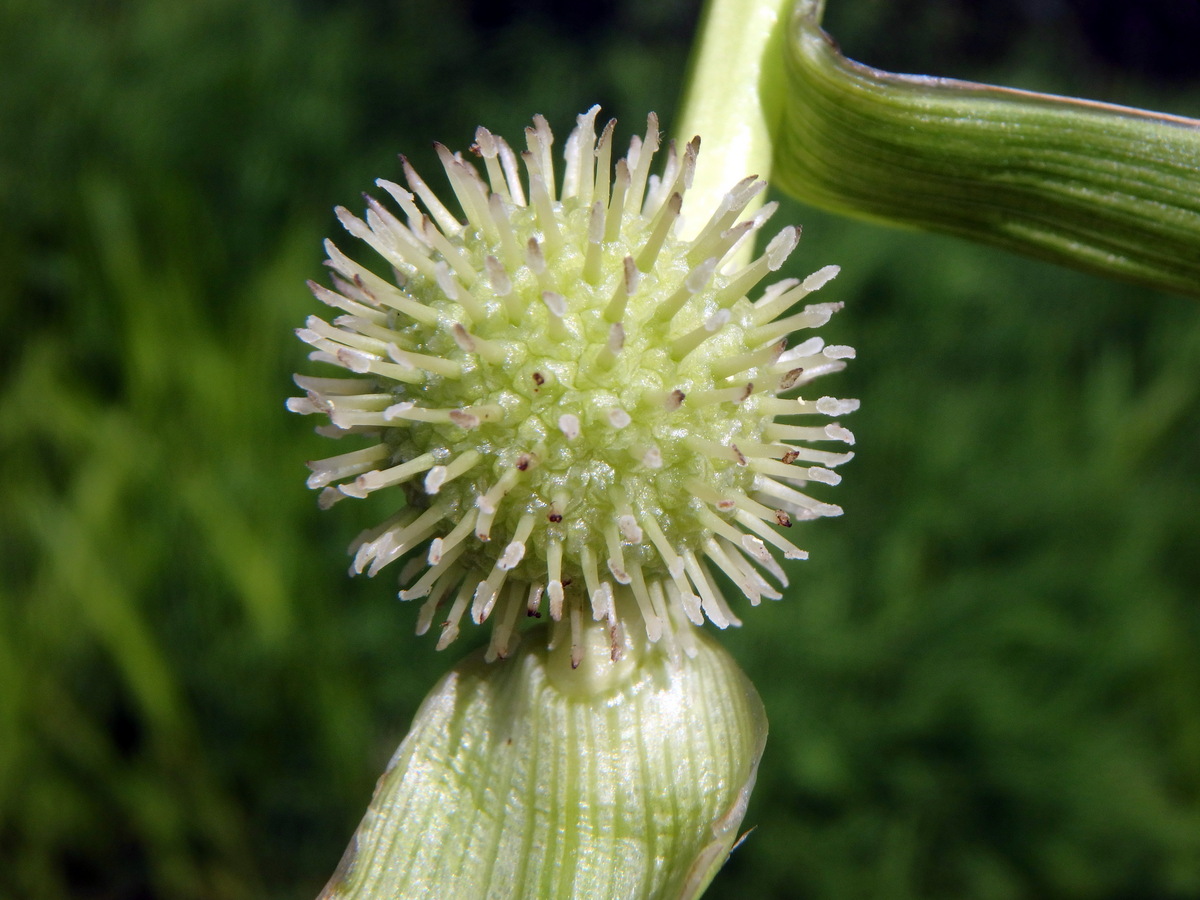





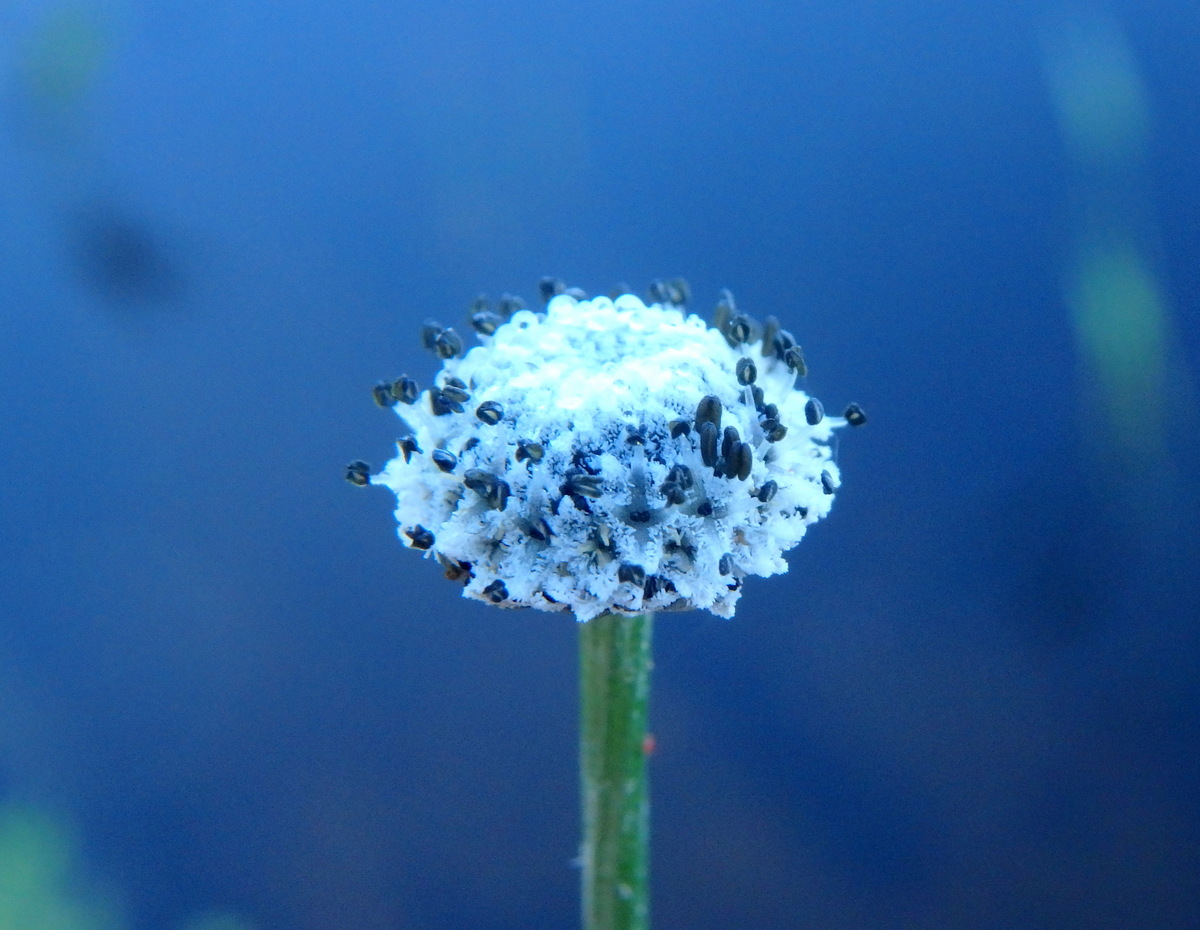



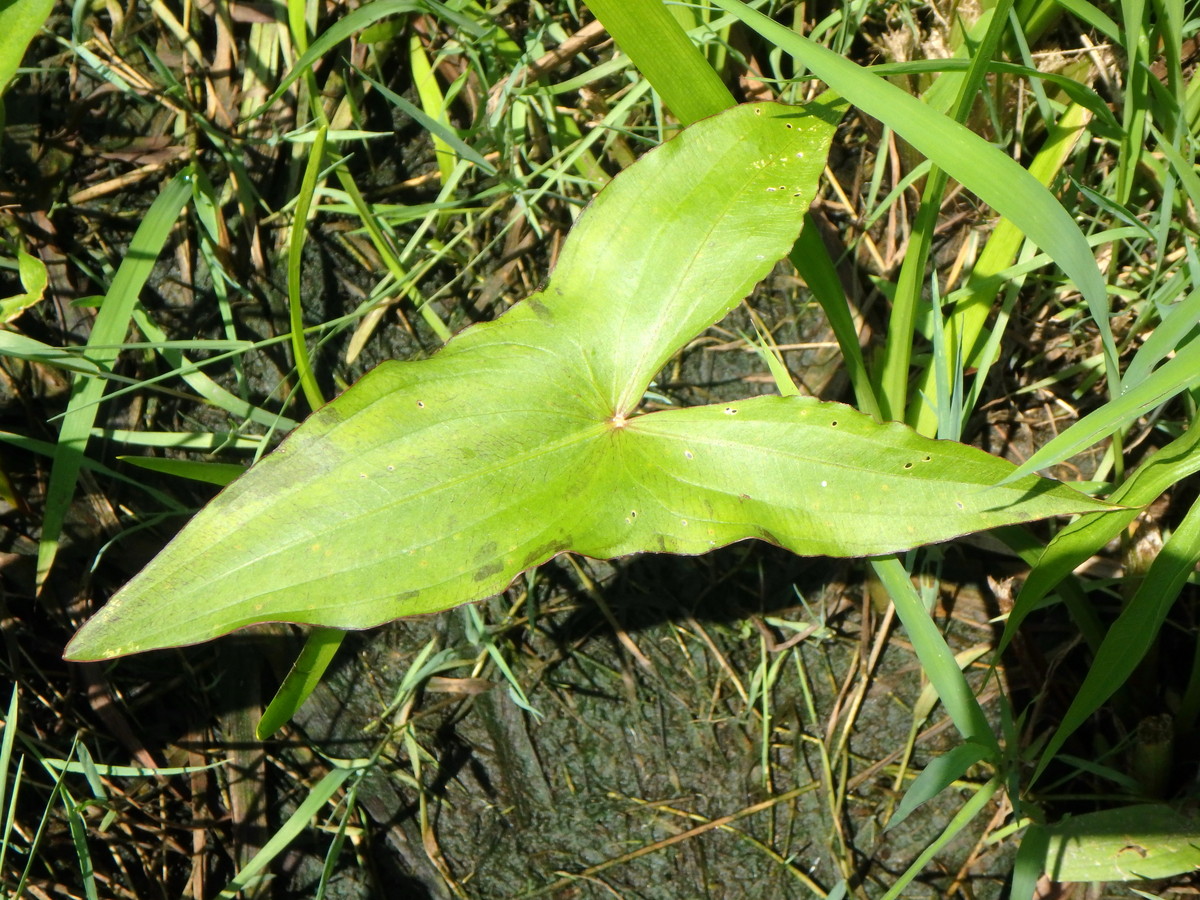
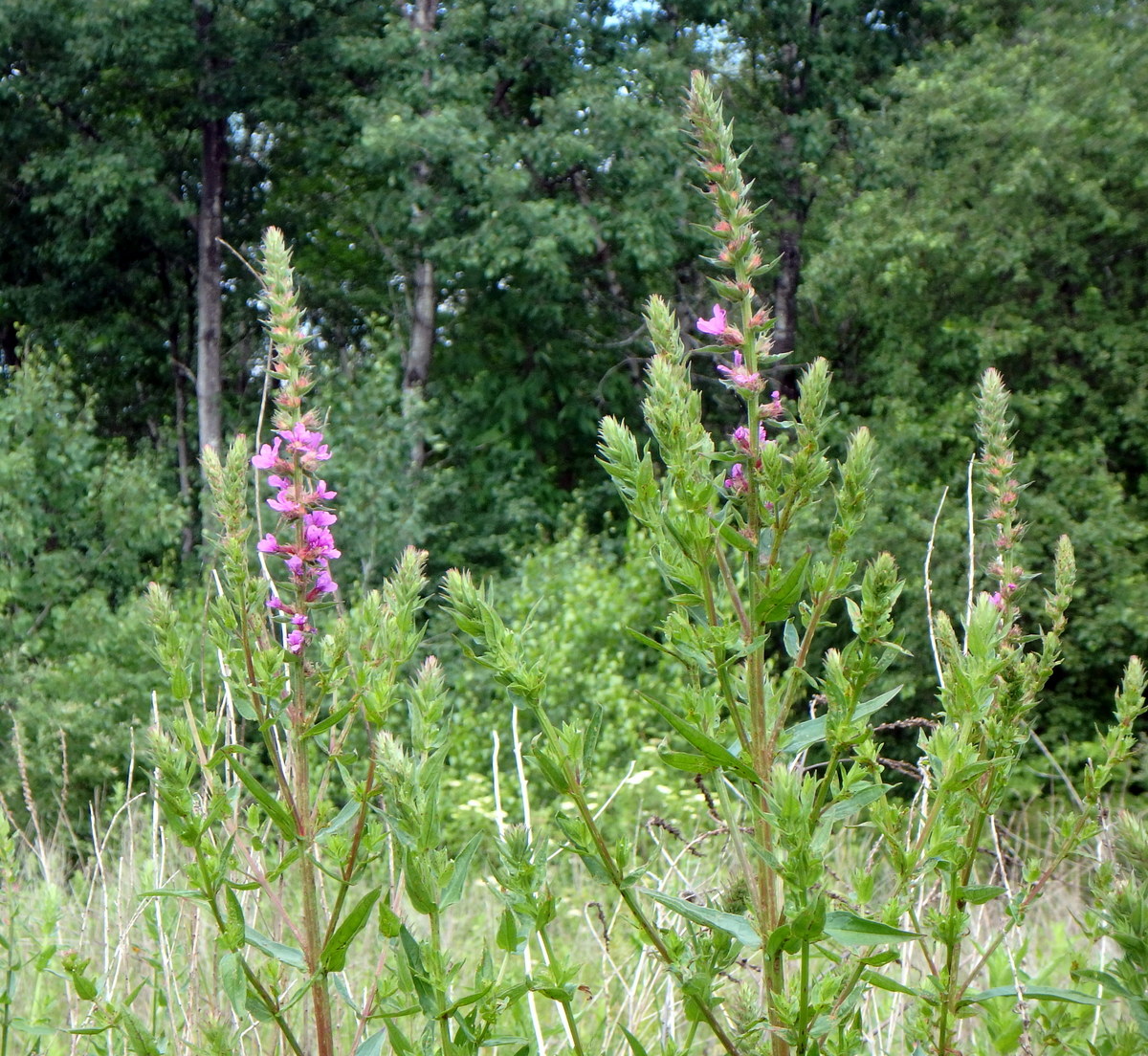





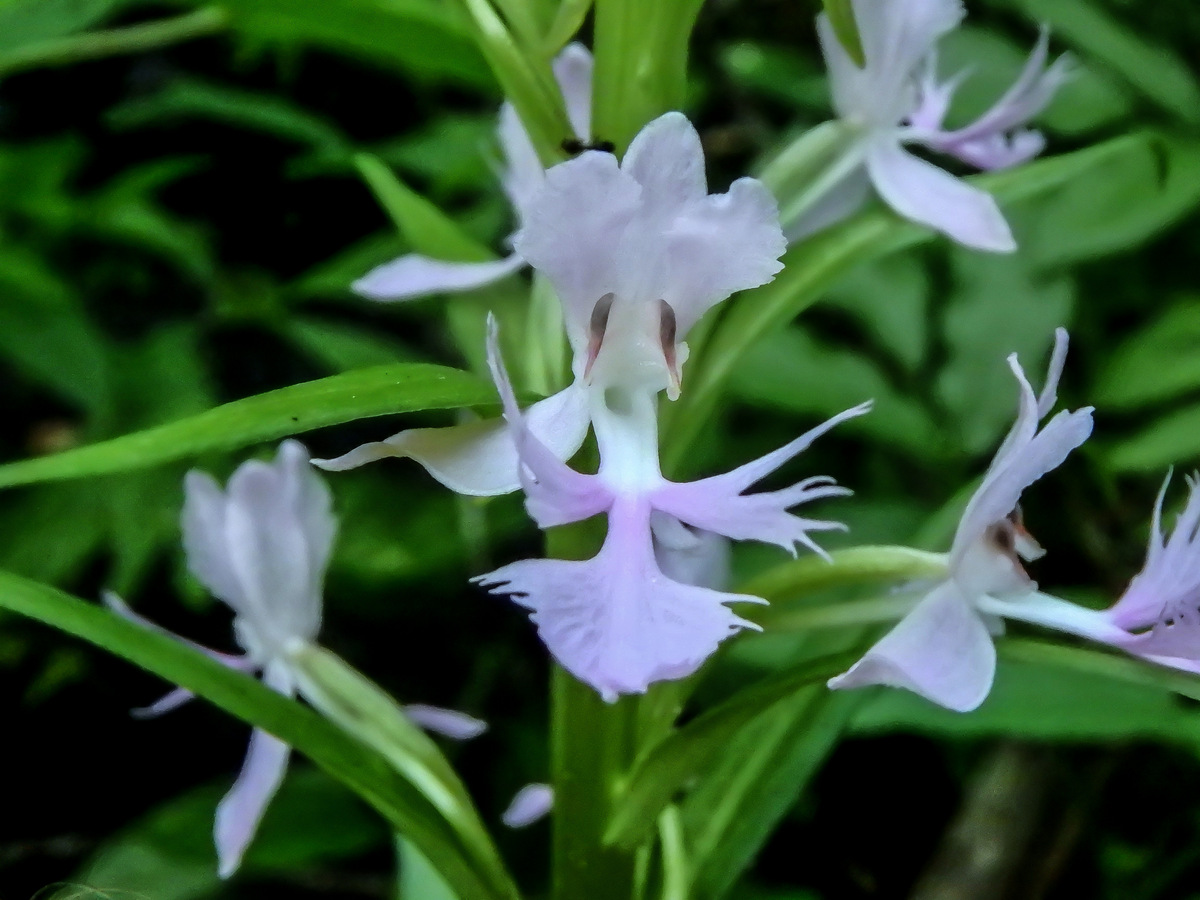























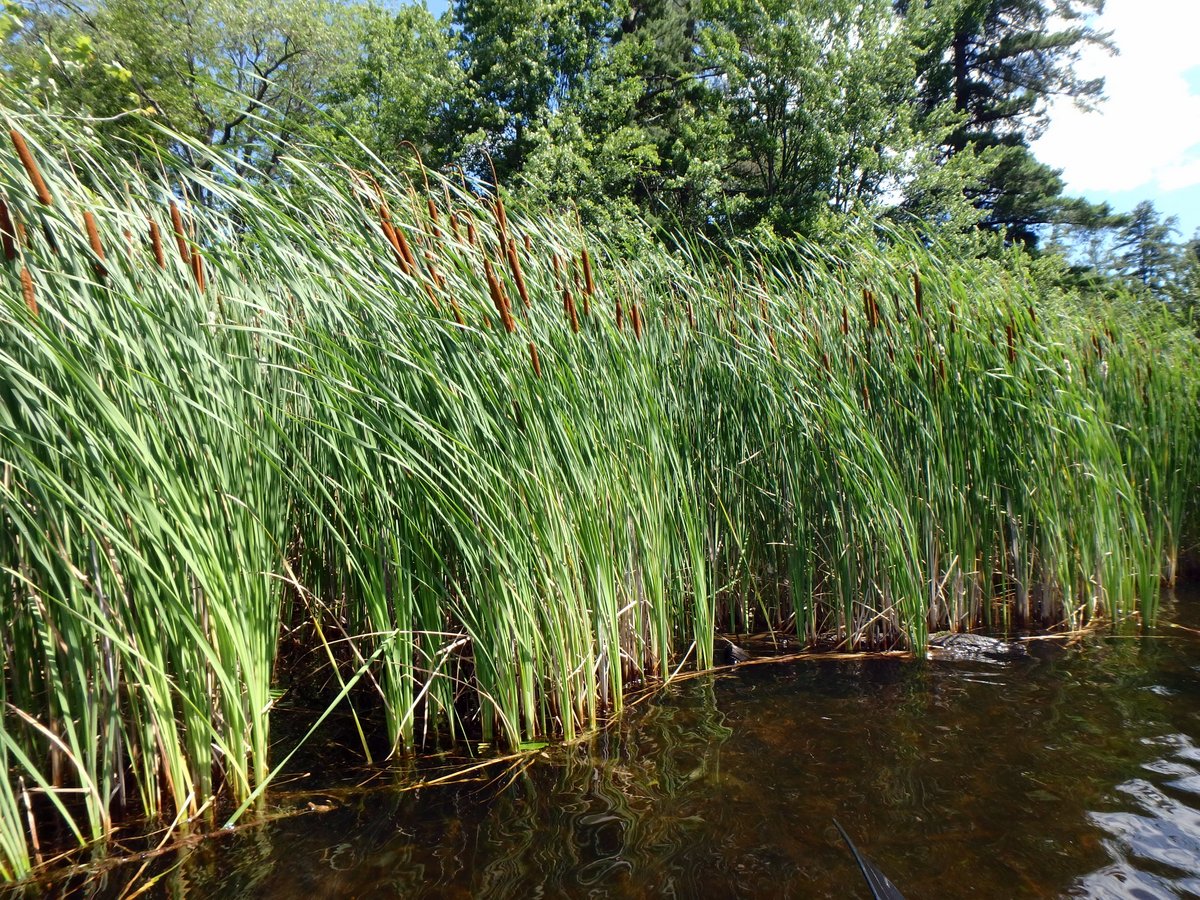
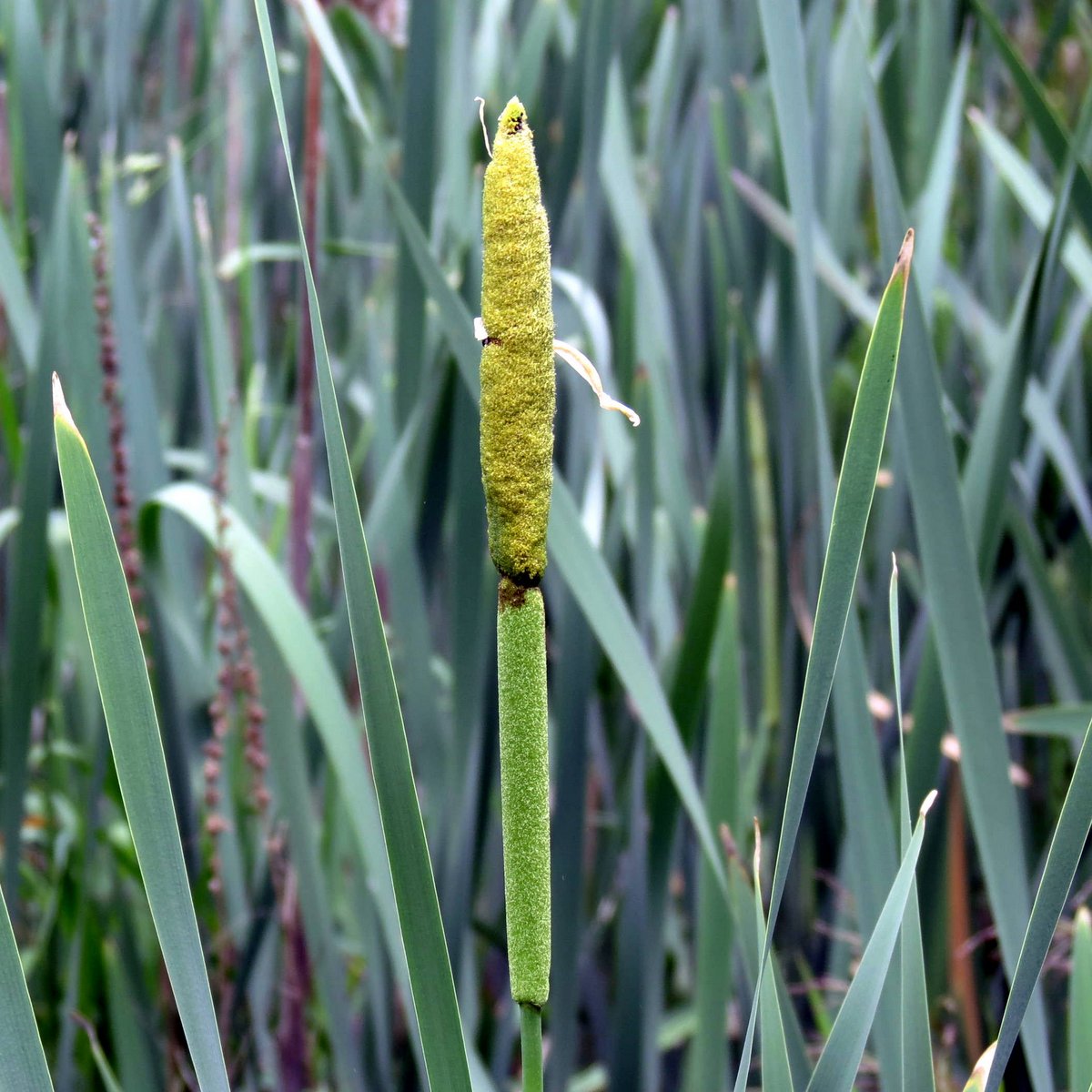
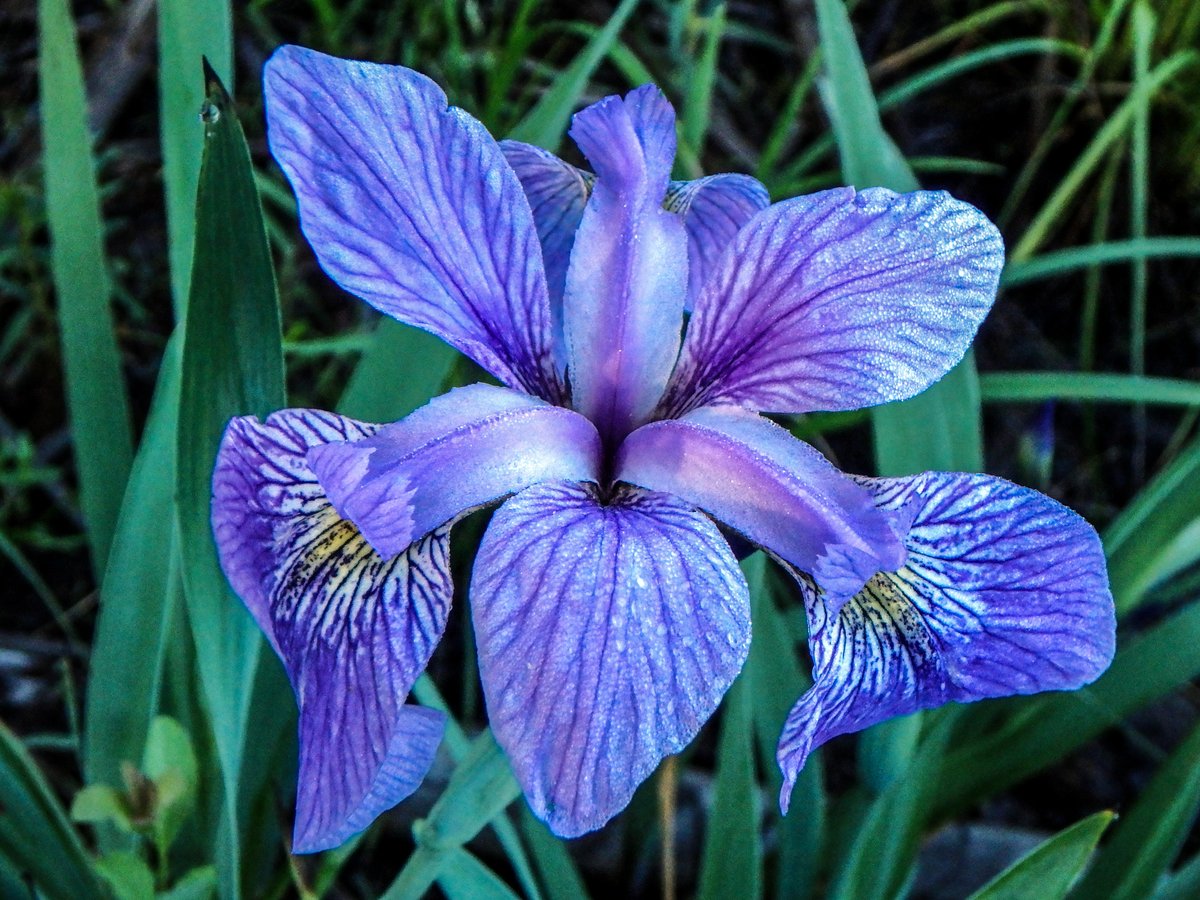
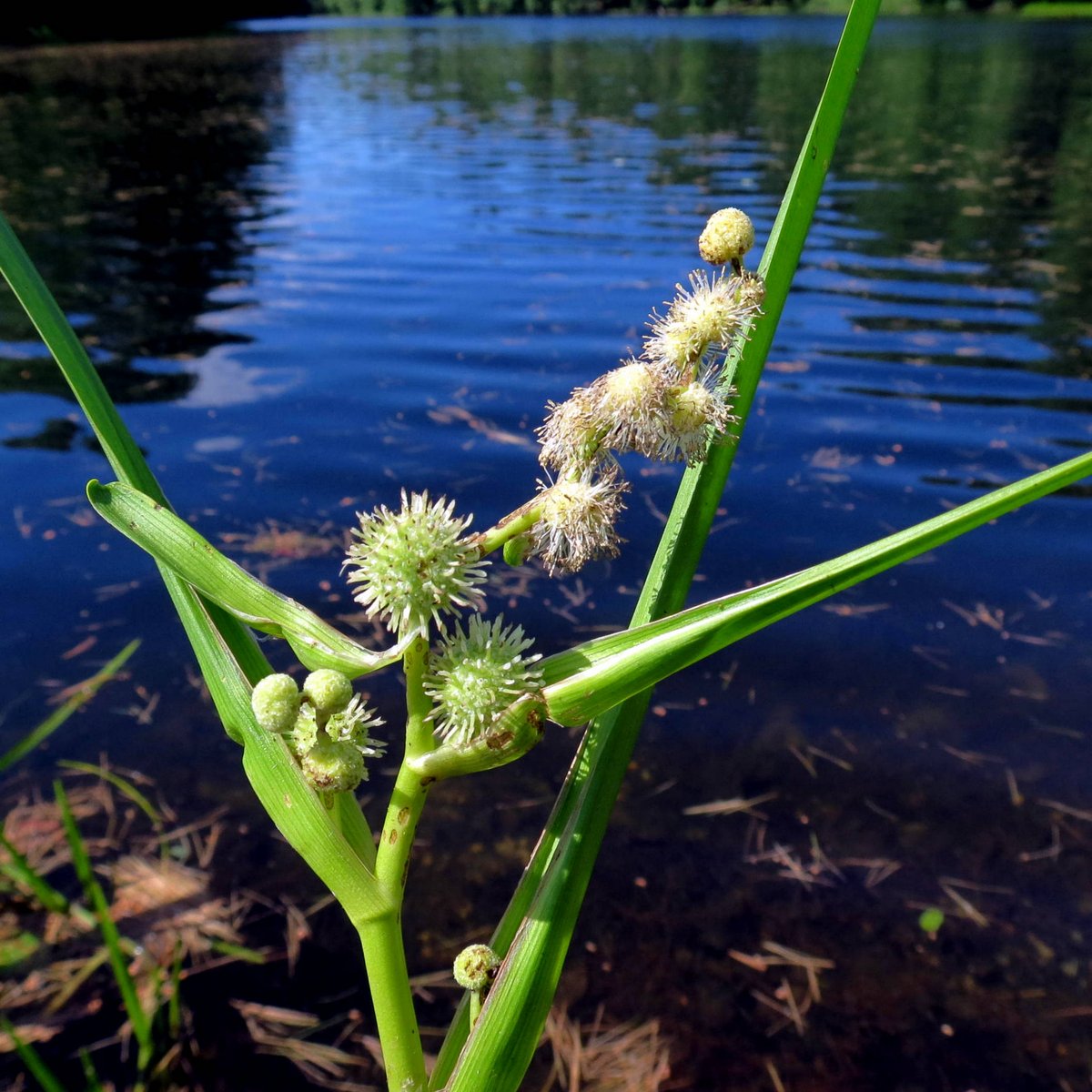
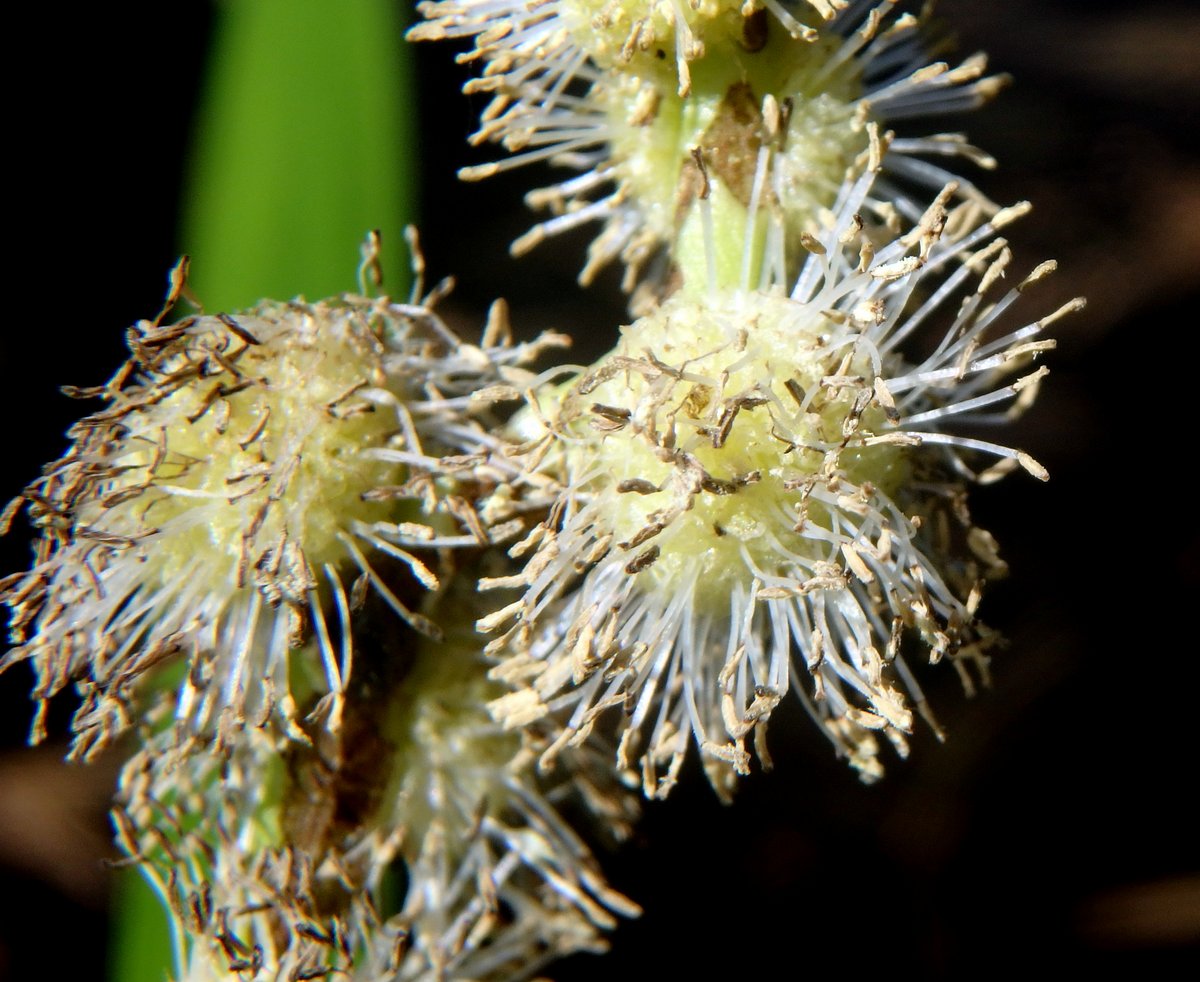
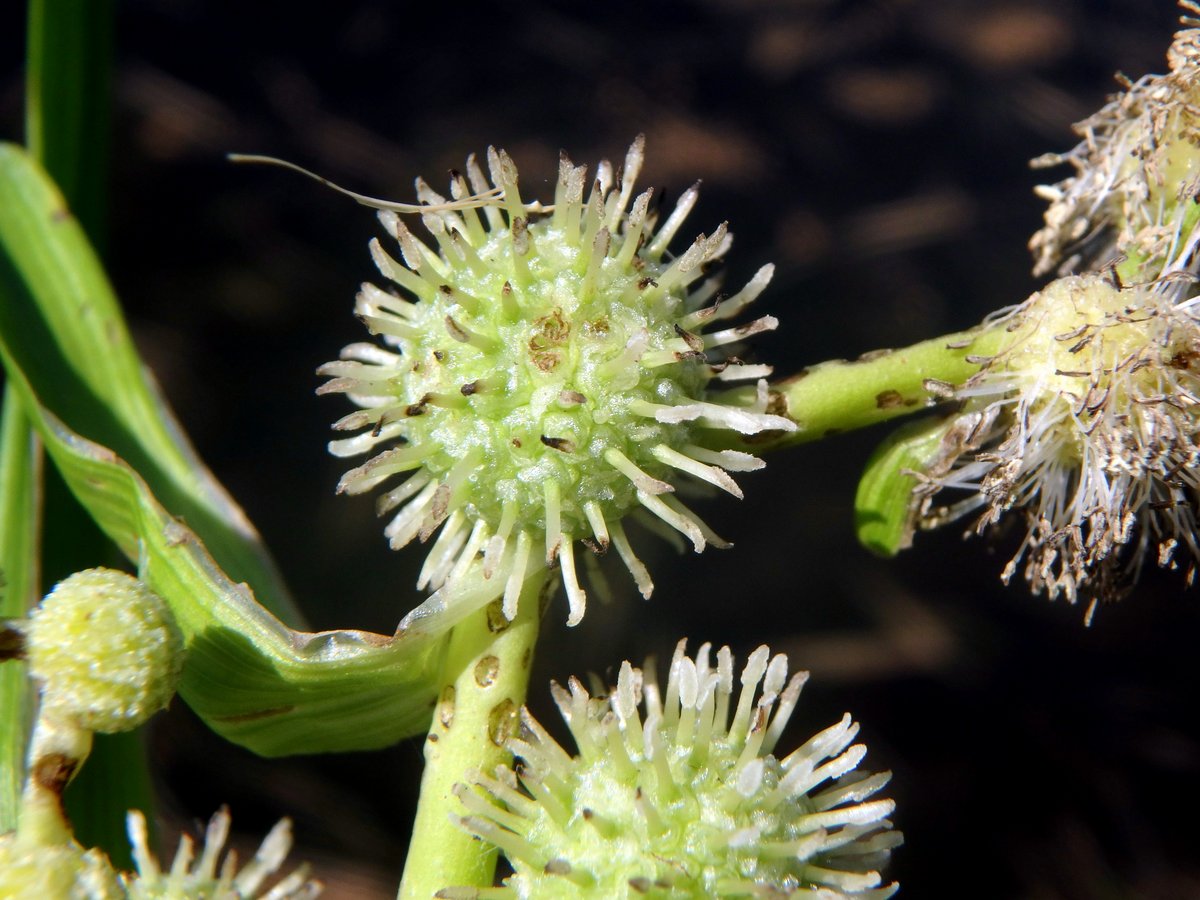
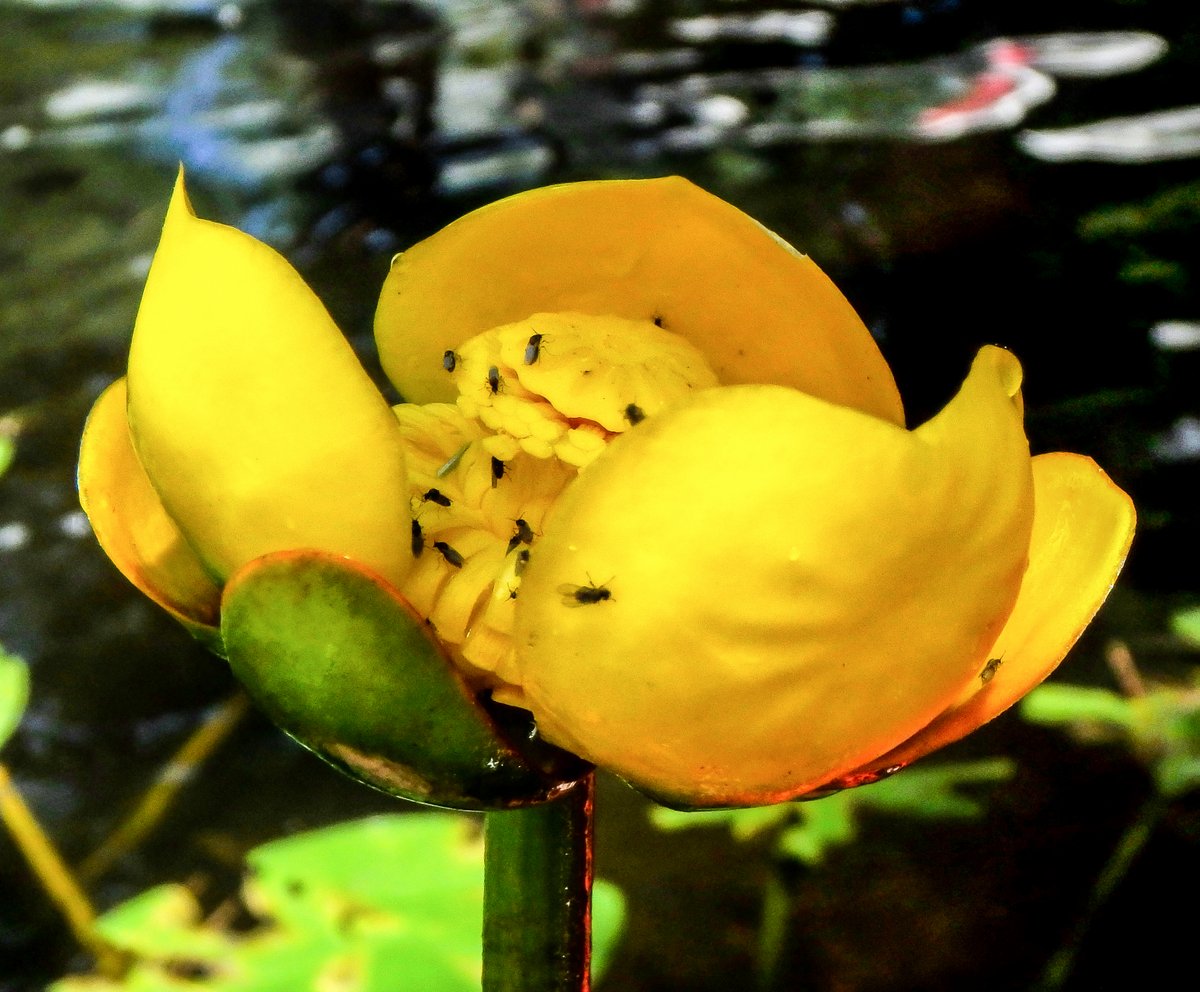
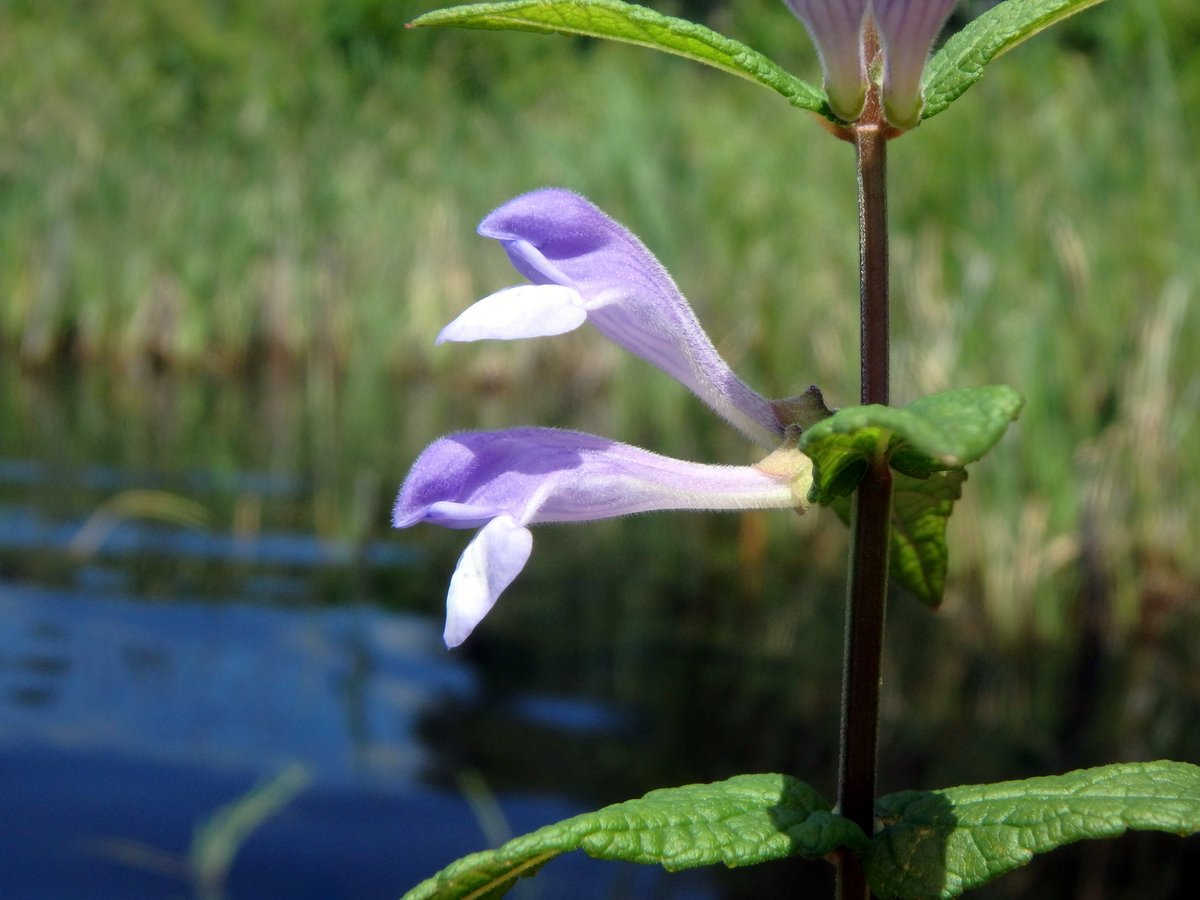
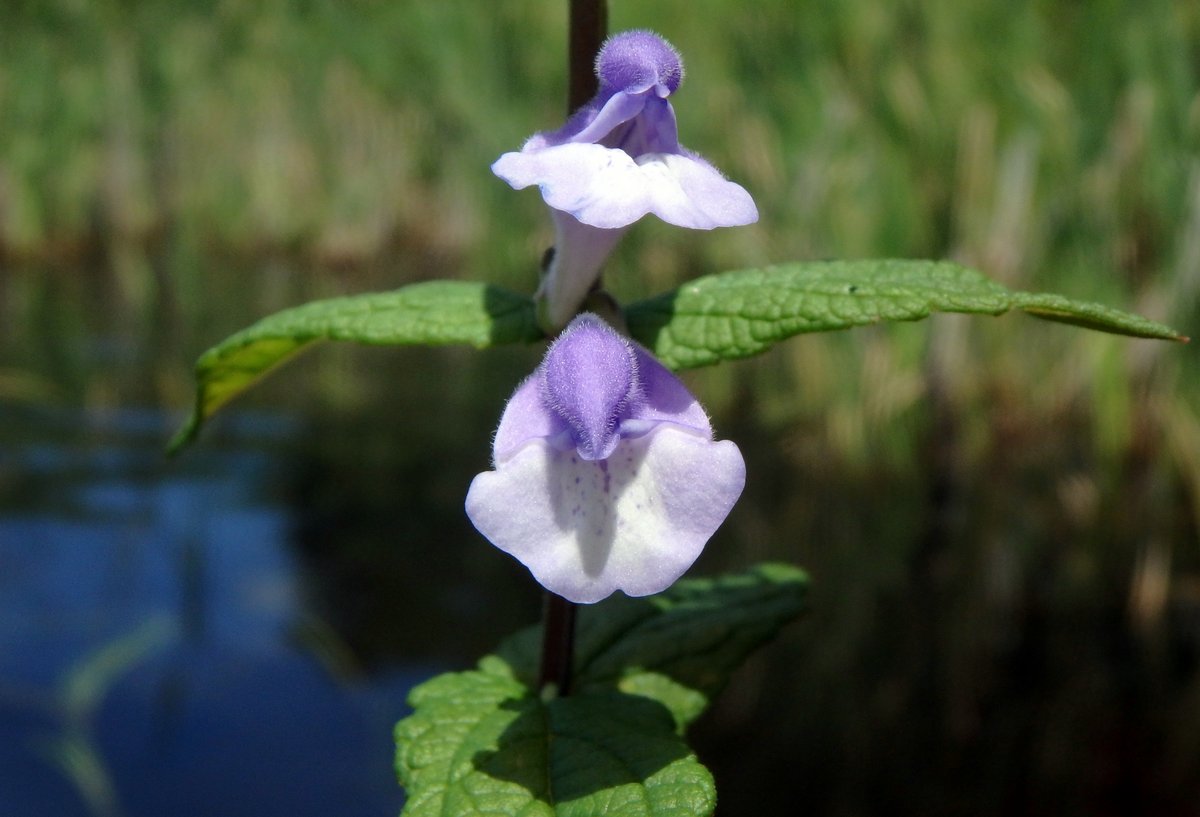
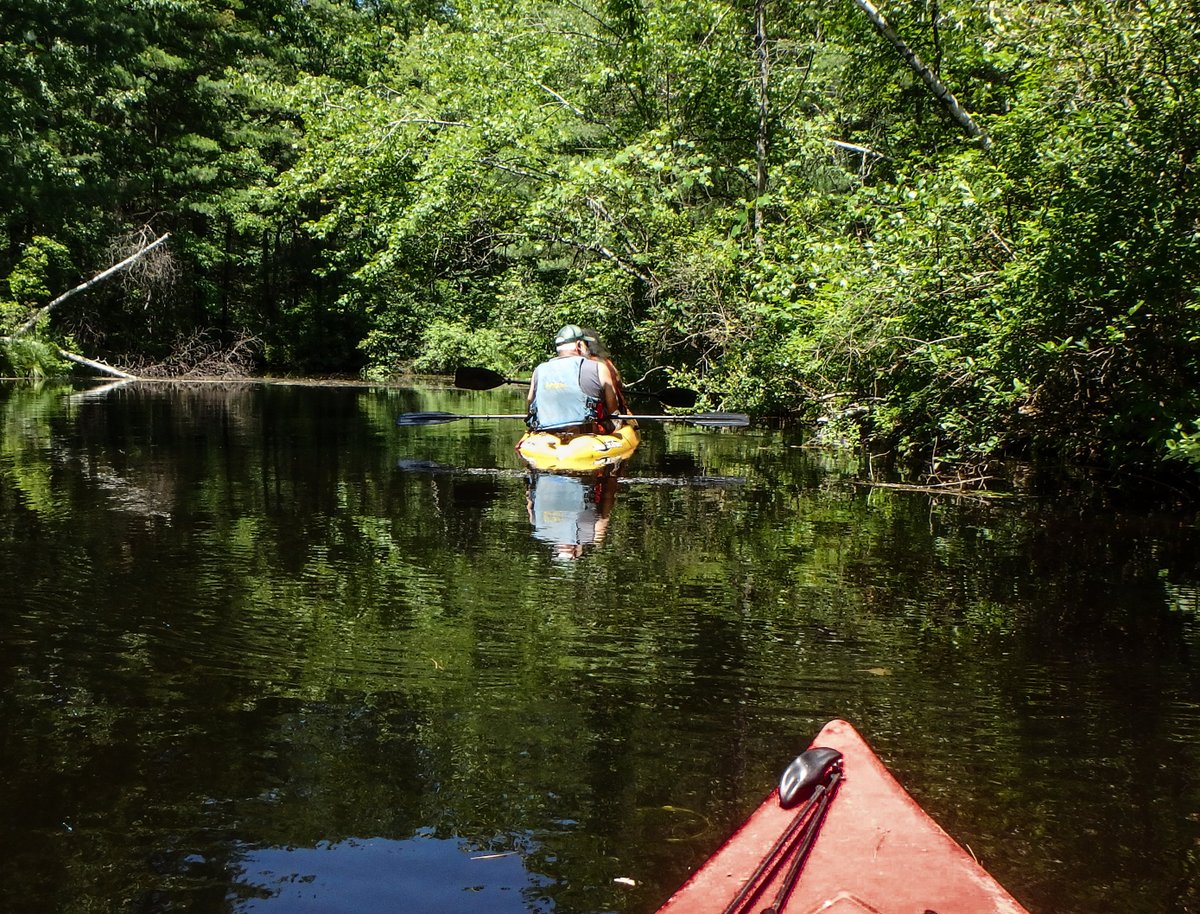
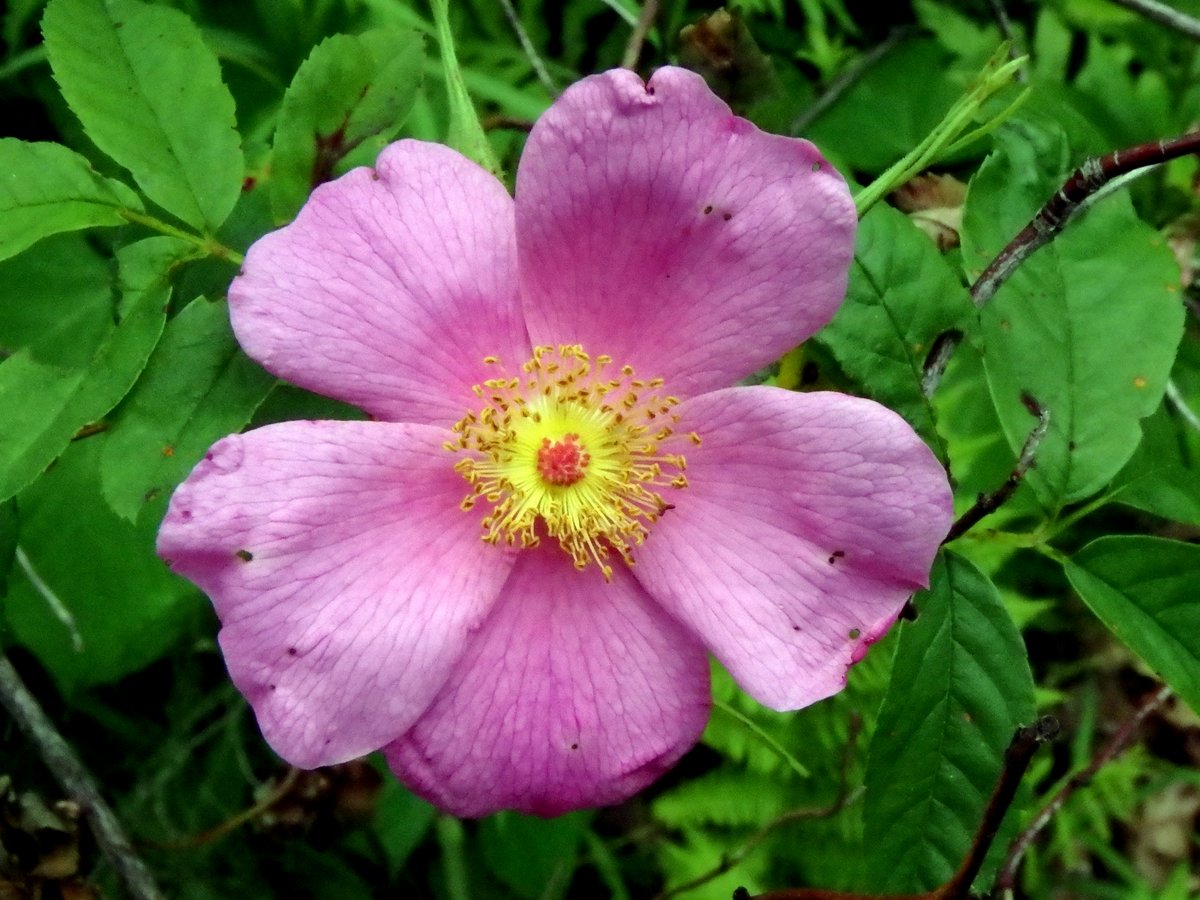
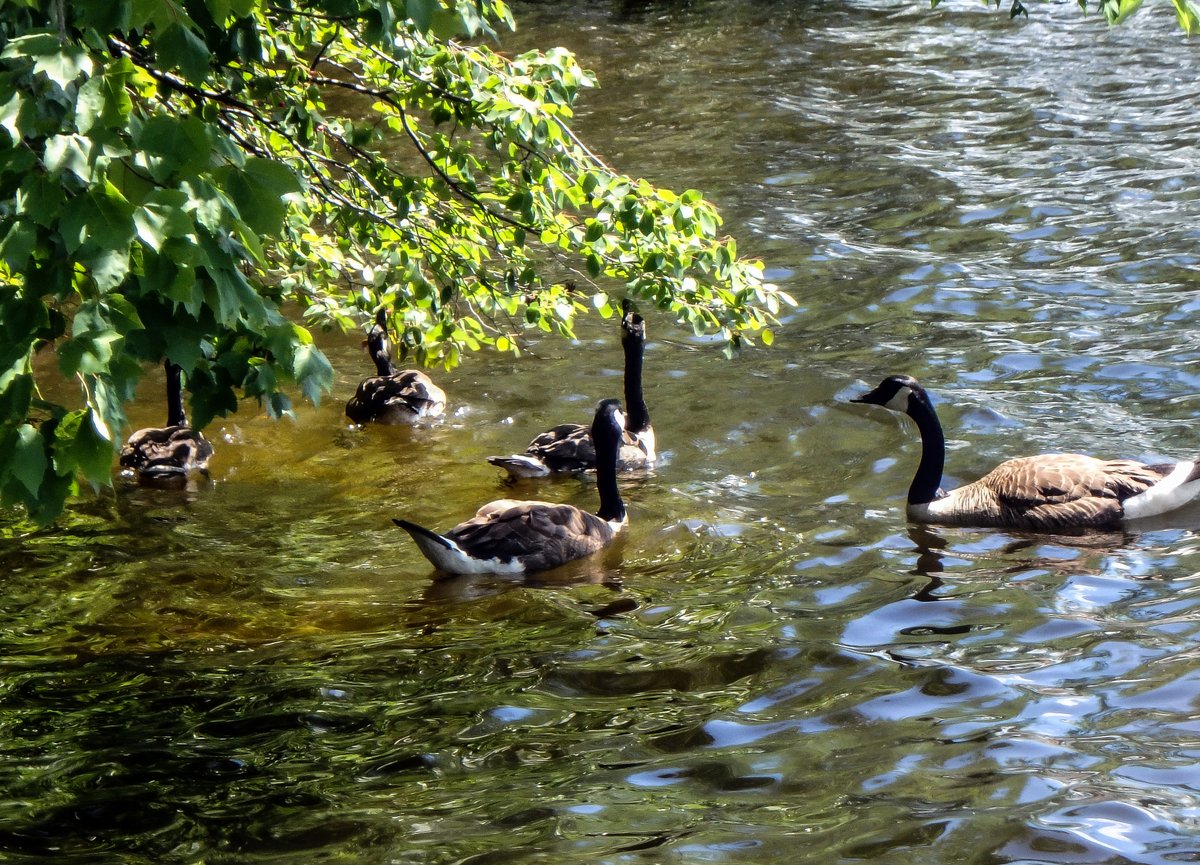
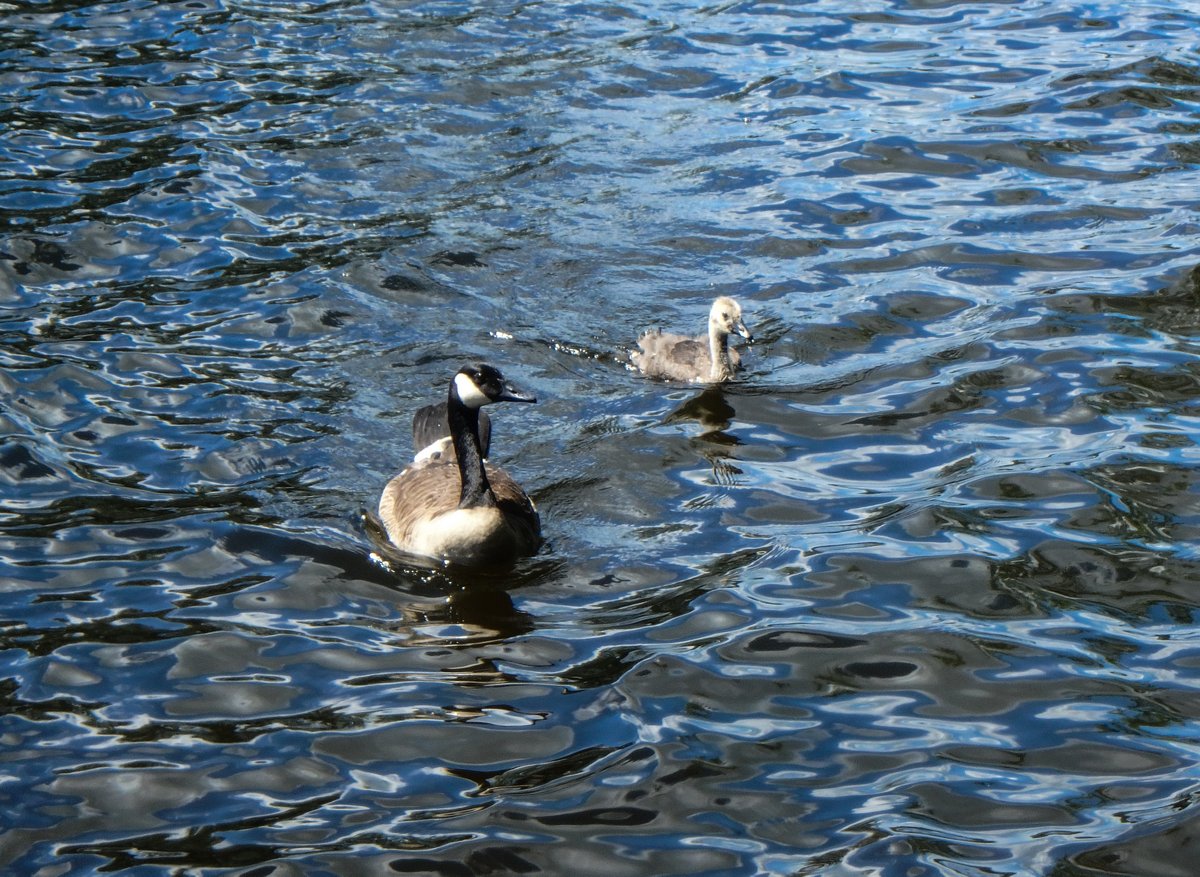
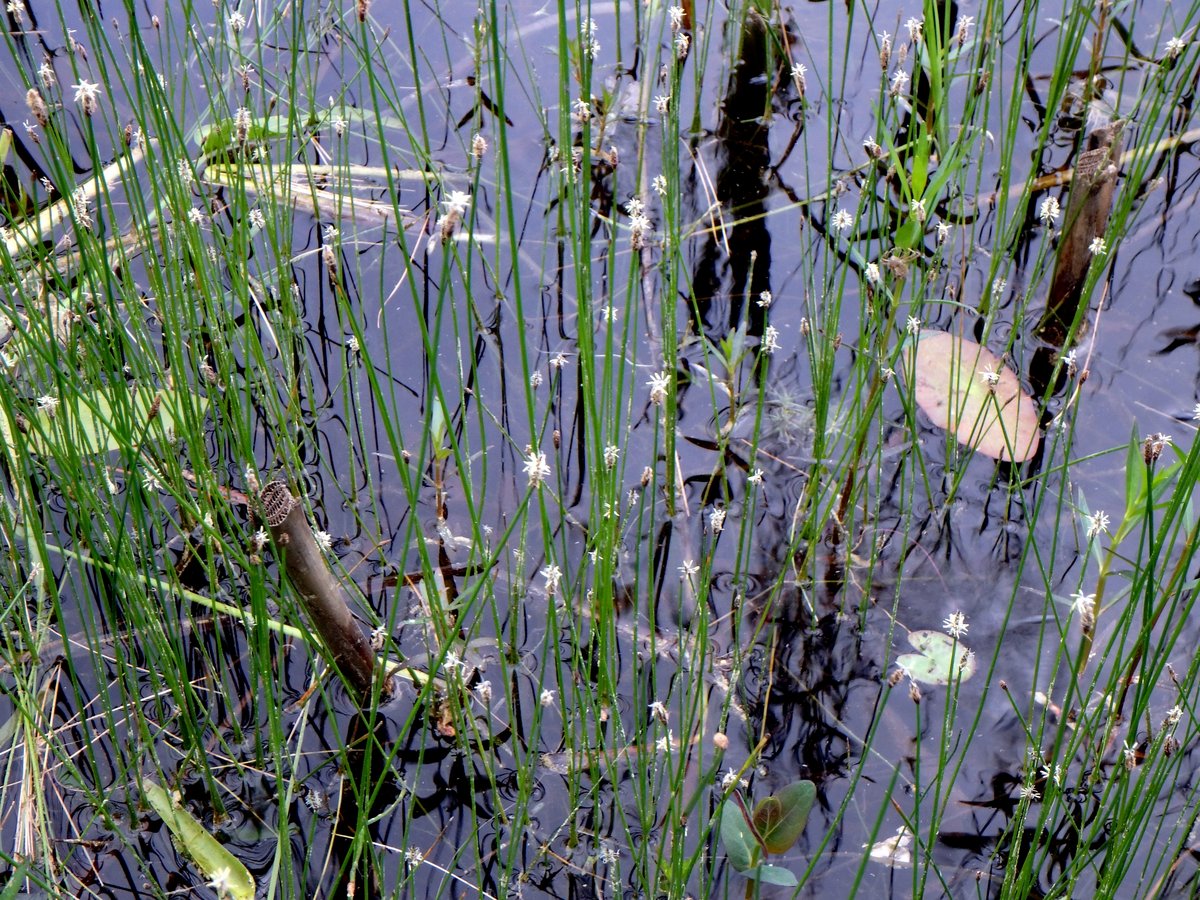
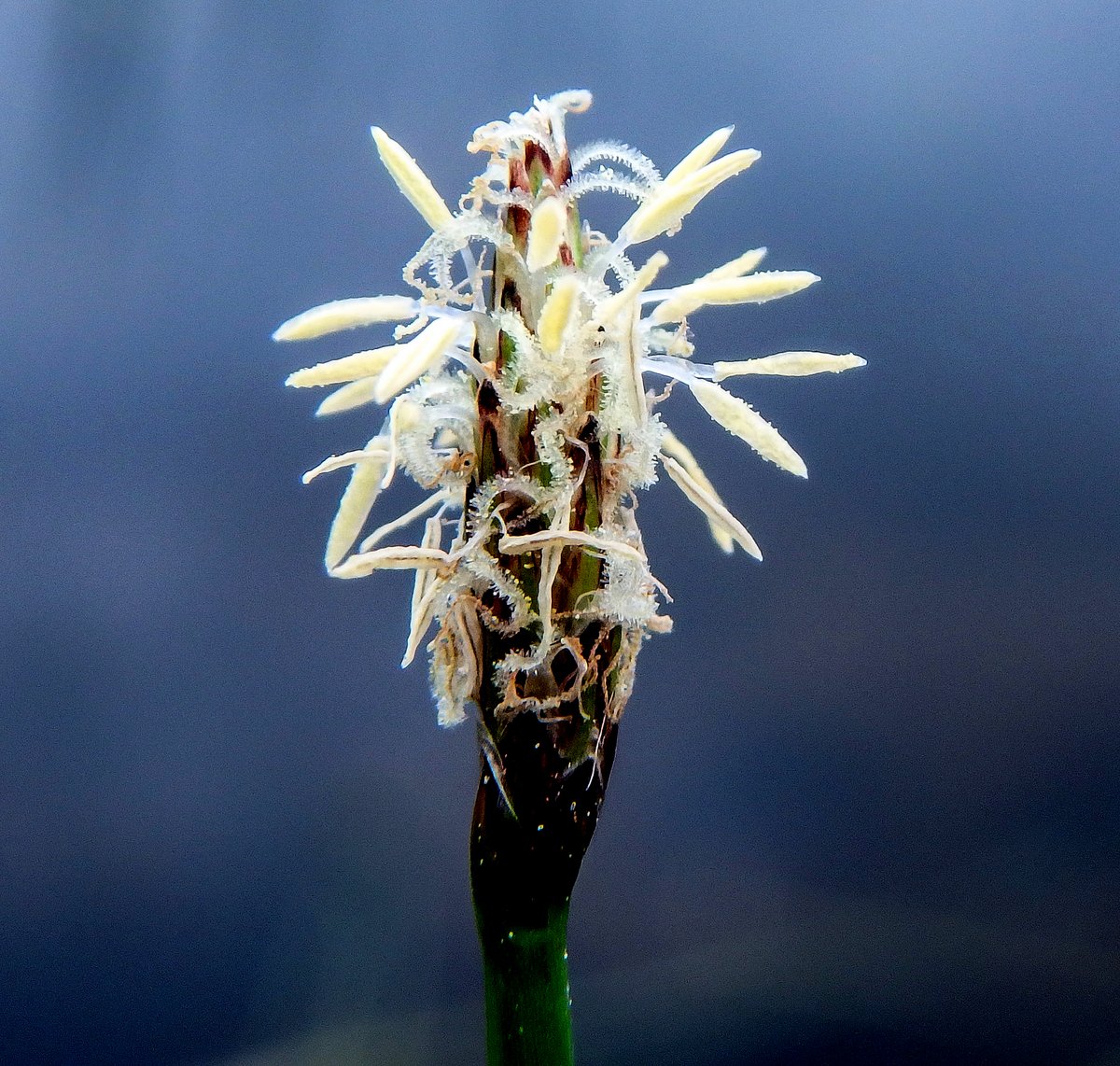
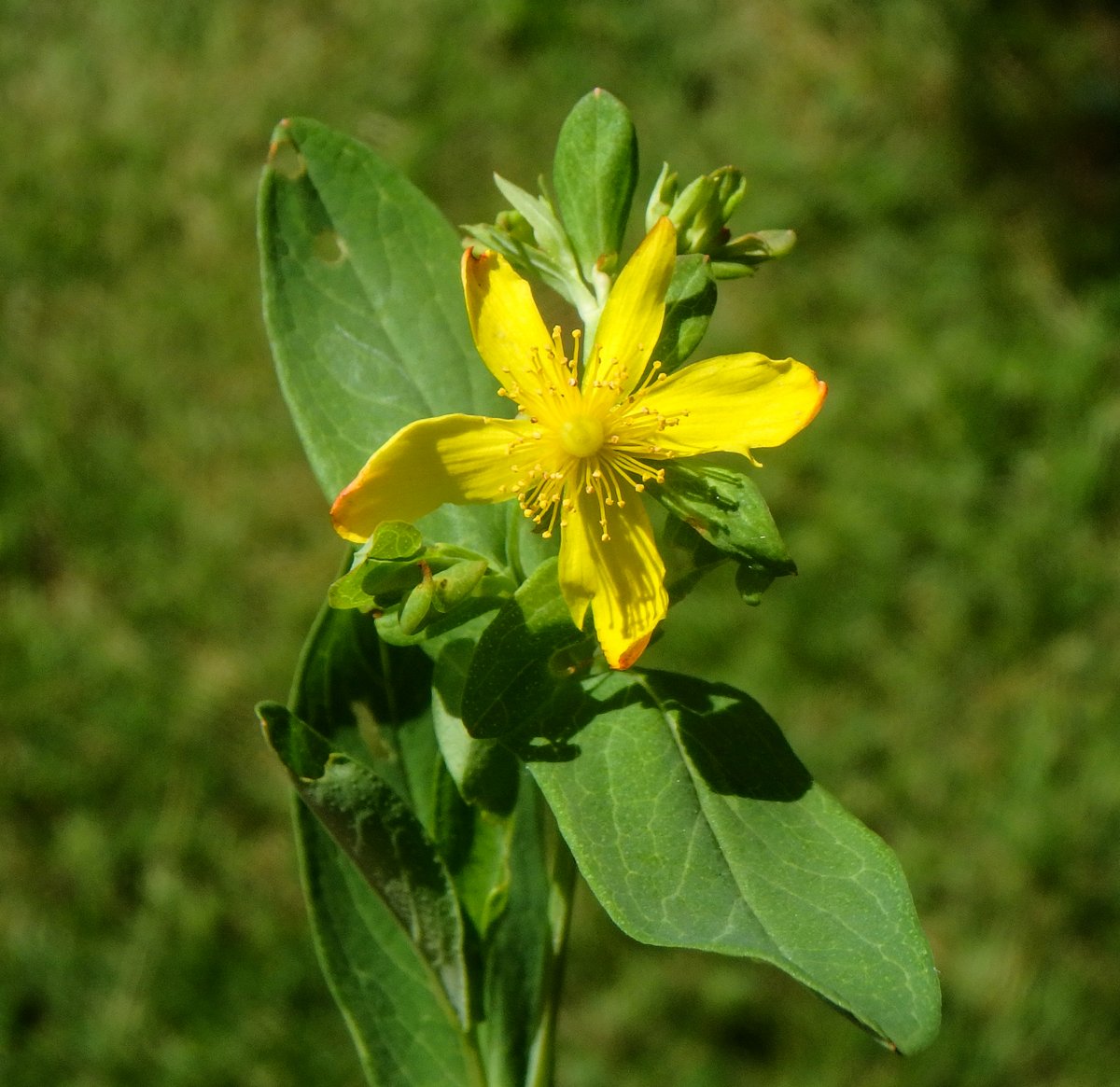
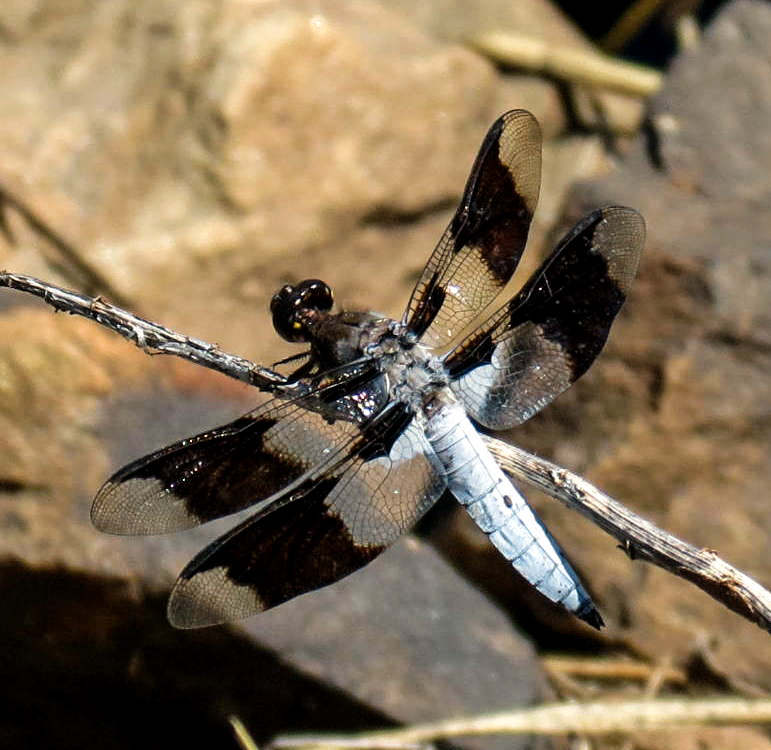
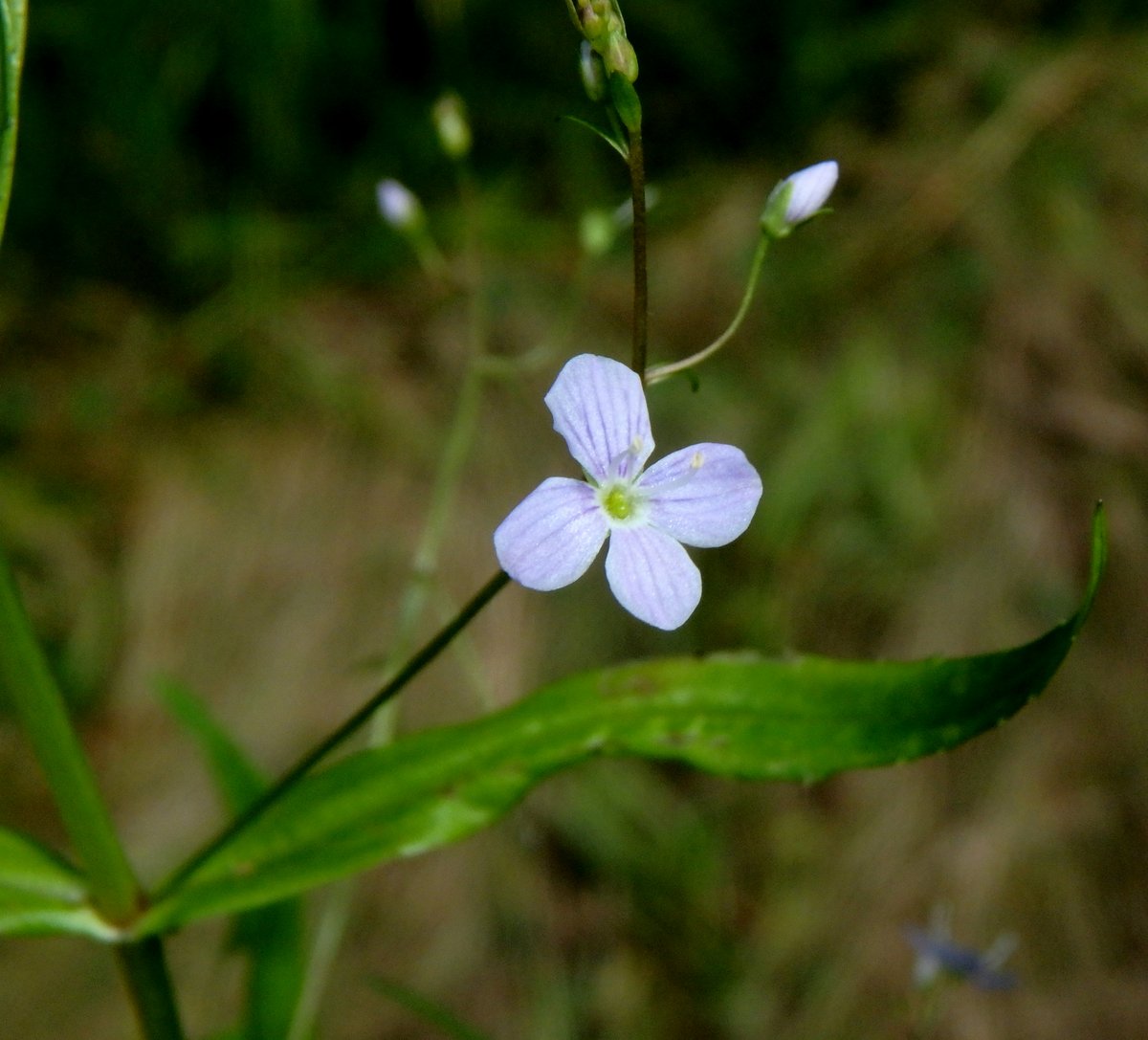
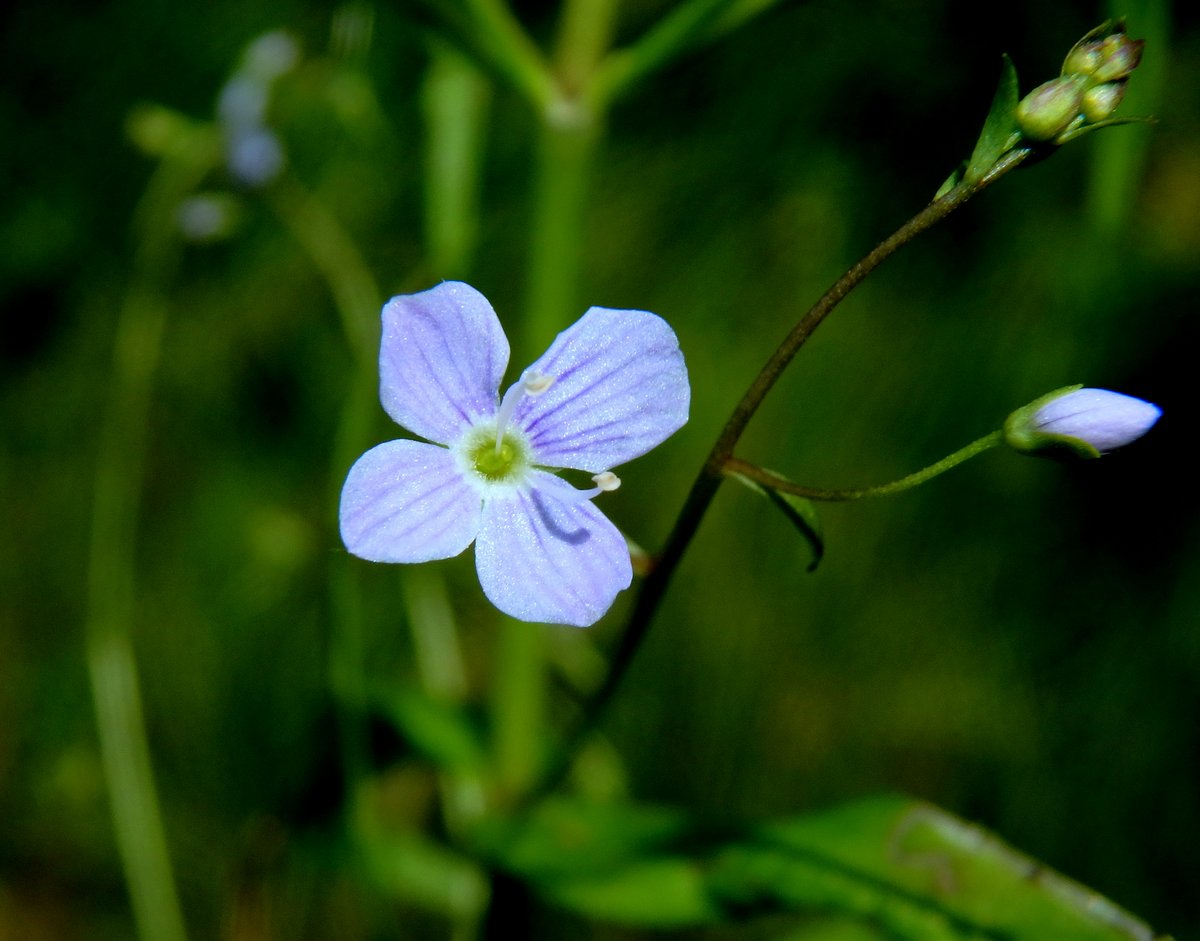
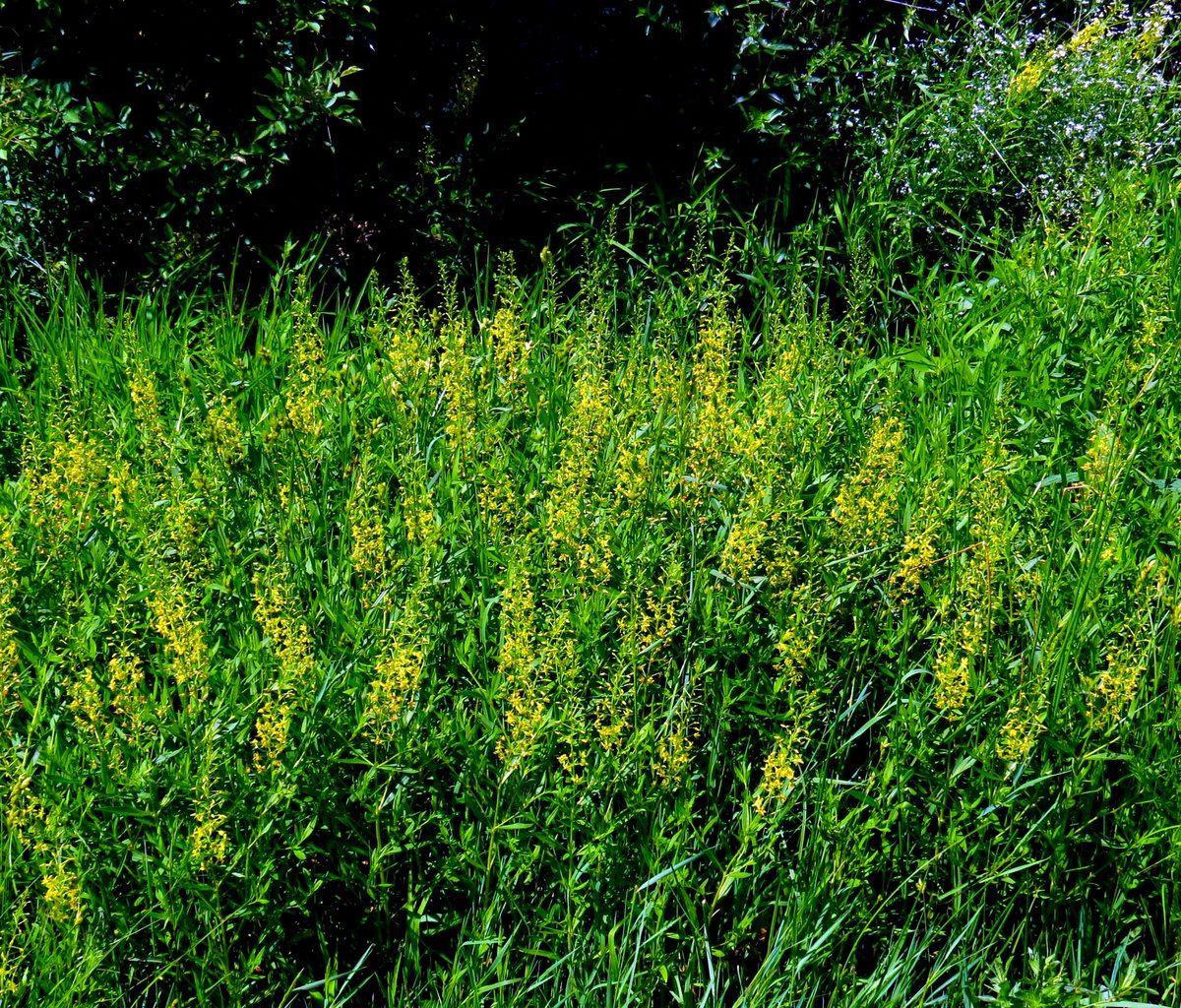
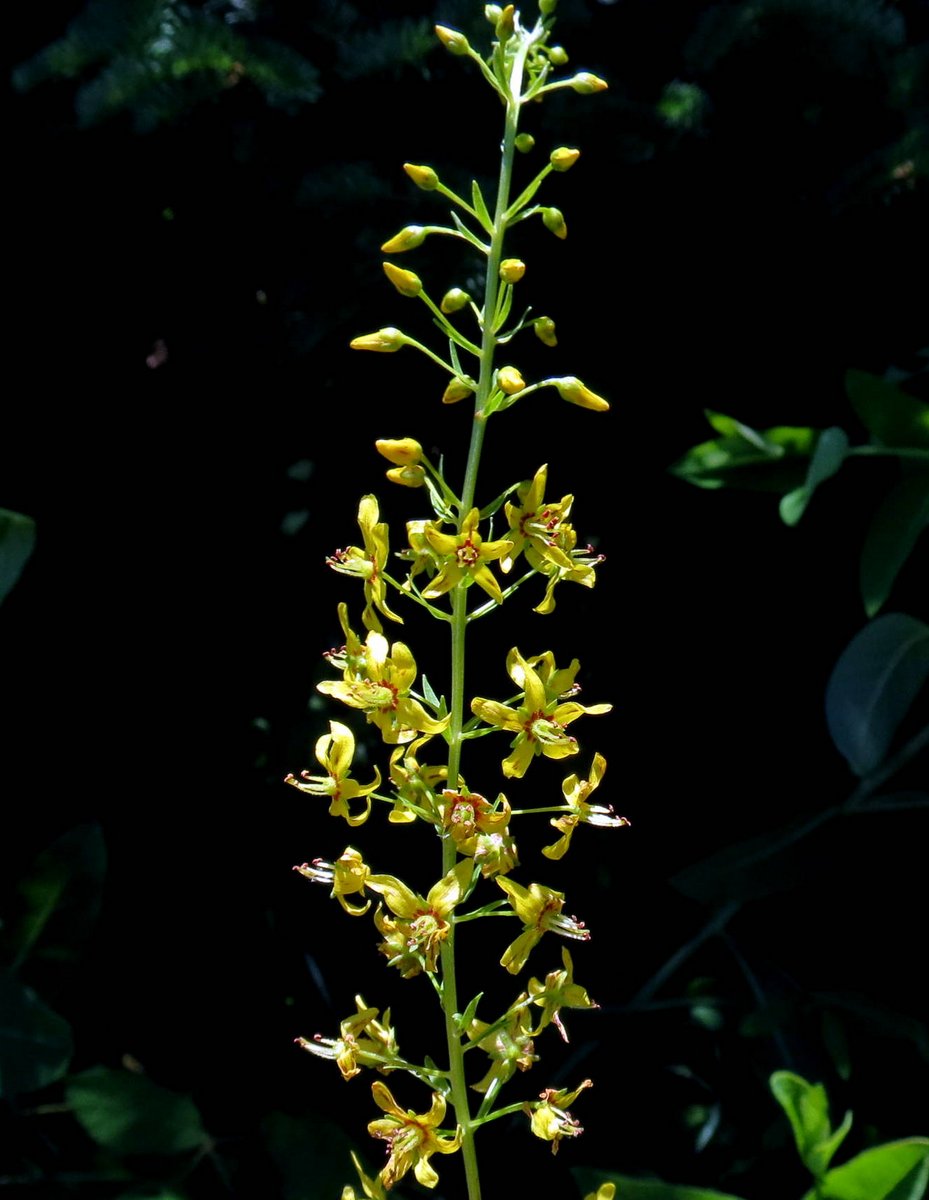
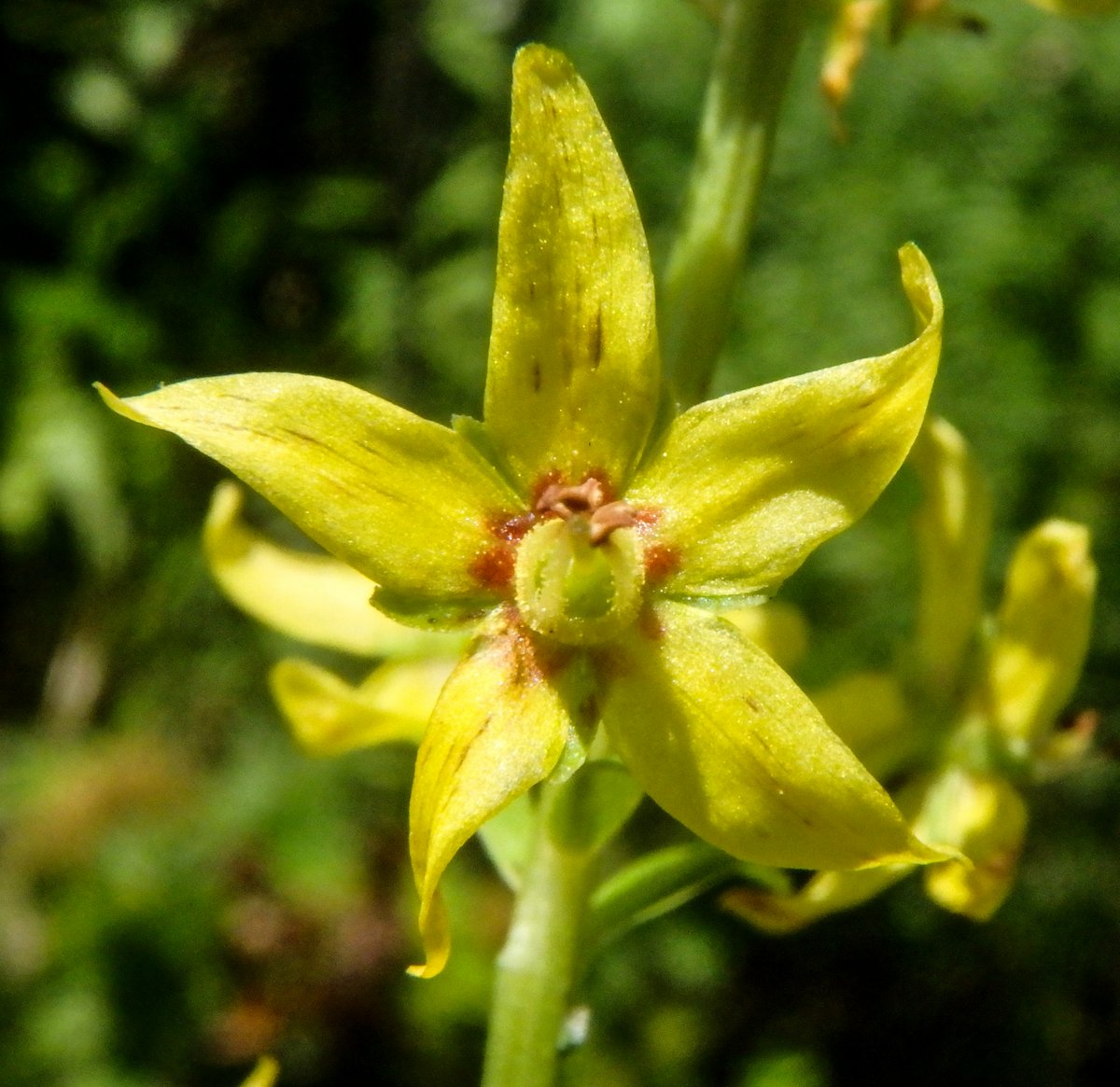
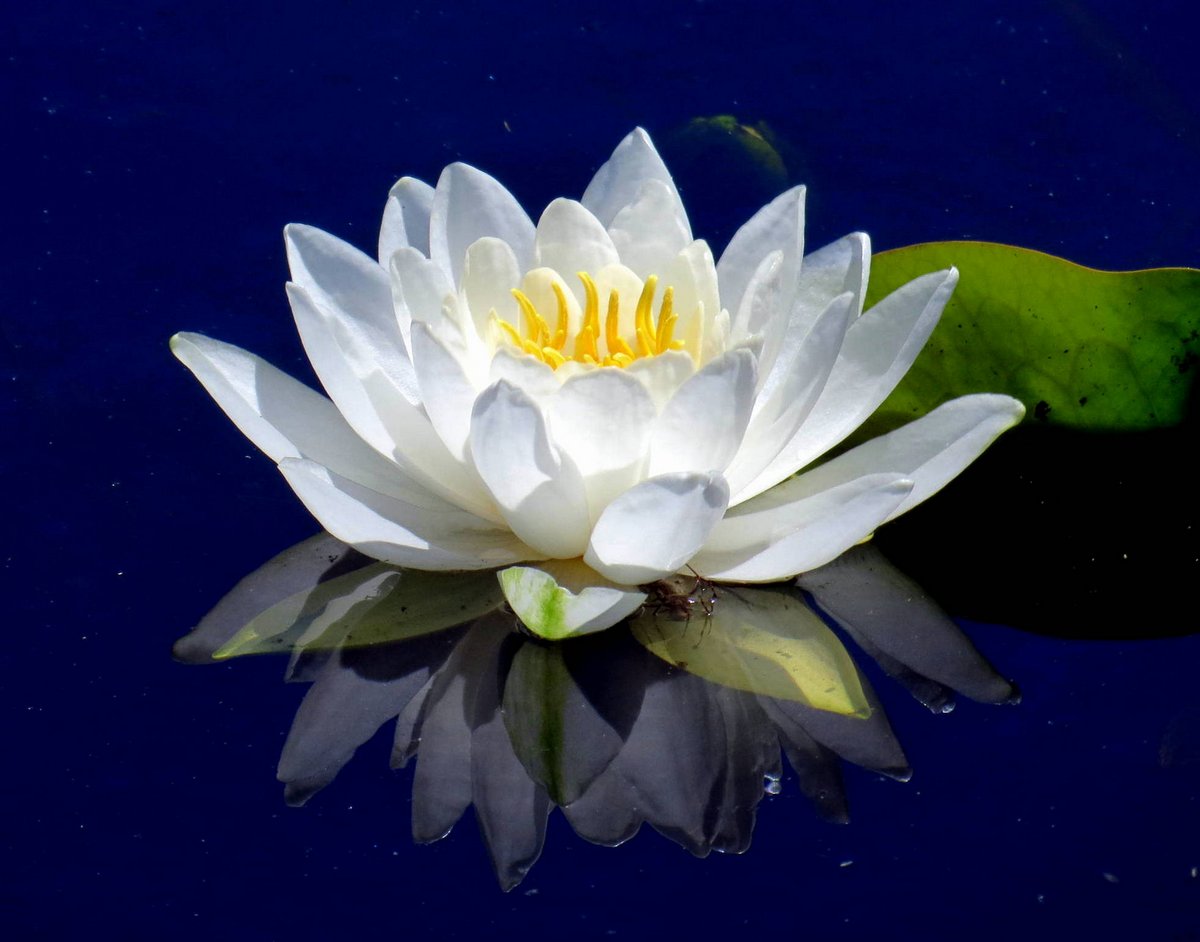
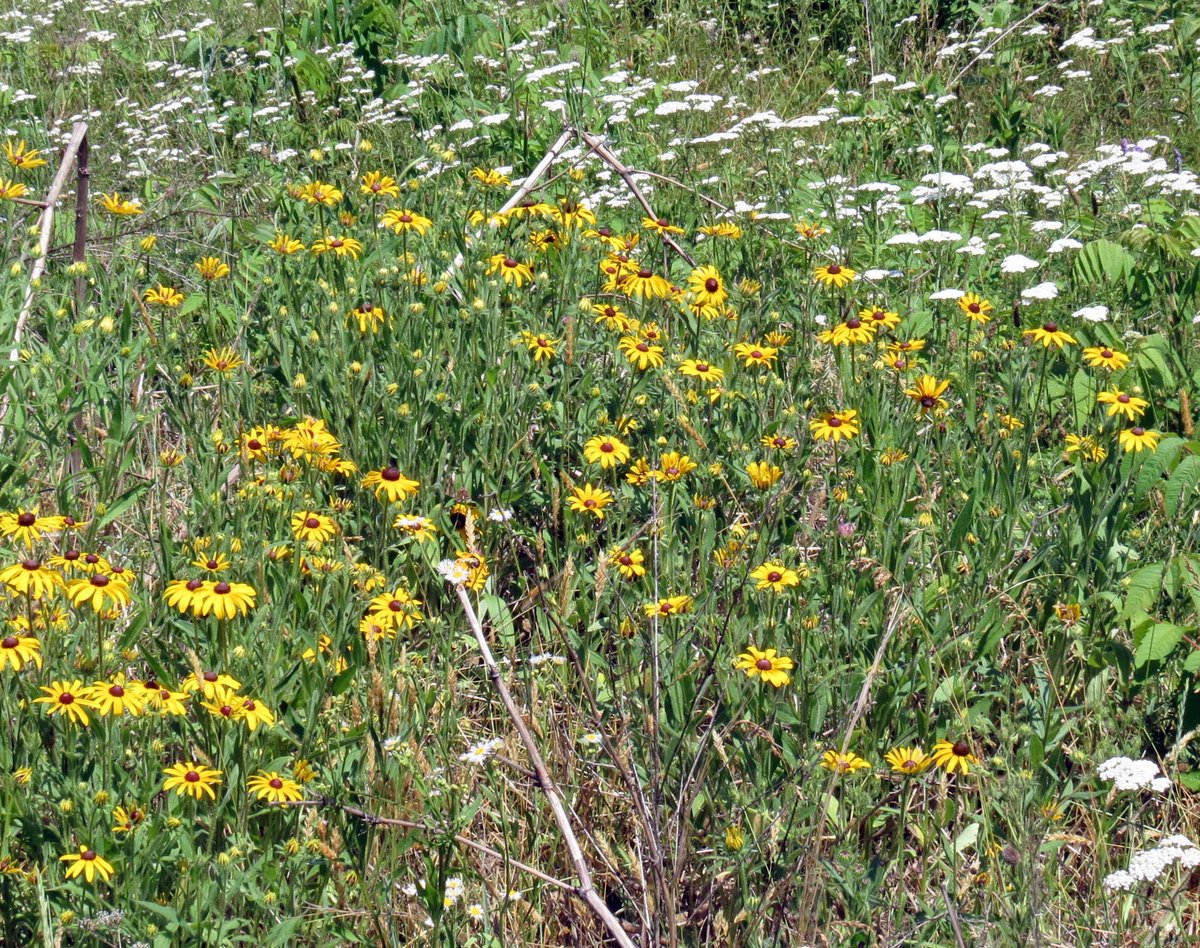
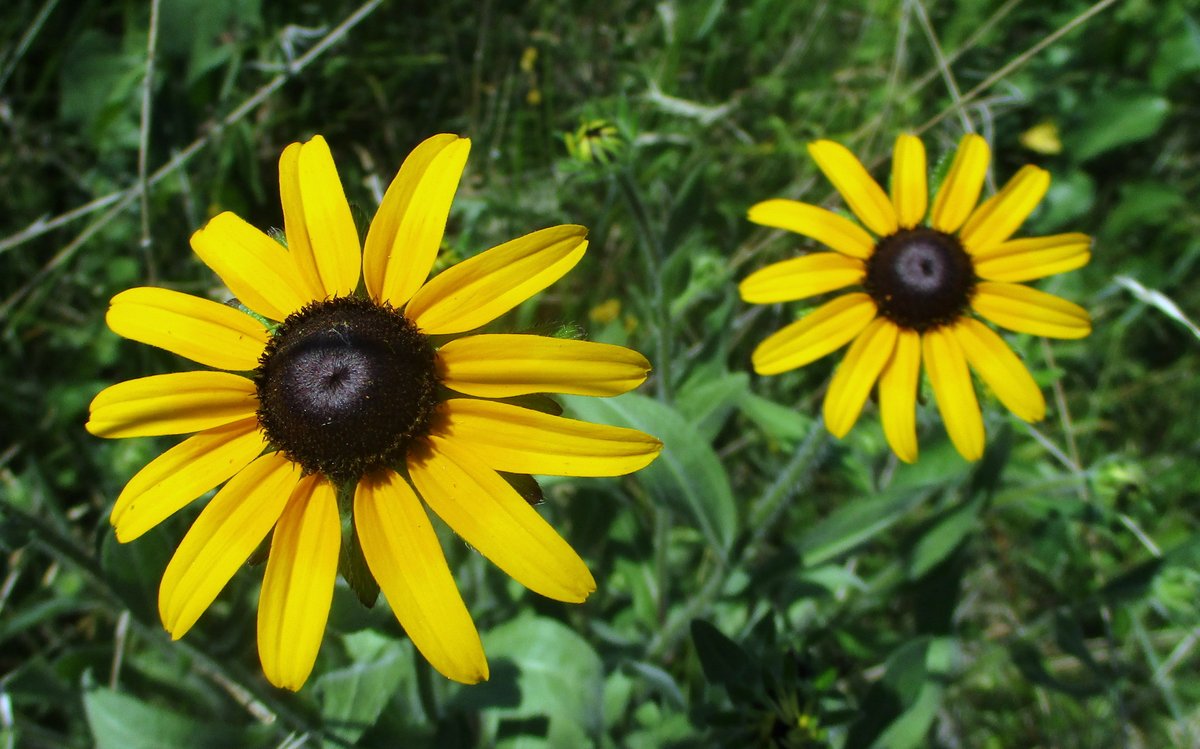
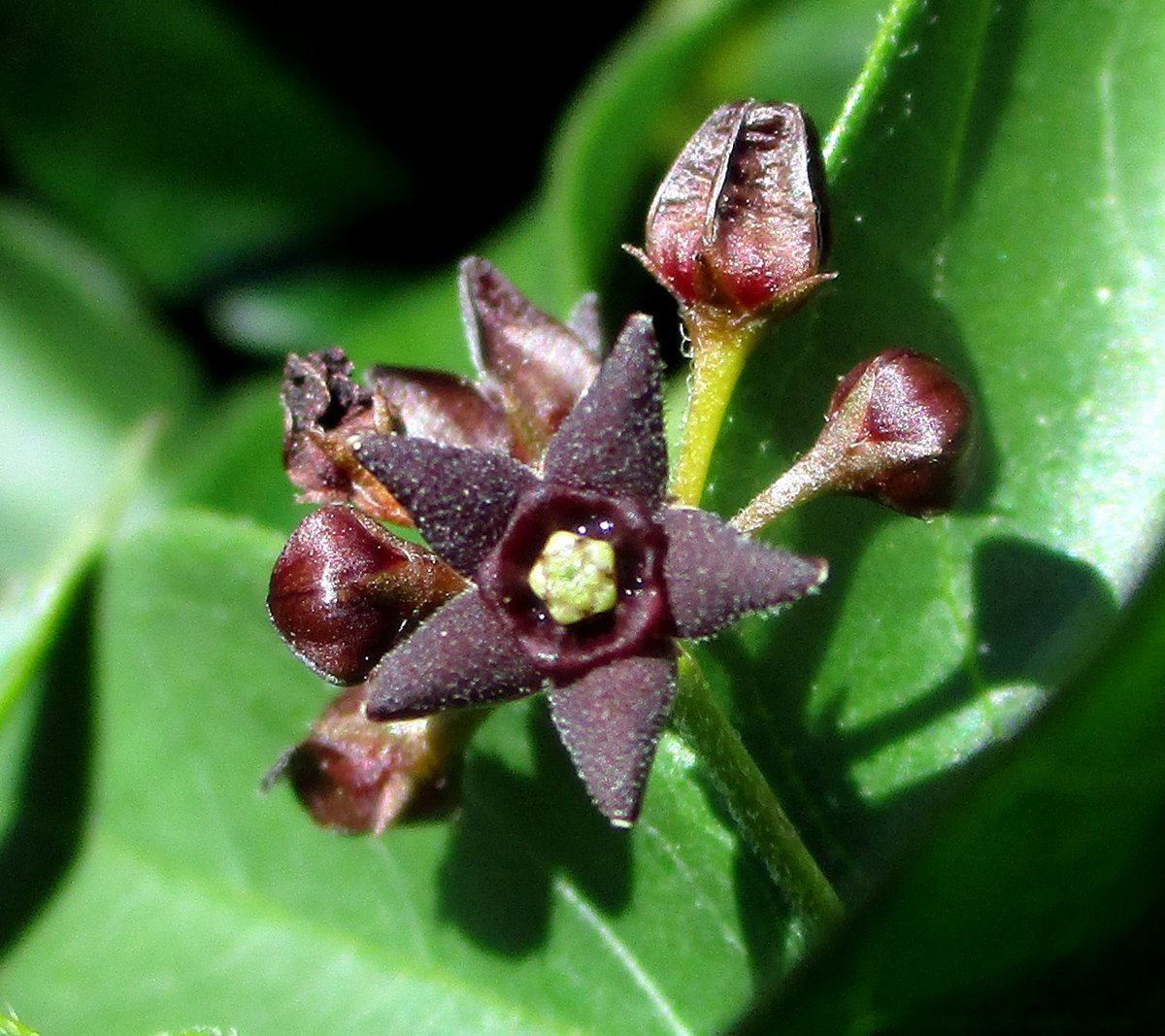
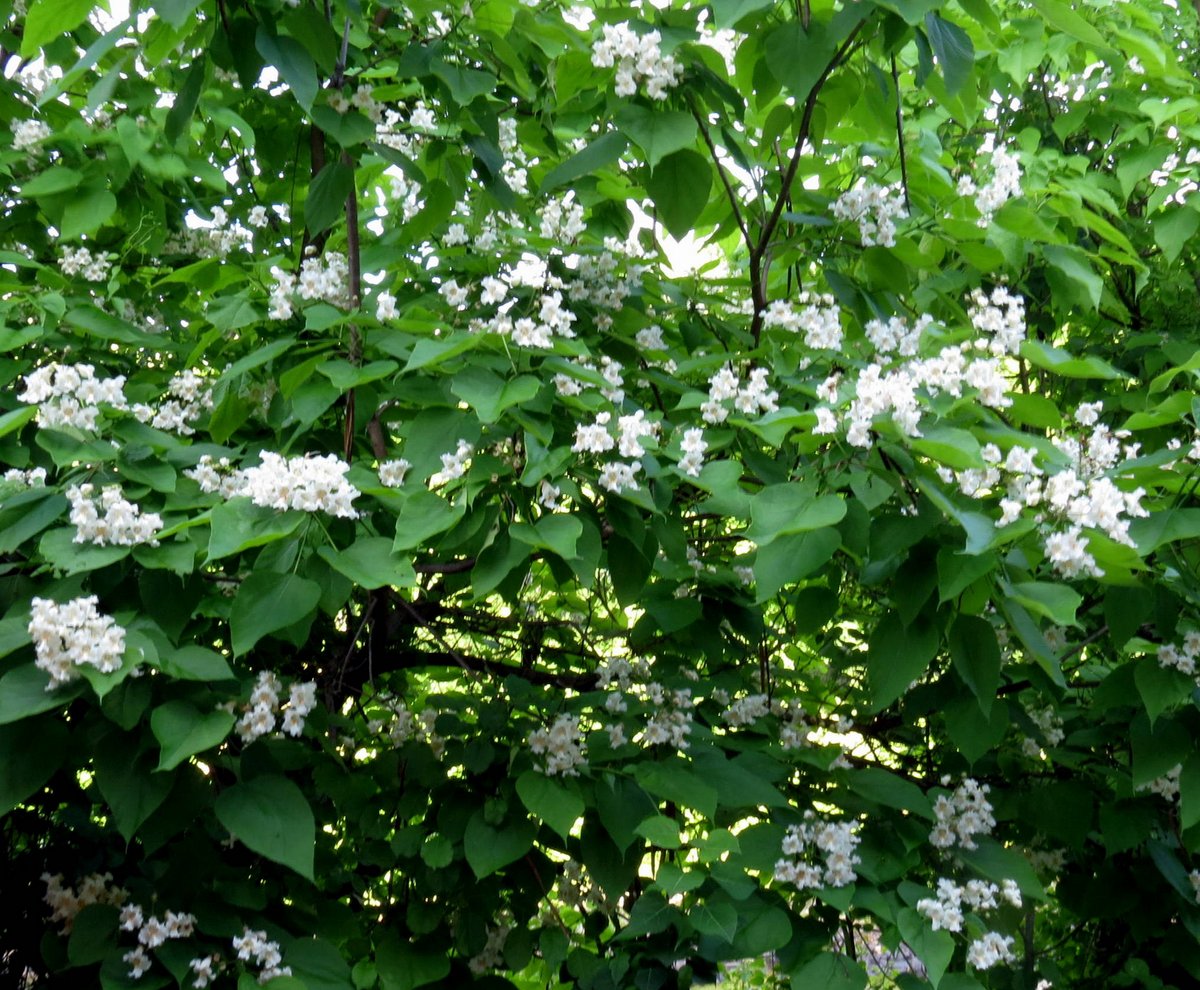
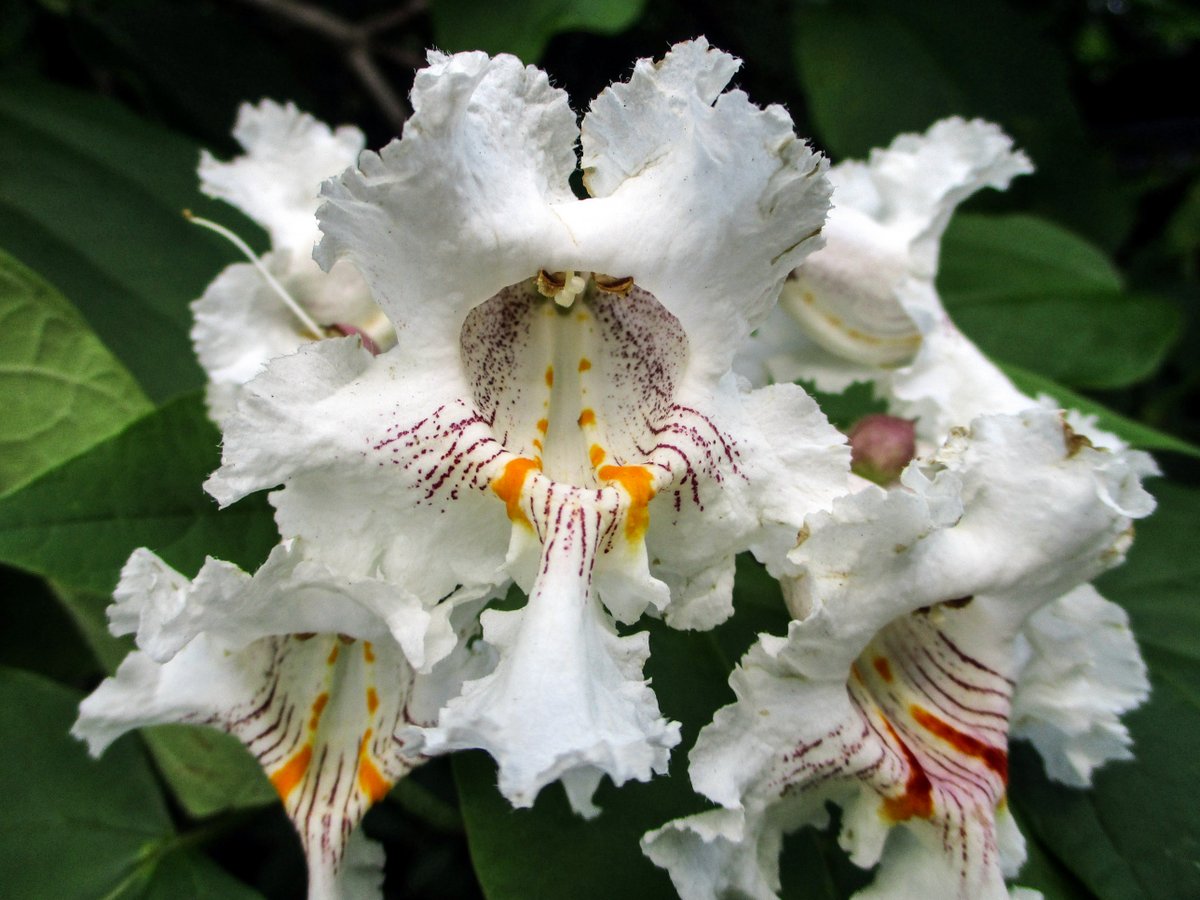
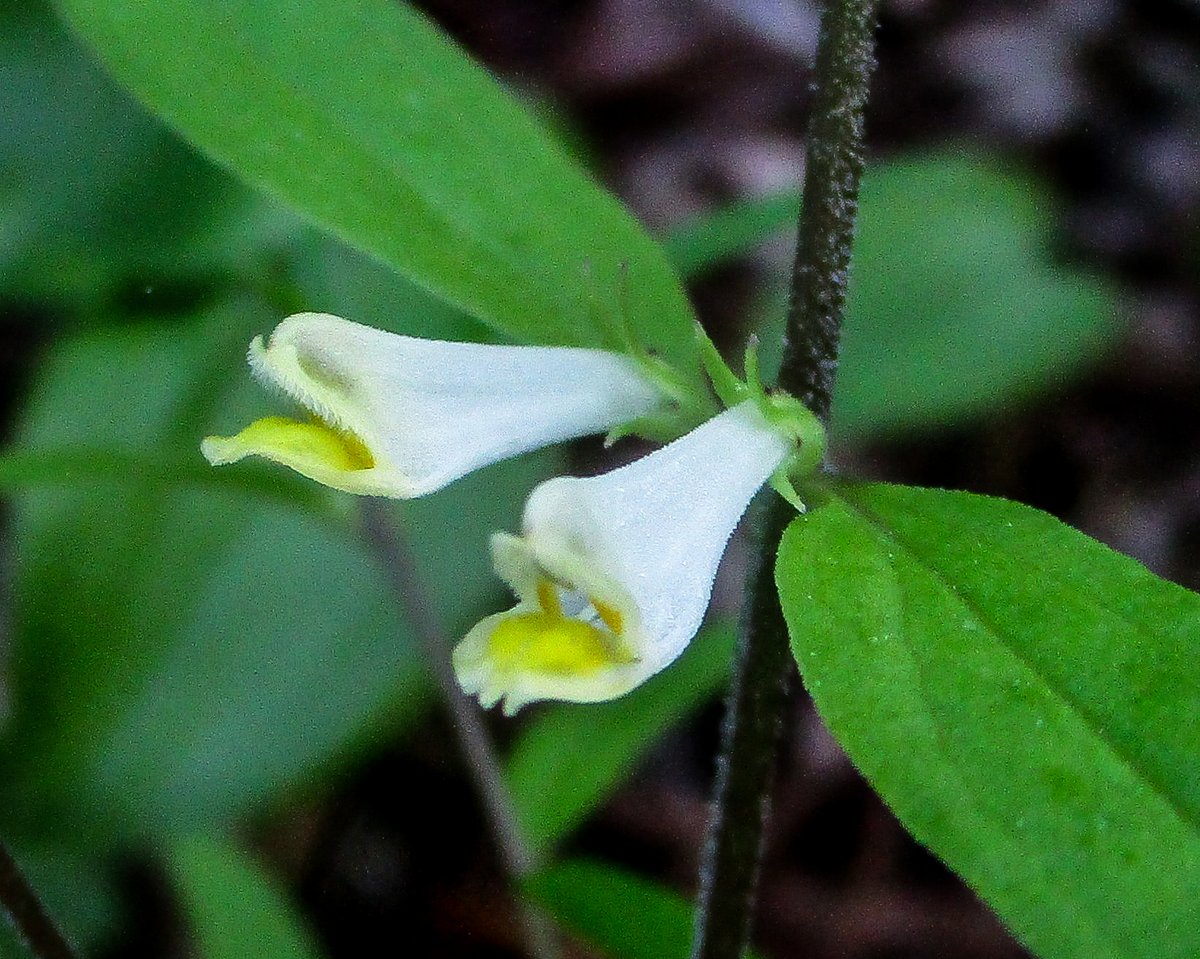

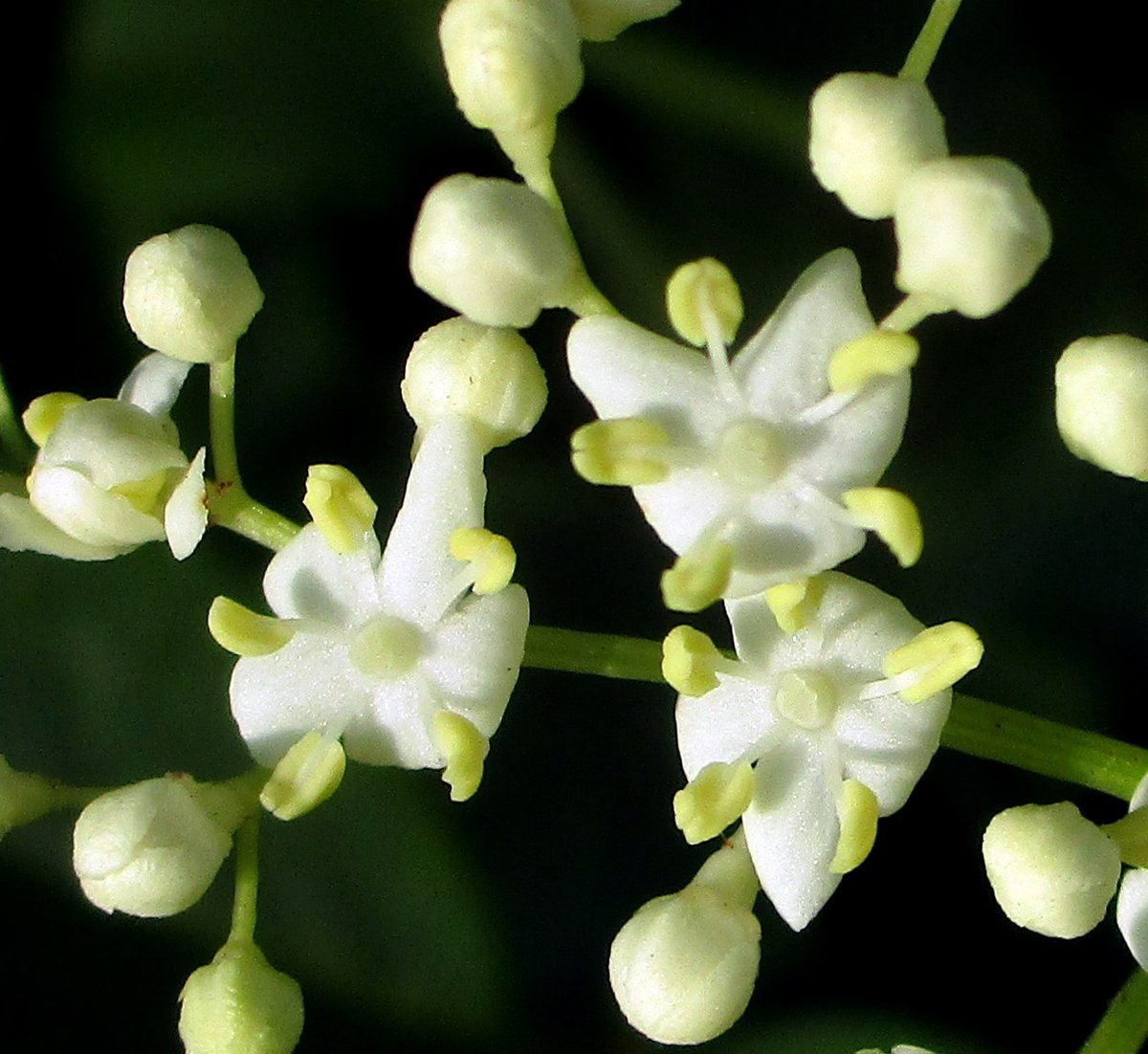
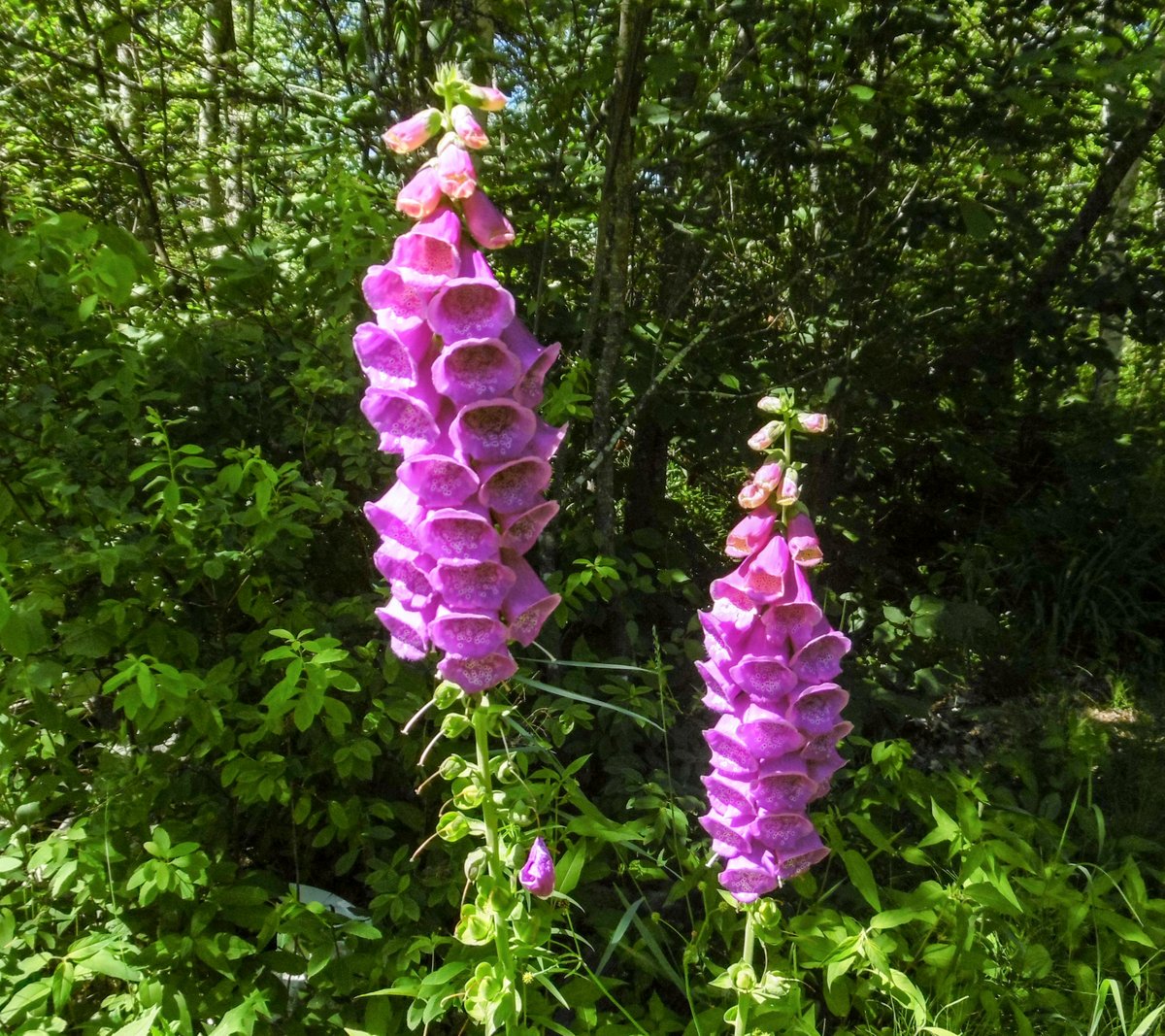
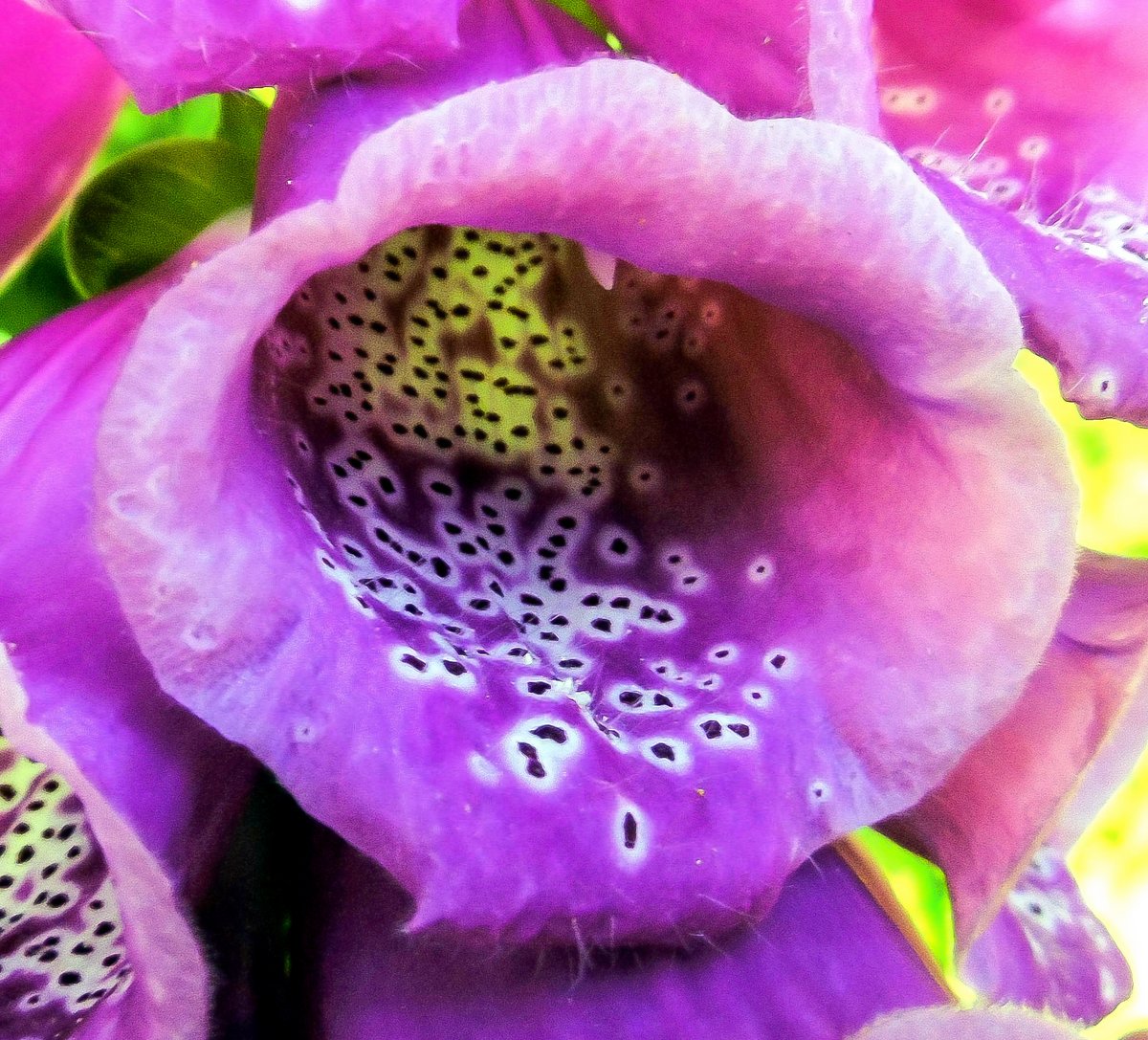

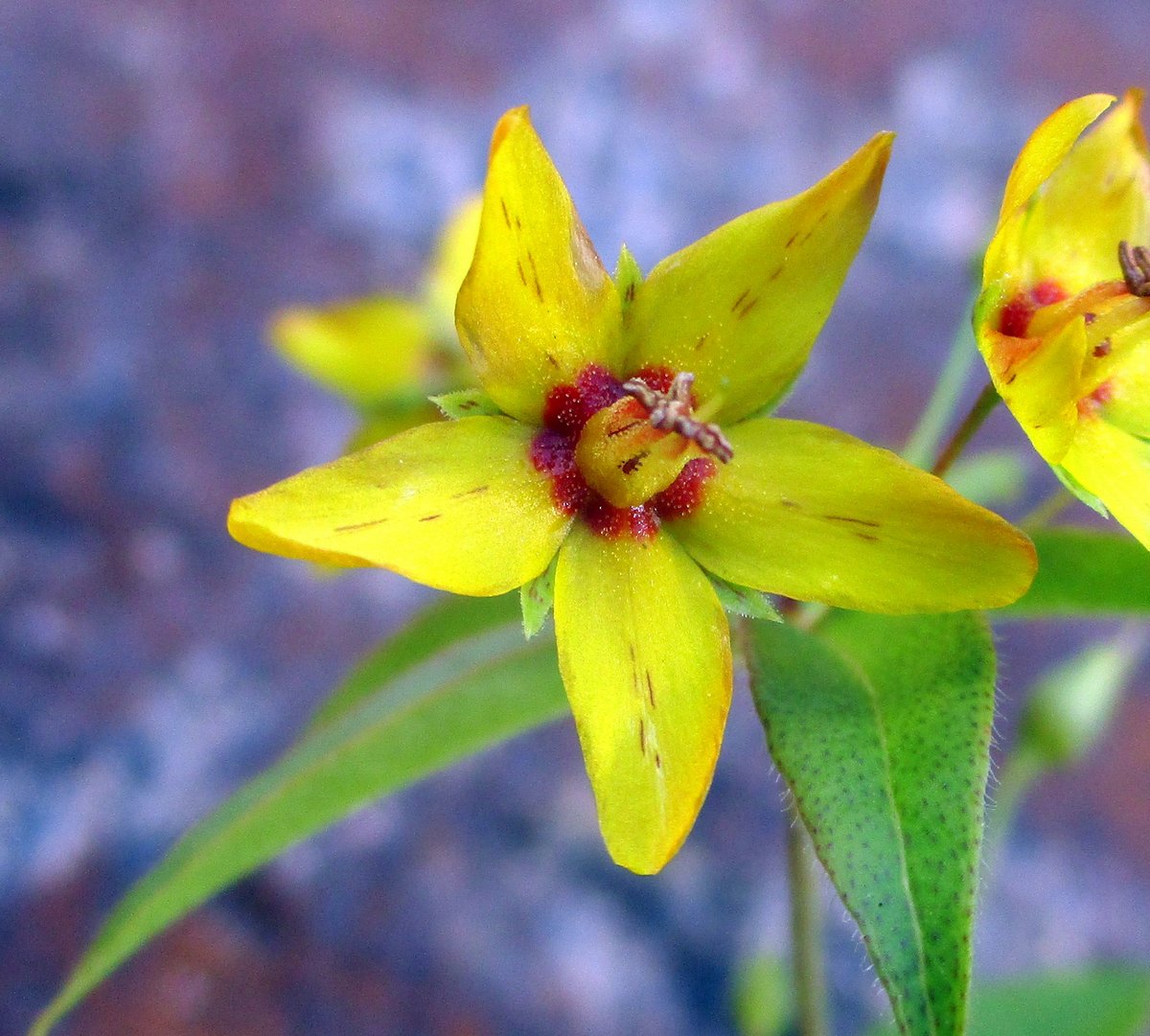
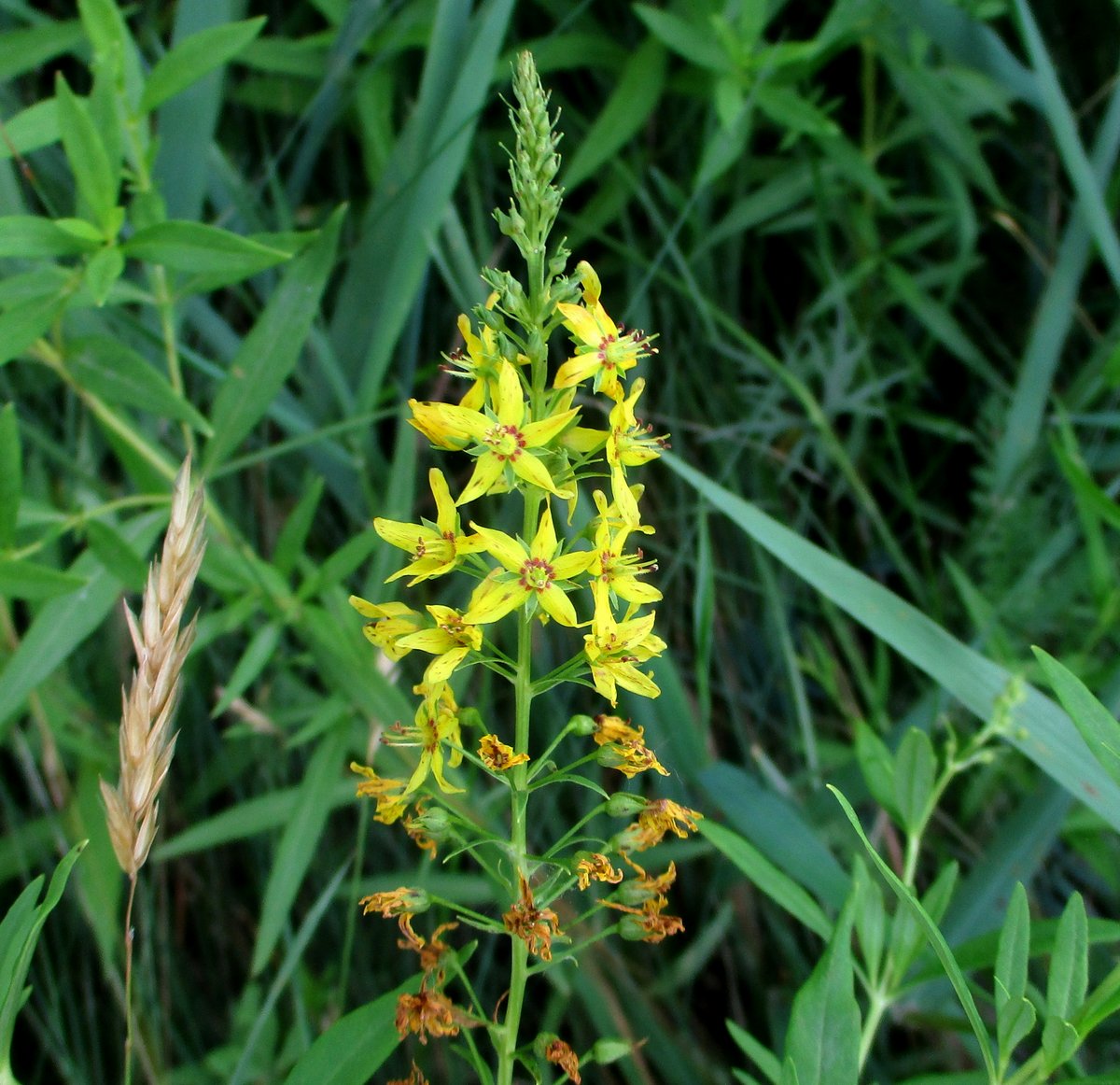
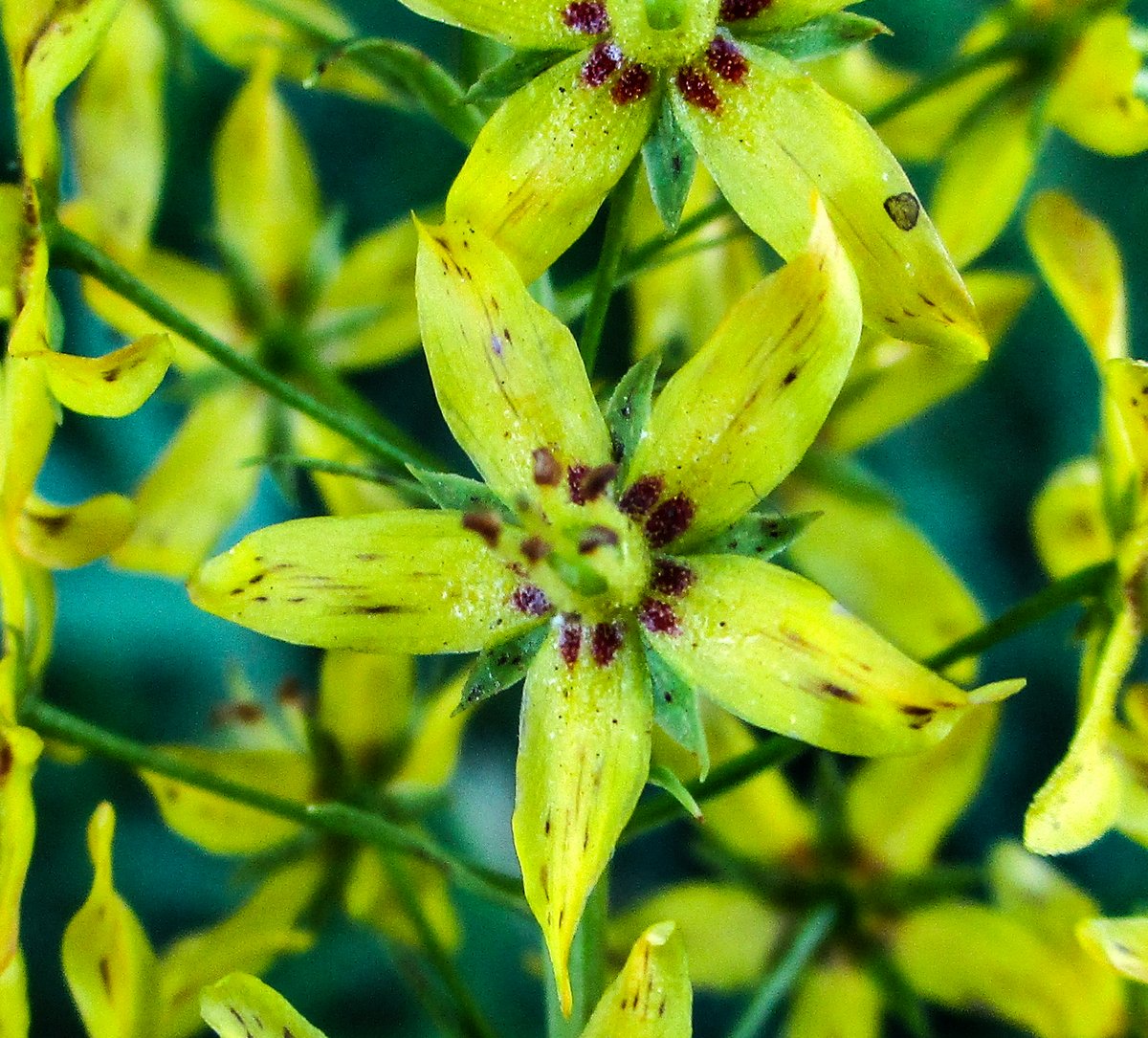
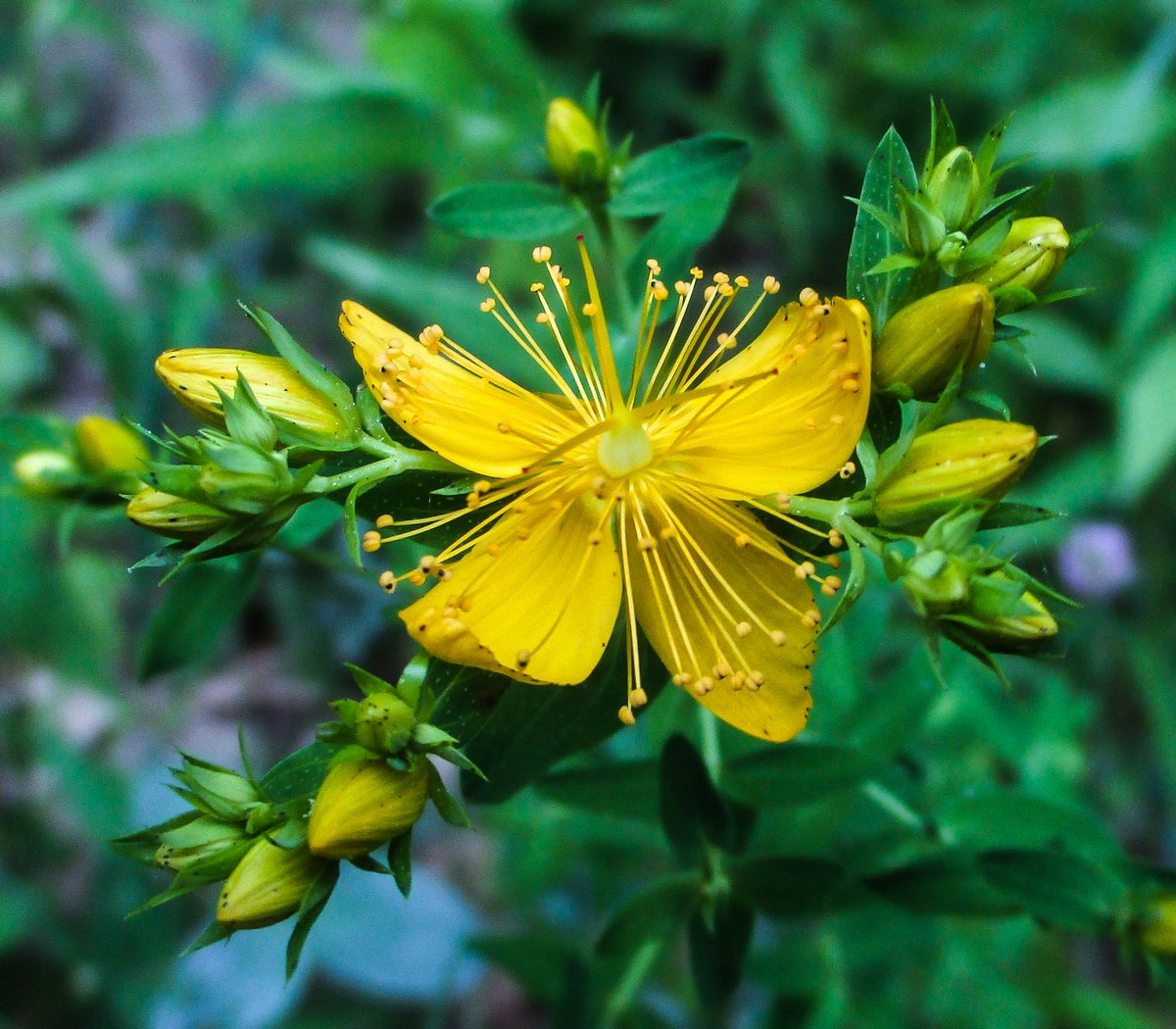

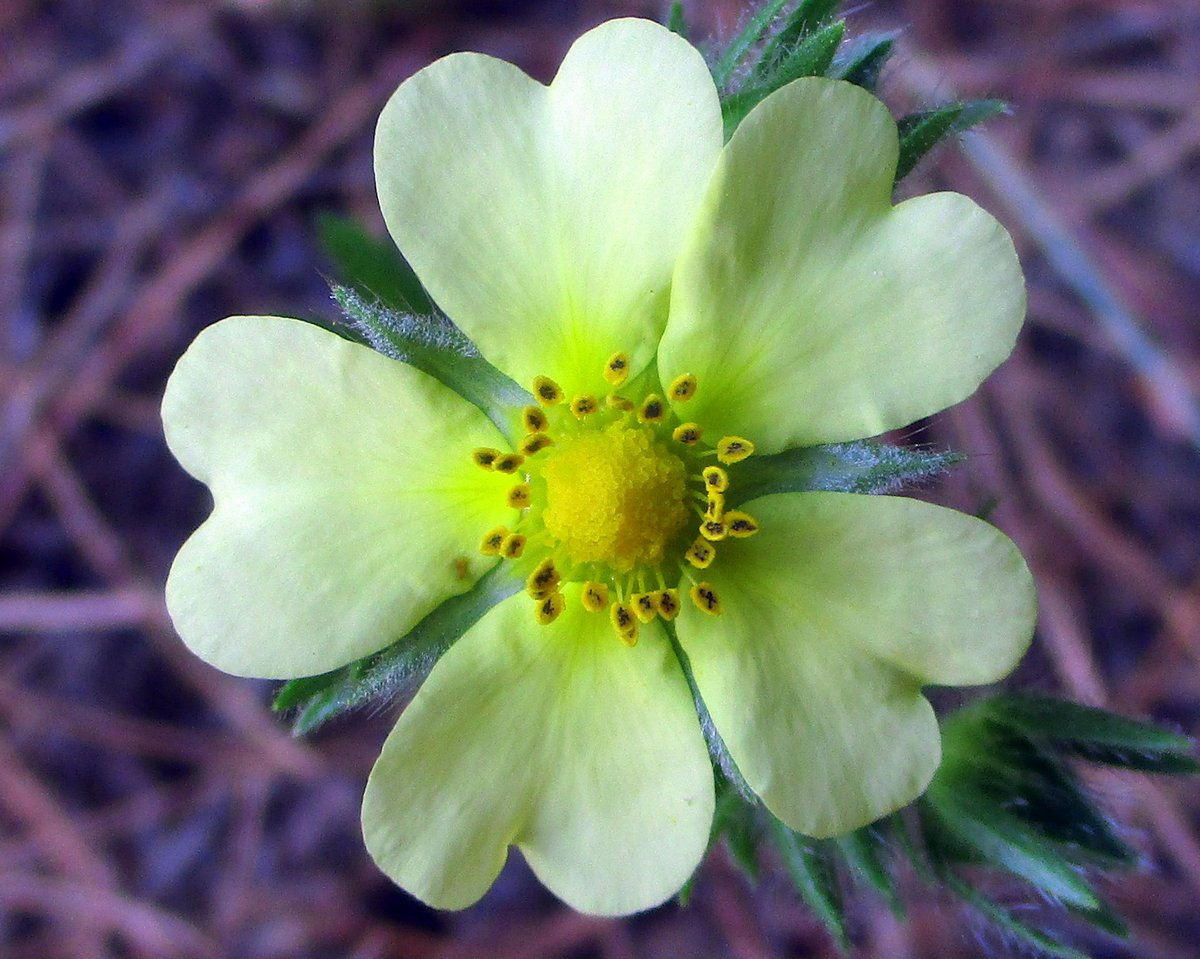
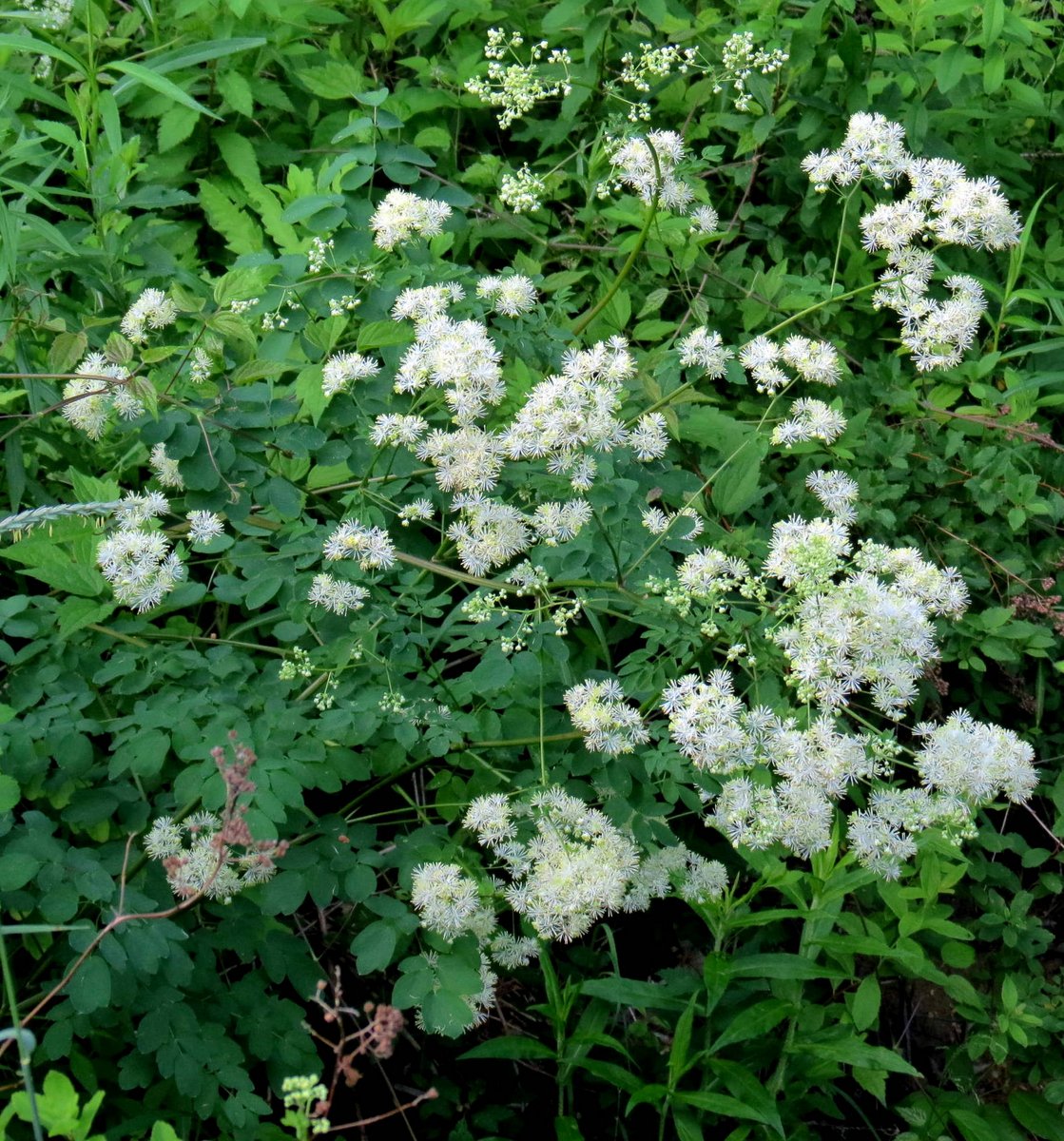

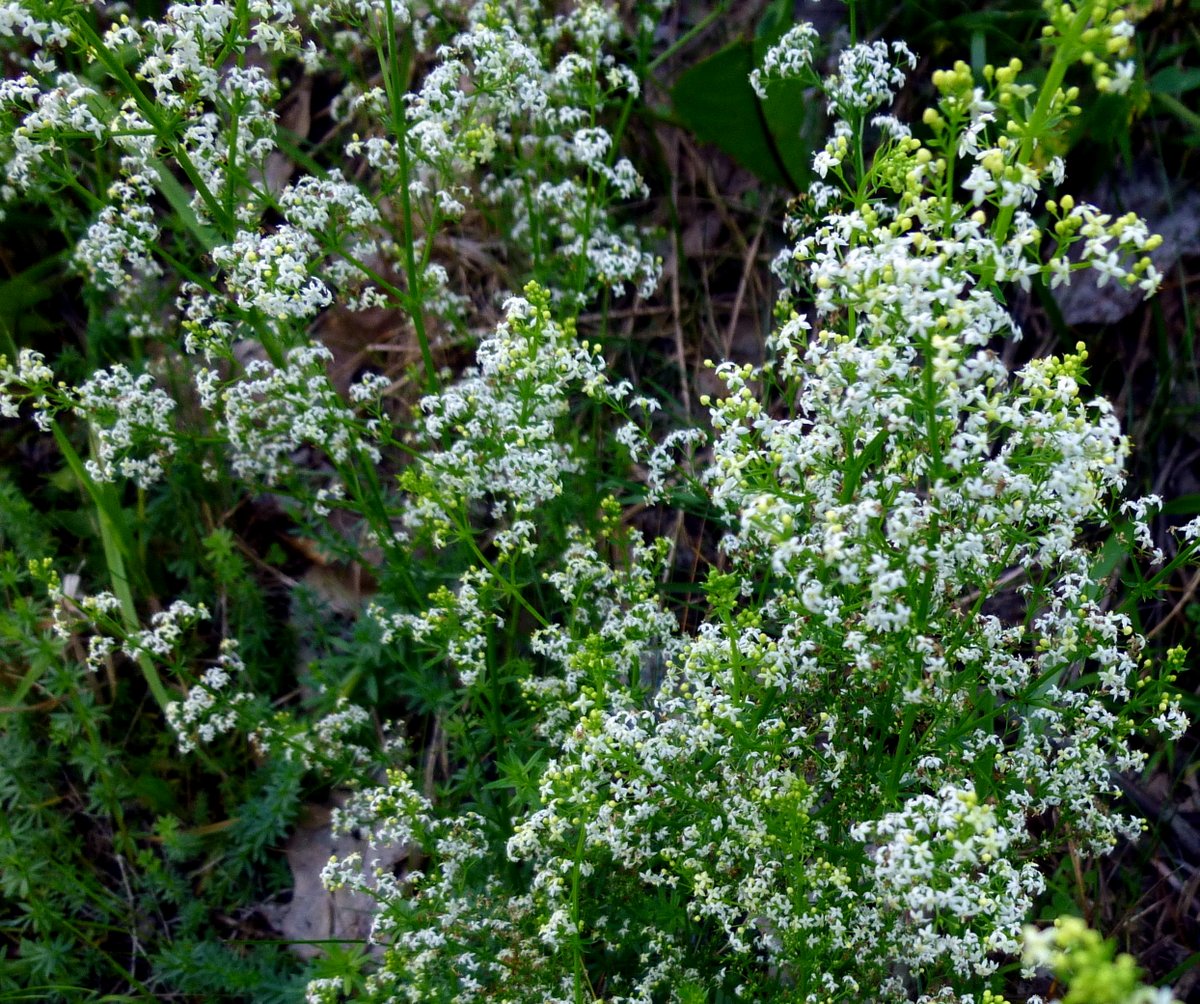
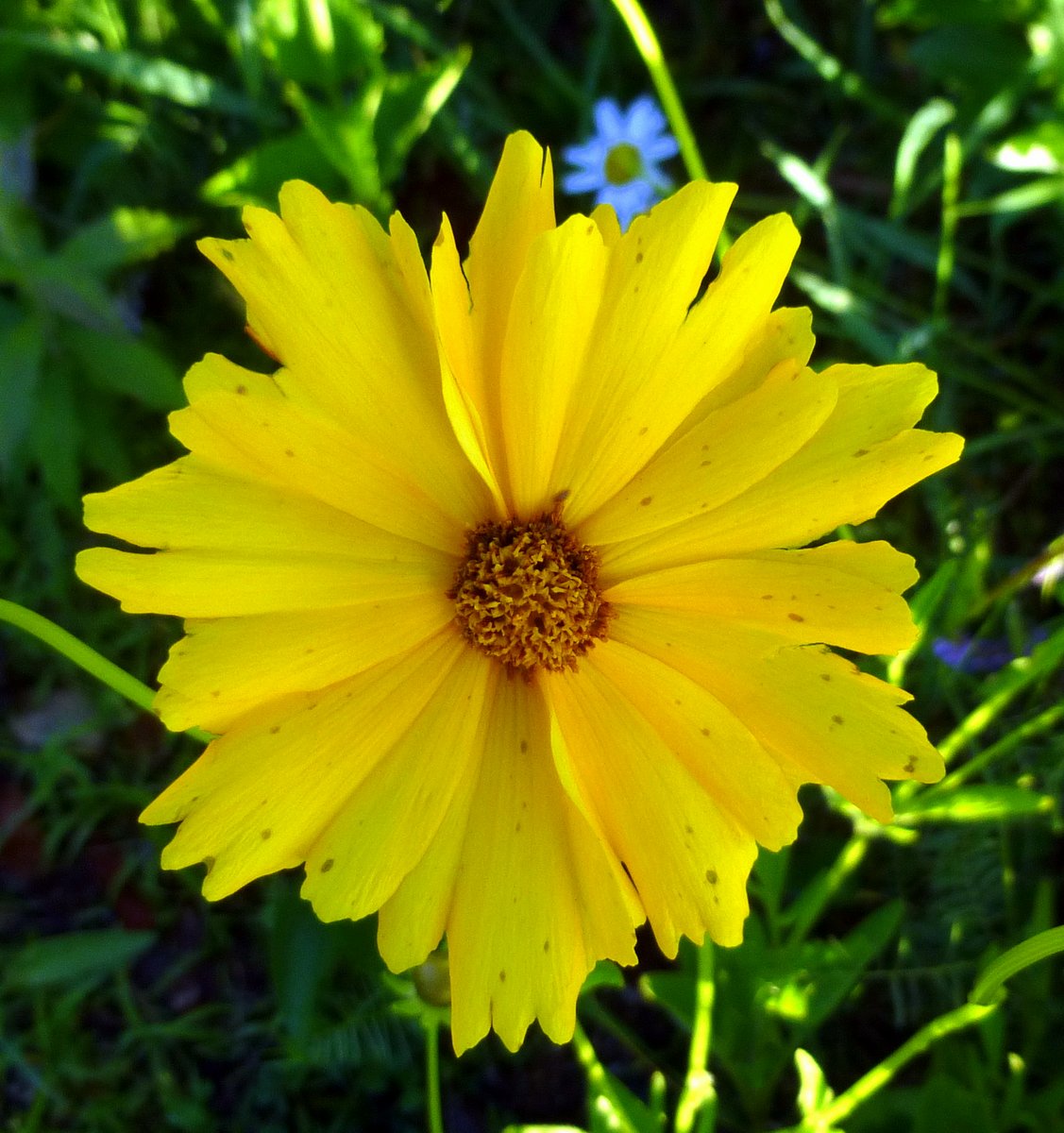

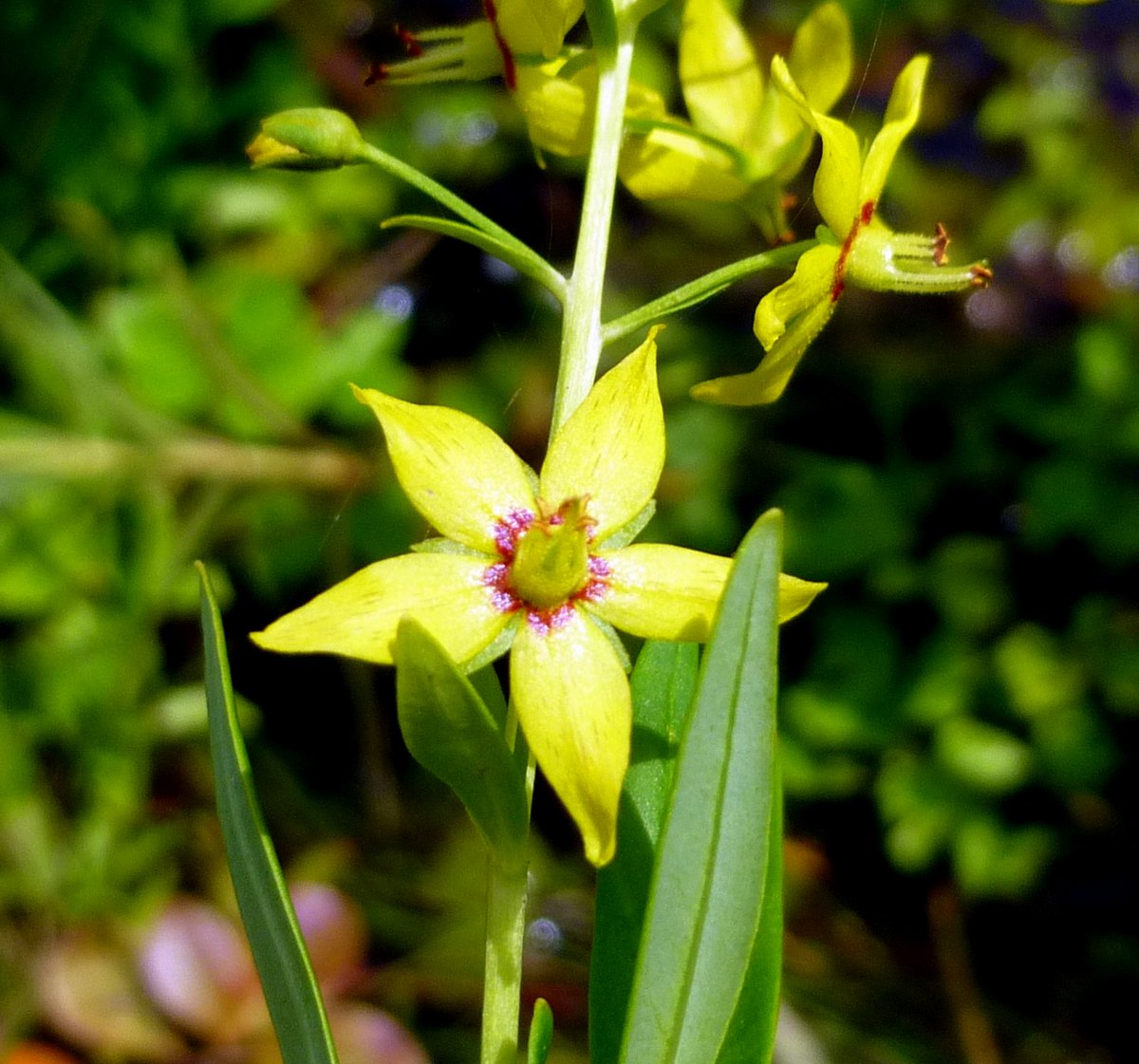
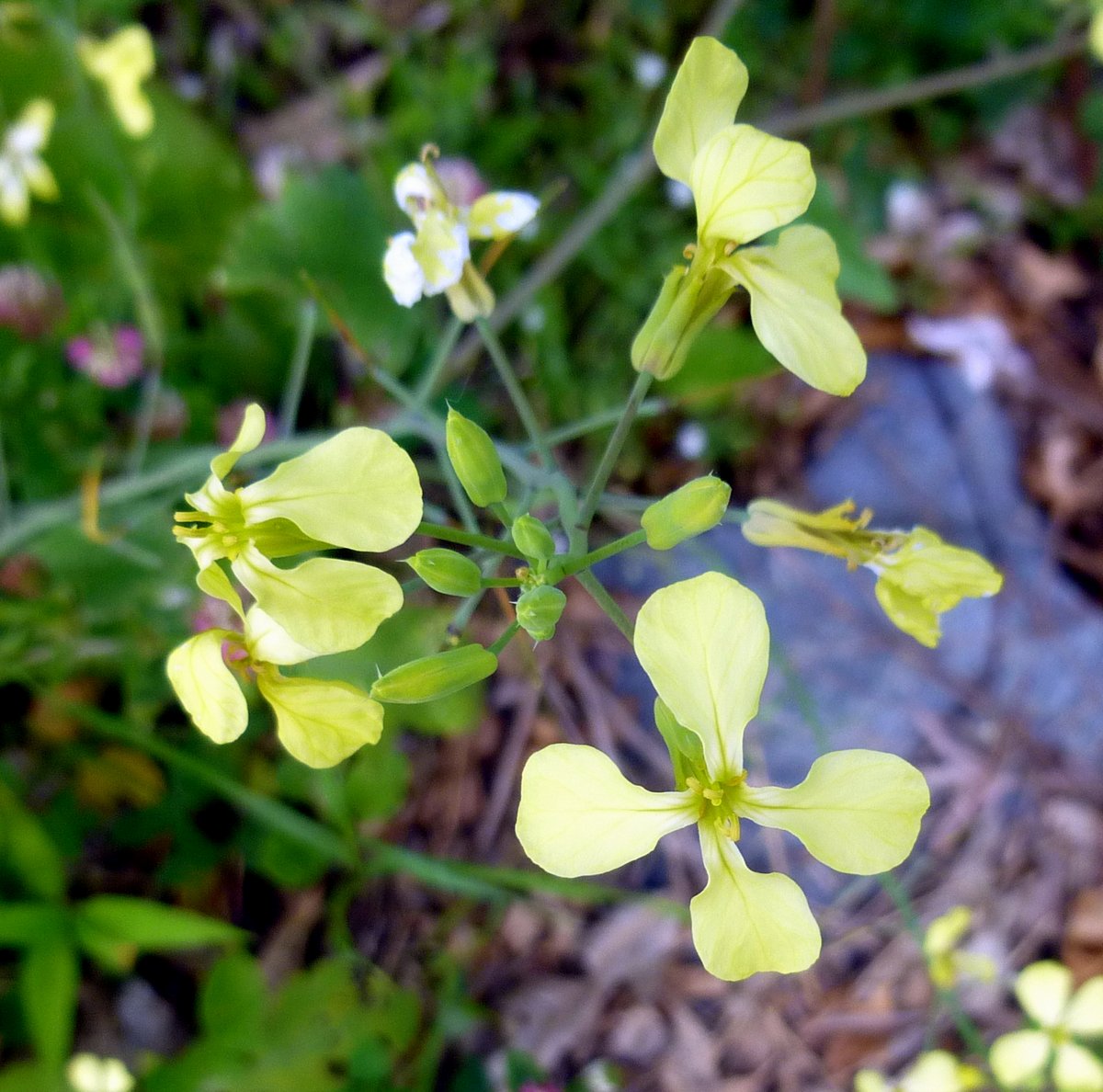
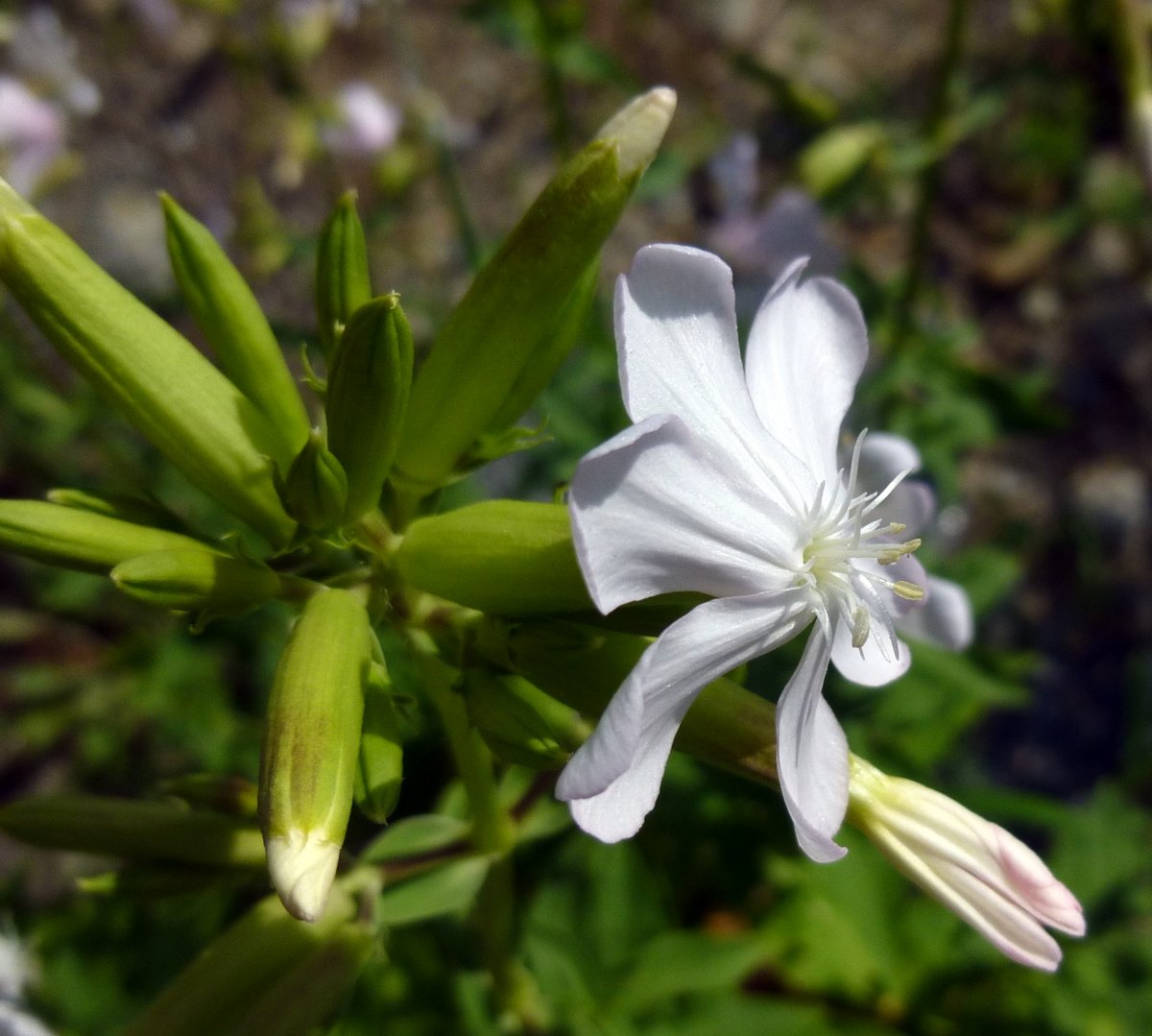
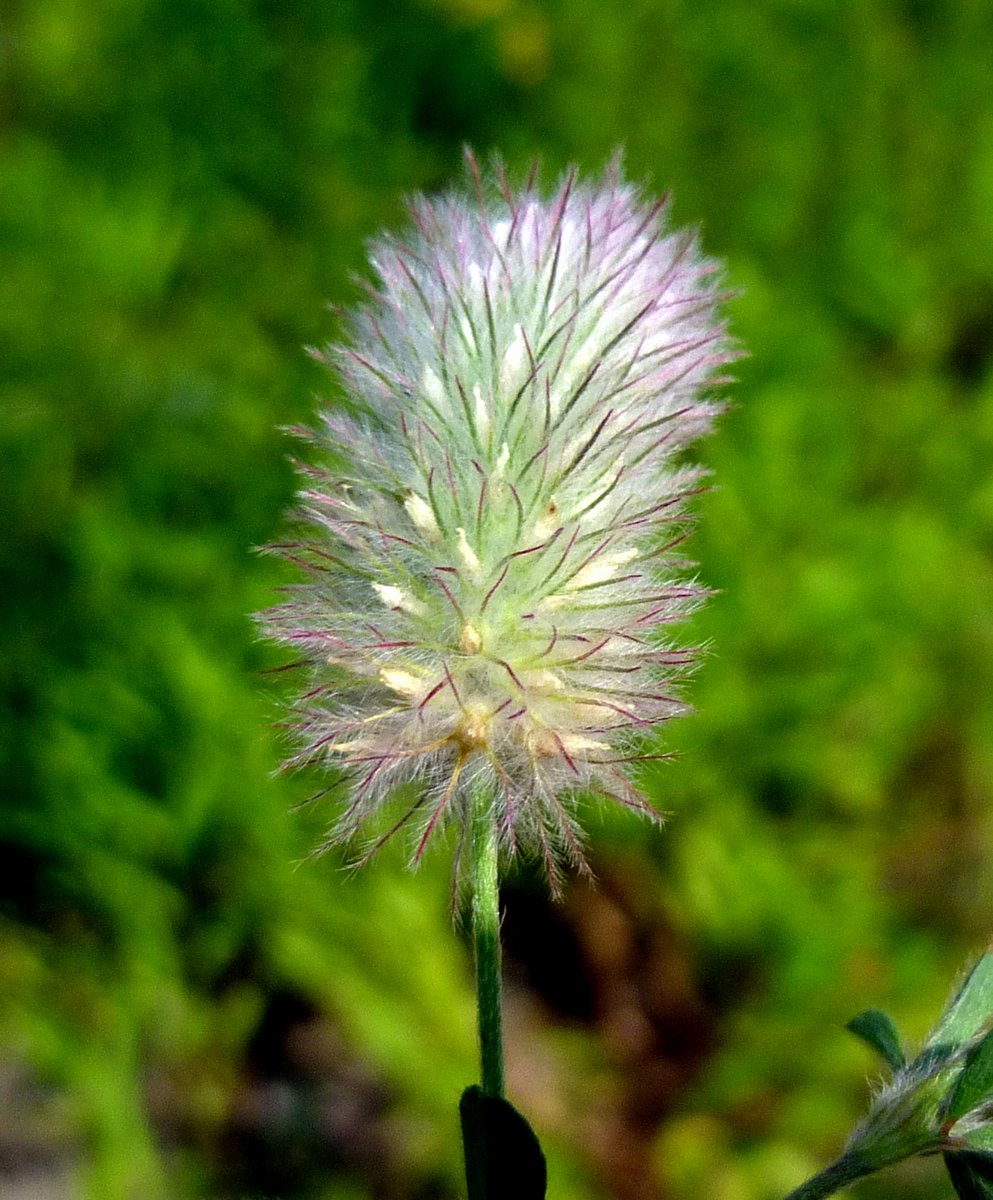
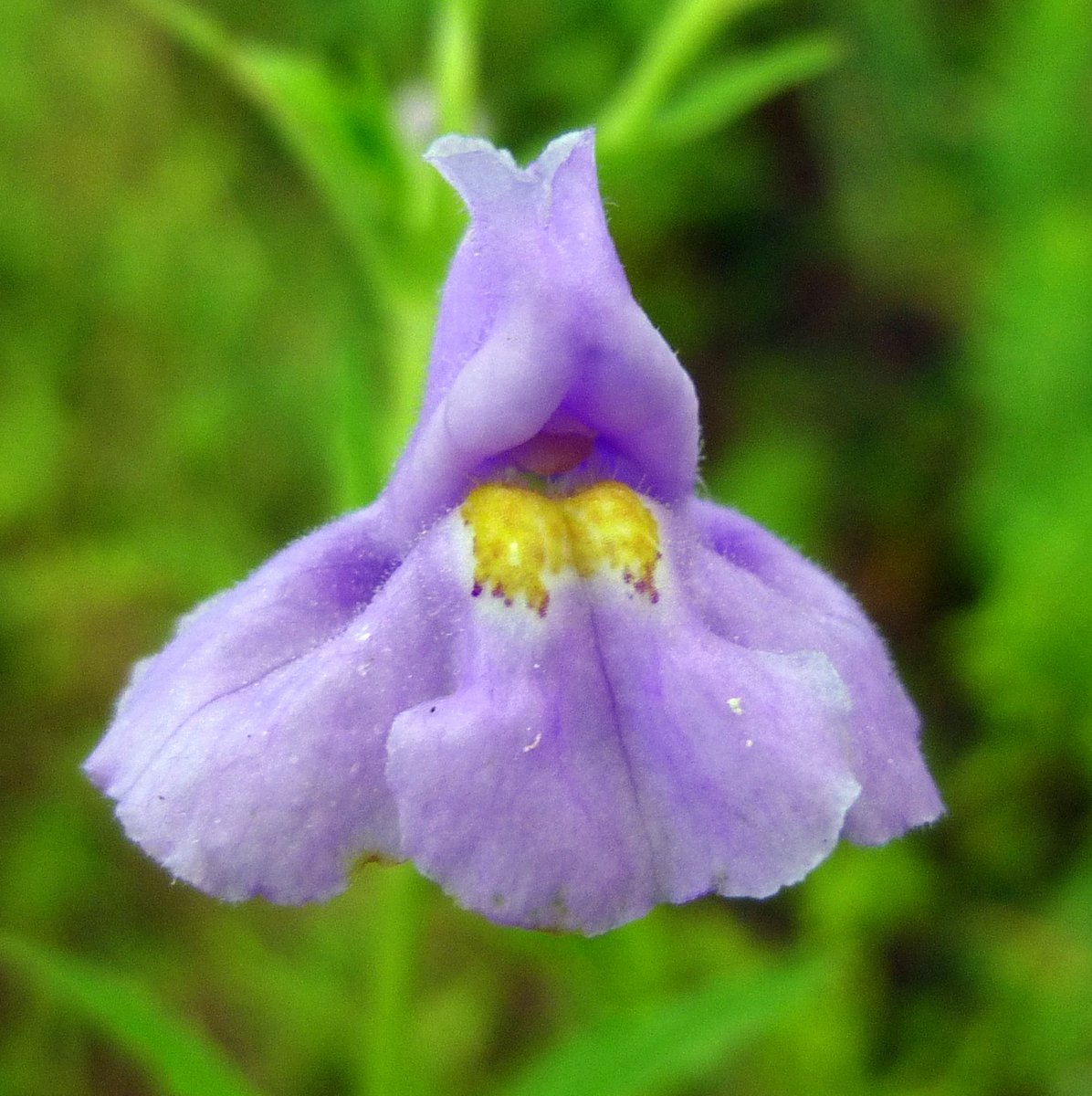
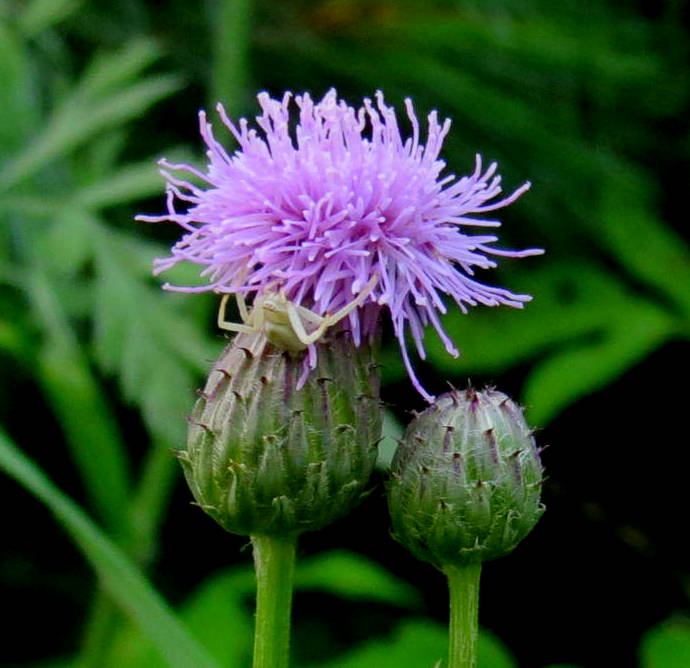
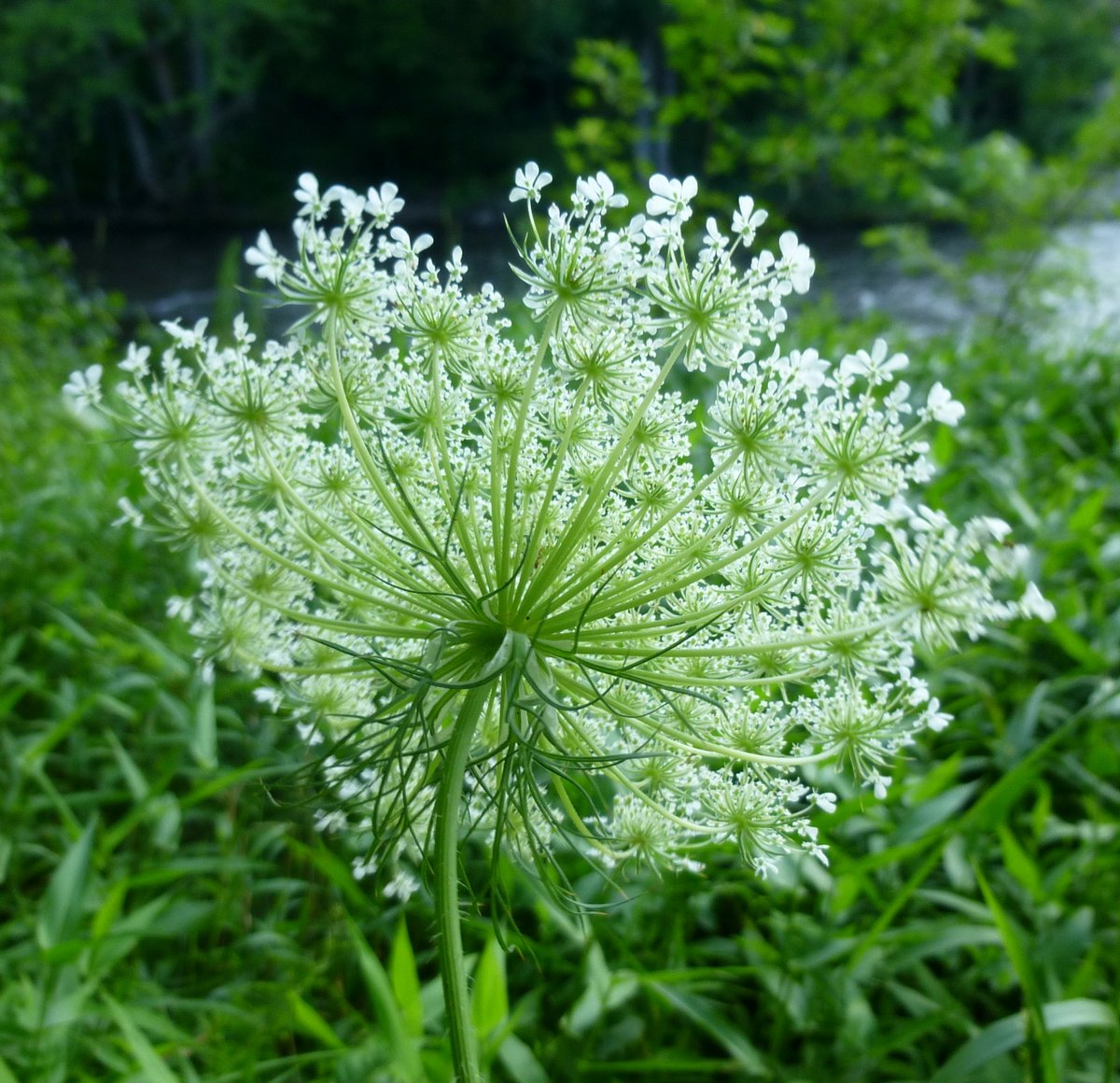
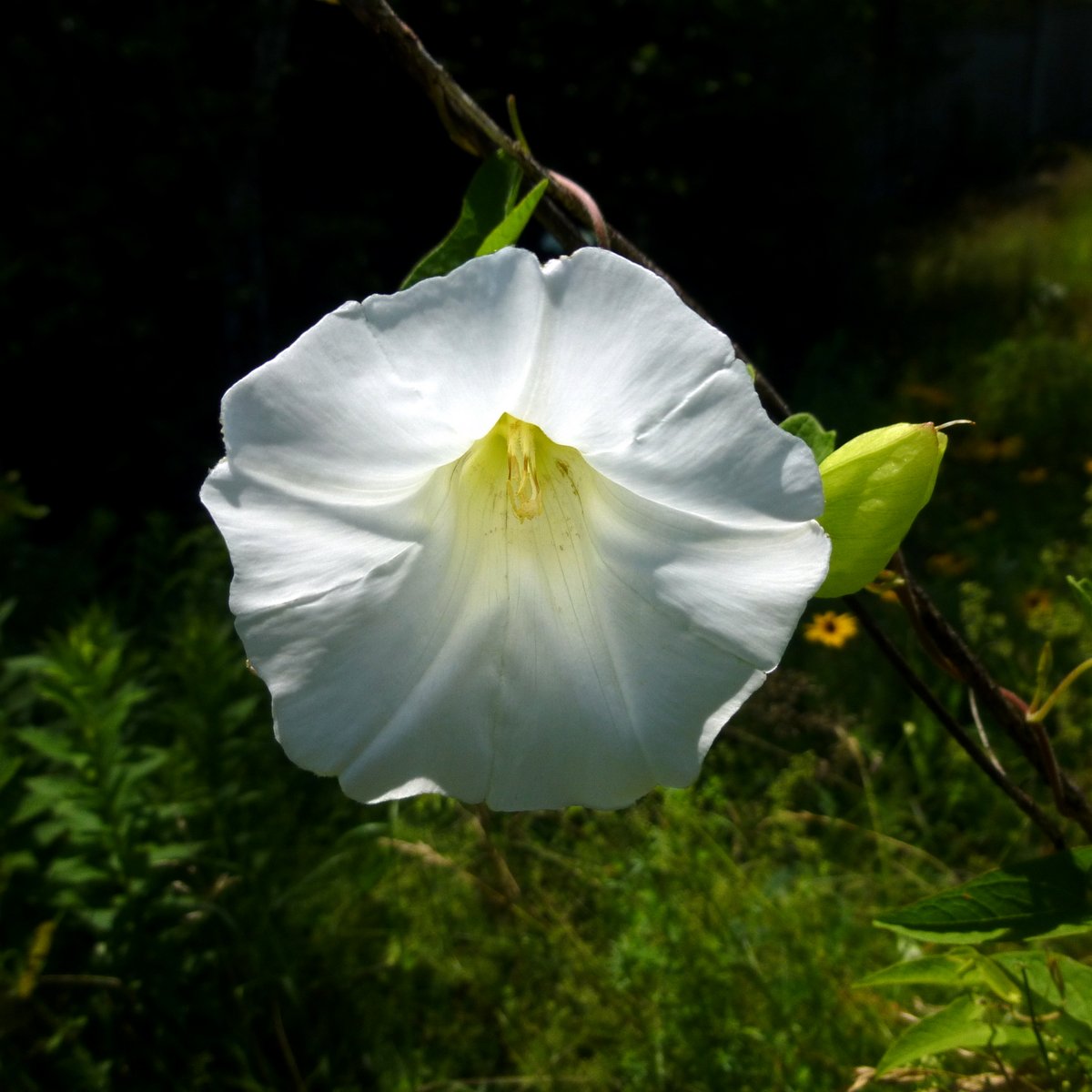
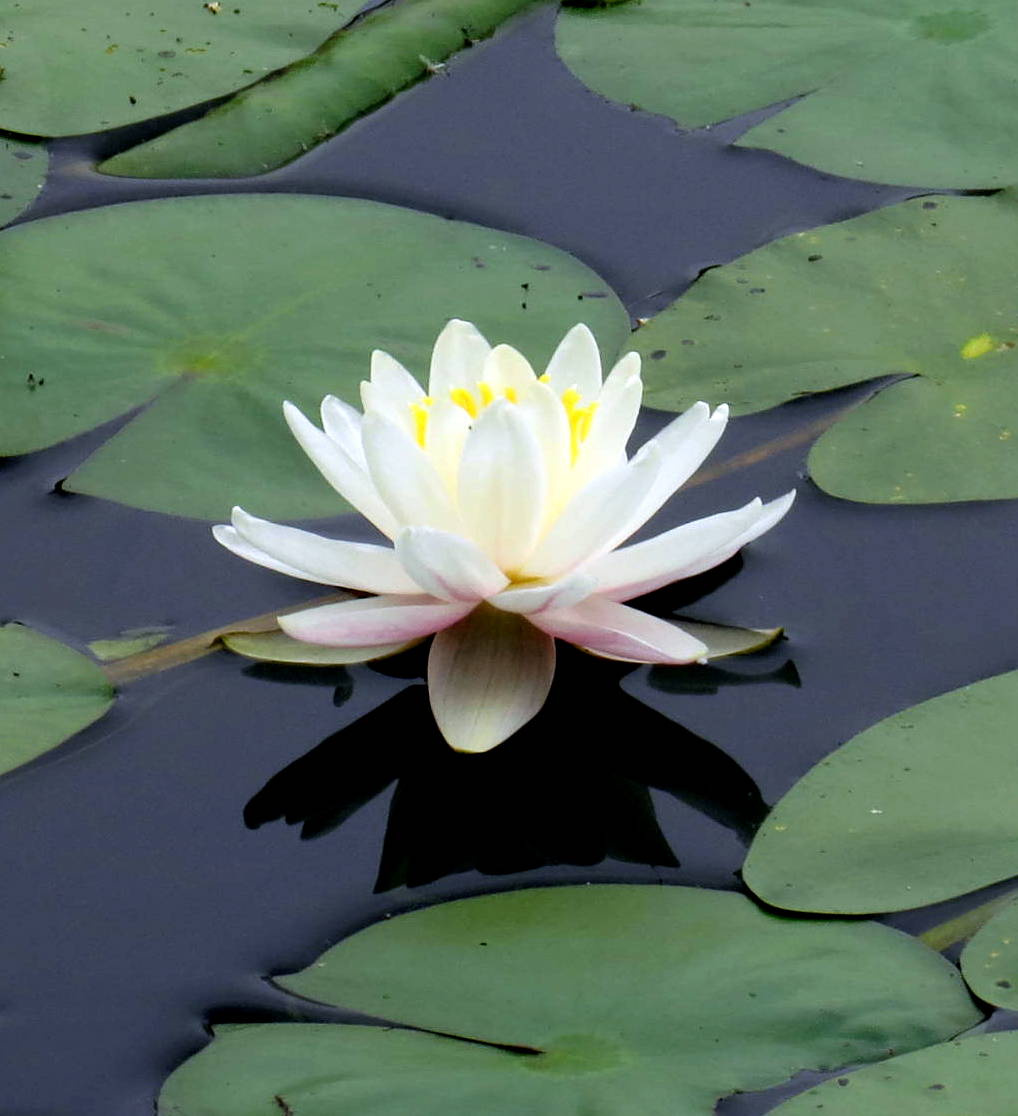
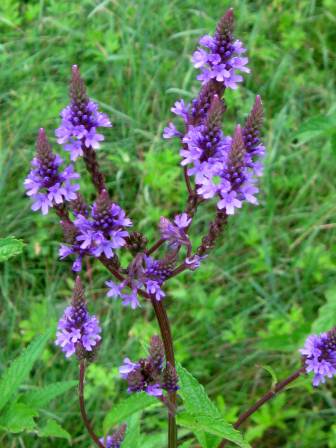
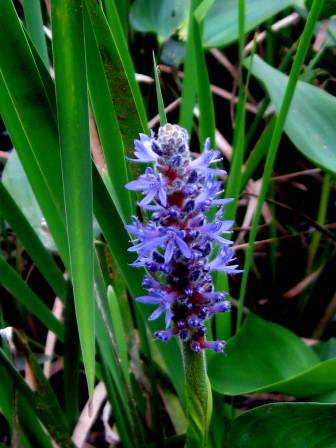
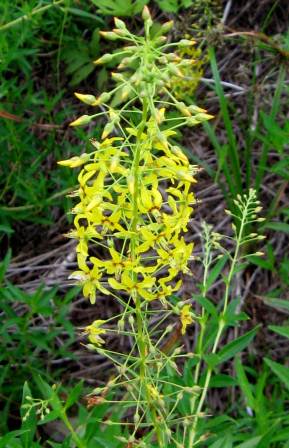
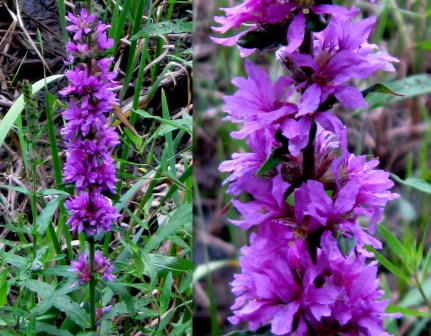
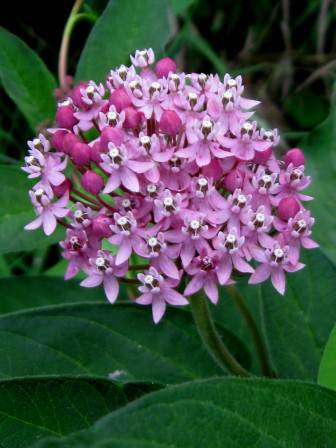
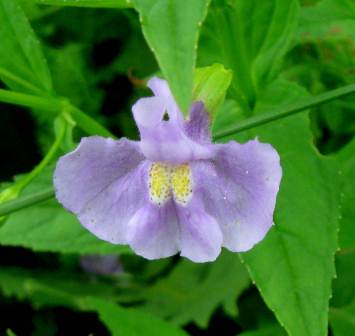
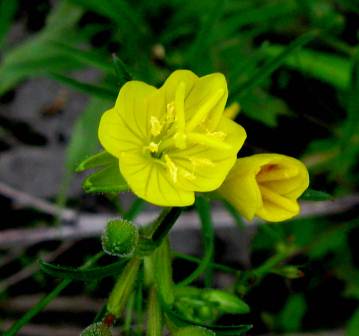
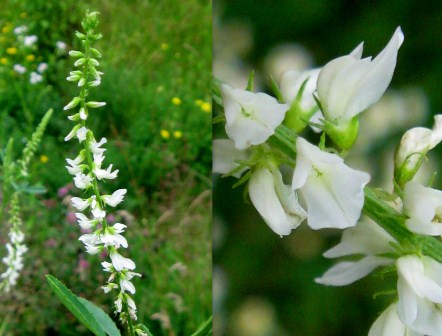
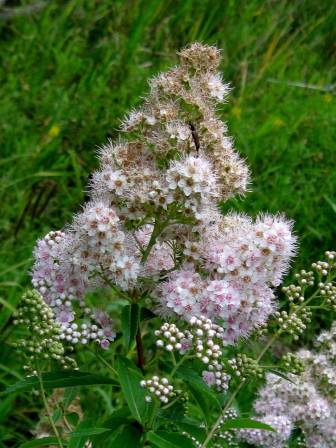 This native meadow sweet (Spiraea latifolia) shrub looks much like a spirea because that is exactly what it is. This woody shrub grows to about 3 feet tall and usually has white flowers, but occasionally they are pale pink like those in the photo. This is an unusual shrub because it prefers wet ground. There aren’t many shrubs that do. There is a very similar plant called hardhack but its leaves are hairy and those on meadow sweet are smooth.
This native meadow sweet (Spiraea latifolia) shrub looks much like a spirea because that is exactly what it is. This woody shrub grows to about 3 feet tall and usually has white flowers, but occasionally they are pale pink like those in the photo. This is an unusual shrub because it prefers wet ground. There aren’t many shrubs that do. There is a very similar plant called hardhack but its leaves are hairy and those on meadow sweet are smooth.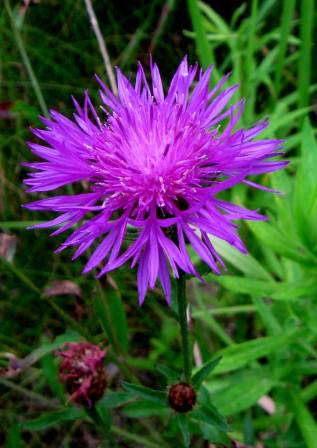
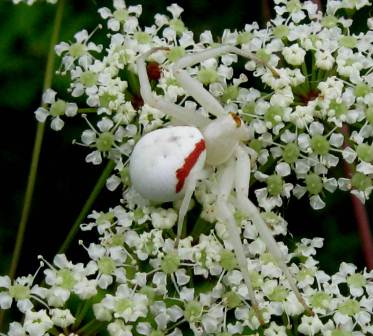 This pink and white spider with red racing stripes was crawling over a water hemlock blossom; a plant that is about as poisonous as they come. This is the female goldenrod spider, who is a member of the crab spider family. I didn’t know anything about crab spiders until I found one in a photo I had taken. It was strange because I didn’t see the spider when I took the photo, but fellow blogger jomegat explained that these spiders can change color. The goldenrod spider can change from white to yellow and back again. If it wasn’t for her red stripes, I probably wouldn’t have seen this one. Something I find particularly interesting about these spiders is that they don’t build webs. Instead they just blend into the flower color and ambush their prey. I’ll be a little more careful about where I put my nose from now on!
This pink and white spider with red racing stripes was crawling over a water hemlock blossom; a plant that is about as poisonous as they come. This is the female goldenrod spider, who is a member of the crab spider family. I didn’t know anything about crab spiders until I found one in a photo I had taken. It was strange because I didn’t see the spider when I took the photo, but fellow blogger jomegat explained that these spiders can change color. The goldenrod spider can change from white to yellow and back again. If it wasn’t for her red stripes, I probably wouldn’t have seen this one. Something I find particularly interesting about these spiders is that they don’t build webs. Instead they just blend into the flower color and ambush their prey. I’ll be a little more careful about where I put my nose from now on!